Shepherd’s Cottage was a surprisingly elusive place for a rendezvous. I thought I knew where it was, just off the road by Staverton Thicks, the rambling old woods we’d visited a couple of times before. I knew it as Thicks Cottage, but I thought that was just another name for the same place. So when we arrived on the doorstep a bemused woodsman put us right. “The Shepherd’s Cottage is back up where you’ve just come, then left along the track. Careful though, it can be a bit sandy down at the bottom.”
But the track was bumpy and overgrown, and our car was not built for off-roading. The field alongside looked much safer. We took a short cut through the pig farm and said good morning to the residents, then back on the road and followed it round to the sign for Shepherd’s Cottage. Only 30 minutes late!
The cottage is on the edge of Staverton Park, a private wood with no public access. We had arranged to meet Reg Harris from the Ancient Tree Forum and Gary Battell, Suffolk County Council forestry advisor and consultant to the owners of the park, who had both kindly agreed to show us around.
This extraordinary birch tree was pointed out as an example of a phoenix tree. It had grown inside the hollow trunk of an old oak tree, as if in a flower pot. The oak had died and rotted away, and the birch had collapsed but its branches continued to grow, so that they had become a grove of new trees.
Staverton is a place of two halves: the Thicks is a tangled wildwood where giant holly trees grow from hollow oaks; the Park has areas of wood pasture alongside rows and rows of lapsed oak pollards. The Thicks is public and the Park is private. We’d been to Staverton Thicks before but we’d only ever looked over the fence into Staverton Park. Today was a longed for day, a privilege to be allowed inside.
The oak trees greeted us like embodiments of time stood still. Eternal guardians exchanging breaths with us and offering the shelter of a green embrace. The light through the leaves is the kindliest light. These trees have filtered the light of centuries and become experts in the field, so that even on a dull day the light in here was still enchanted, and I wanted to capture all of it.
I could happily have photographed every single tree and not taken the same picture twice.
The Forest proper covers about three hundred acres of woodland, heath and waste. Most of the trees are oaks, which, by custom of the manor, were pollarded by the country people until an Enclosure Award abolished this right in the early nineteenth century. This topping and lopping, which seems to have been regularly carried out, accounts for the extraordinary shape of all but the younger trees and makes it extremely difficult to assess the age of the veterans. My guess is something between seven and eight hundred years.
There are no oaks here to compare with the enormous trees, such as Robin Hood’s oak, the Beggar’s oak in Bagot’s Park or those at Powis Castle: a girth of about twenty feet at three feet above the ground is probably that of the greatest tree in the Forest.
But, although this sounds meagre in comparison with trees of twenty-five and thirty feet found elsewhere, the effect of hundreds of trees of grotesque shapes always strikes the visitor very forcibly. He receives the impression of a place primaeval, and changeless except for the growth and decay of the trees through the centuries. It is a sensation supremely satisfying to those who, in these days of restless uncertainty, like to be assured that the age-old genius of the English scene abides.
I can describe this sensation only by comparison with other moments when I have felt it elsewhere; Stonehenge under a moon half seen through scudding clouds after a somewhat rowdy guest-night, the splendour of Downs and sea under a summer sky, the lonely saltings by starlight with the cry of wild geese coming fitfully down the wind.
Hugh Farmar: The Cottage In The Forest
Hank was also enjoying these meetings with remarkable trees.
Encounter is the act of recognising something: a planet, a woodland, a person. It’s the acknowledgement that there is something there which has the gift of life, self, soul, and the ability to surprise…
Encountering means really meeting something, in a way that goes beyond one’s intellectual process. So normally in the West, particularly as a scientist, as I am, one’s taught to encounter, say a tree, through one’s ideas. So, how did the shape of that tree come about through the process of natural selection? What might the forces have been that made, say the sycamore (or oak) leaf, the shape it is? And, you know, it becomes a sort of instinct when you’re a scientist and an ecologist, to look at Nature in that sort of way. That’s not encounter. Encounter is when that conceptual structure vanishes. And you actually meet the being, as the being, coming forth from itself, as itself, revealing itself to you in a way that is beyond your intellect. In a way that’s much more deeply intuitive, and much harder to express. In fact a scientific language is inappropriate for this kind of encounter. It’s poetry that does it. It’s a poetic encounter…
Dr Stephan Harding: Encountering Another Being
The Conference of the Trees
Staverton Park is a thirteenth-century deer-park. Looking down through the trees to the light of the distant pasture, I watched as the cows we’d seen earlier came running from right to left across the field of vision, with a baying stag chasing after. Zoom into the photograph and you might just see him.
Gary showed us an early photograph by an anonymous photographer,
then the same place 100 years later photographed by Oliver Rackham.
Sometimes a park still has its original trees. The supreme example is Staverton Park (near Woodbridge, Suffolk), a famous and awesome place of Tolkienesque wonder and beauty. The mighty and bizarre shapes of oaks of unknown age rise out of a sea of tall bracken, or else are mysteriously surrounded by rings of yet mightier hollies. Some of the birches and rowans, as well as the hollies, are nearly the largest recorded in the kingdom. Over-shadowed giants moulder in the twilit shade or lean half-fallen against other giants. Trees are rooted high in the crotches of other trees.
Staverton is a place of many ‘legends’ and fancies, and of real mystery; but it is not wildwood, nor a Forest, nor the death-place of the martyred King Edmund. It is a deer-park, well documented back to the 1260s. It has the typical outline, but is not early enough to have displaced the parish boundary. There are some 4,000 great oaks, many of them well over 400 years old; all are pollards last cut in the eighteenth century. There is an unexplained history of pollarding at different heights, involving also the hollies. Much of the ‘wildwood’ atmosphere of the Park results from the trees having fought each other since woodcutting (and for a time grazing) ceased. Staverton Park may well have been made out of an existing wood – there is one mentioned in Domesday Book – but its history is not simple; it is divided between two parishes, and by careful search I have found several faint banks which appear to result from whatever was there before it became a park.
Oliver Rackham: The History of The Countryside
We were in the northern section of the Park, close to the remains of an ancient earthwork known as Cumberland’s Mount, thought to have been used for deer management. There were traces of a ditch and an embankment with an entrance to an enclosure, otherwise known as a deer larder.
Reg knows a good photo opportunity when he sees one – ATF Tweet.
Hank’s photo of Gary, impressed by his eloquence and enthusiasm for this historic woodland, taken while he was telling us about the Nine Yard Oak and its position as a marker on the parish boundary.
They say that people who have no history are the happiest. To a degree this applies to places. There is singularly little known history of the Forest. As I have said, its origin is obscure; but recently, when no less a personage than the Director of Kew came to see it, his opinion was that it is a very ancient plantation. This was interesting because there is a legend that the land was leased for one crop to the Augustinians of the Priory, and that they planted acorns! If one allows for some bucolic humour, this tradition has considerable probability about it. A foundation important enough to ship the stone for its buildings from Normandy would think little of planting a three-hundred acre wood to provide building timber and fuel. The latter was likely to be the main use in a district where the ancient woods seem early to have disappeared, if indeed they ever existed.
And so I have had to abandon my favourite theory that the wood is a last relic of the old East Anglian primaeval forest. And, if we accept from the evidence of so august an authority that it was planted, we can by the same token (and from some calculations of girth and rate of growth from the same source) be fairly safe in assuming that the older trees date from some time in the twelve or early thirteen hundreds.
In very early days we know that the manor belonged to King John. It would be pleasant to think that the king, a keen hunter like all the Plantagenets, rode under the oaks. But, beyond the record of his ownership, handed down in the traditional name of King John’s Wood, there is no evidence that he ever visited this possession…
Whatever the Forest’s origin, there is nothing about it nowadays of a regularly planted or tended wood, though one can fancy that, in some places the trees stand in lines. I have mentioned earlier that the people of the Manor had the right of topping and lopping for fuel, a right possibly inherited from the use for which the forest was planted by the monks.
But the Enclosure Act of 1807 abolished the right, to the great disgust of the cottagers, no doubt. And since then the trees have not been touched. As a consequence they have grown into extraordinary shapes. Many are hollow. In some holly and elder seeds have taken root; so that there is the strange sight of a tree growing upon a tree.
Hugh Farmar: The Cottage In The Forest
It was Hank who saw it first, the strange sight of a birch growing upon an oak. This silver birch had taken root within the hollow core of the ancient oak. The two had merged so that the birch appeared to be a branch of the oak. Is this a symbiotic arrangement? Is the birch a parasite or a phoenix tree?
The fungus bursting from the base of the tree attracted a lot of attention.
I was intoxicated, stumbling around, pointing my camera wildly, overwhelmed by so much beauty.
Twin wood sprites.
A curious toadstool or the partial remains of a wasp nest?
This hollow was buzzing with wasps.
Most of the Staverton Oaks are so near death that they seem to be nothing more than gnarled drums for the gales to beat. Yet so tenacious is their hold on life that the twigs sprouting from them are still April green, and come August, ‘Lammas’ growth will hide some shrivelled bole.
Ronald Blythe: The Time By The Sea
The lookout: the watcher in the tree.
Never before have I walked among such a congregation of lapsed oak pollards. Everywhere was variety and cooperation, abundance and integration, a slow-motion call and response from tree to tree amongst this most fortunate company of oaks. Thank you Gary and Reg for an unforgettable tour!
※
As we said our goodbyes, Hank asked our guides if there were any other significant trees nearby. And so, after lunch at the recently reopened Oyster Inn, we found ourselves by Butley church admiring this spectacular black poplar. I think of poplars as tall, slender trees but this broad, spreading tree looked more like an oak. But as we approached it sounded like a poplar, as the wind rattled its triangular leaves. I later learned that it’s increasingly rare and probably our most endangered native timber tree.
And what made the day extra special was that Lottie and Maura got to come too. Days like this happen less and less the older they become. Although they’re now in their fourth decade and both have responsible jobs, they can’t help but still behave like kids when we’re out together. Or maybe they’re throwing some capoeira shapes. (For the purposes of this blogpost they reminded me that it was they who first coined the term Hamer the Framer. There was even a song but I’ve forgotten the words.)
※
Our next stop was just up the road at Snape Maltings for FlipSide 2017, a Latin American arts festival, where Grupo Senzala were performing music for capoeira. We were almost tempted to join in.
Next door, in the Dovecote Studio, there was an exhibition by Jelly Green.
Jelly Green: Florestas
Jelly Green is a figurative painter who lives and works in London and Suffolk. During 2015 and 2016 she spent four months living and working in a treehouse in the Brazilian jungle – ‘Florestas’ is the result of that time, an exhibition of watercolours painted in the rainforest, representing a landscape exploding with life and colour.
It takes a lot of courage to disappear for nearly three months, deep into the Amazon rain forest, armed only with large rolls of art paper and supplies of watercolour paint but this is what rising Suffolk artist Jelly Green has done and the results of her adventures are now on display at Snape Maltings Dovecote as part of this weekend’s FlipSide Festival.
Jelly, who has been mentored by Maggi Hambling since the age of 16, has produced an exhibition of highly detailed, intensely atmospheric jungle landscapes which combine colour, light and space to create almost three-dimensional views of her rain forest hideaway.
It’s a world away from Suffolk and that’s why she wanted to go and explore a new environment and just lose herself in her work.
“It’s a really magical place but very remote, so it wouldn’t be for everybody.
“I went twice, once in 2015 and then again in 2016, and lived on my own in a treehouse in the forest for a couple of months each time. I originally thought that the watercolours would be preparatory works for larger oil paintings which I would work up back in my studio in Suffolk, but some friends of mine who are involved in FlipSide saw them and thought they should be shown because pictures of a Brazilian rain forest would be a perfect fit for a festival with a green agenda and links to Latin America.
“The rain forest is a wonderfully rich place and it needs to be looked after. It’s not only the lungs of the world but 25% of the world’s medicines are developed from plants which only exist in the rain forest.
“A report I was reading the other day estimated that less than 1% of the plant life in the rain forest has been properly researched so who knows what other cures are waiting for us to discover?”
Jelly said that all the works were completed in situ sometimes with the help of local wildlife. Some of the works exhibit traces of insect life moving the still wet paint around and one large painting of the forest floor had a snake slither its way across it.
“I was caught up in what I was doing, completely bound up in the moment, when I became aware that this giant two-and-a-half metre snake was making its way across my sheet of paper. I took a step back, it stopped, looked up at me, and then ever so casually continued on its way.”
She said that moments like this made a huge impression on her.
“When I got the paintings out to get them framed for the exhibition I felt a huge pang of nostalgia because I hadn’t seen them for a while. They took me straight back to that time I spent there, living alone in this treehouse in this vast forest.”
She said that she stayed on a protected piece of forest and apart from a few estate workers she had no human contact at all.
“The first time I went there were about six people working in the forest but the second time I didn’t see anyone at all for almost a week and it did really freak me out. I was really pleased to finally see someone – even at a distance.”
She said that the biggest challenge was not the loneliness or the wildlife but the humidity. At times it was 100% humidity and the watercolours just wouldn’t dry.
“I remember when I came to leave putting the sheets out in the sun trying to get them to dry before I rolled them up to take home.”
One of the most impressive aspects of Jelly’s work is the scale of her watercolour sketches. As a viewer you feel a part of the glade or clearing that she is working in.
Her work is presented in an almost cinemascope format with leaves and vines, in varying shades of green and silver, weaving themselves into fantastical shapes.
The flowers almost sing with their vibrant colours as insects cluster around them. This is an immersive art experience. You feel enveloped by this untouched landscape which is exploding with life and colour.
Jelly said that hanging the exhibition in Snape’s dovecote building will be a challenge but a chance to hang her work on several levels which will simulate the height and all encompassing world of the rain forest.
“Rain forests are the last mysterious places left on the planet, other than the deep oceans, and we must protect them, there are so few of them left.”
Andrew Clarke: East Anglian Daily Times
Jungle Vines
The Undergrowth
Maris Garden
Jungle Tangle
Maura spent six months in Brazil learning capoeira so she and Jelly swapped jungle stories.
– Through the rainforest –
It had grown uncommonly sultry and dark when at midday, after resting on the beach, I climbed to Dunwich Heath, which lies forlorn above the sea. The history of how that melancholy region came to be is closely connected not only with the nature of the soil and the influence of a maritime climate but also, far more decisively, with the steady and advancing destruction, over a period of many centuries and indeed millennia, of the dense forests that extended over the entire British Isles after the last Ice Age. In Norfolk and Suffolk, it was chiefly oaks and elms that grew on the flatlands, spreading in unbroken waves across the gently undulating country right down to the coast. This phase of evolution was halted when the first settlers burnt off the forests along those drier stretches of the eastern coast where the light soil could be tilled. Just as the woods had once colonised the earth in irregular patterns, gradually growing together, so ever more extensive fields of ash and cinders now ate their way into that green-leafed world in a similarly haphazard fashion. If today one flies over the Amazon basin or over Borneo and sees the mountainous palls of smoke hanging, seemingly motionless, over the forest canopy, which from above resembles a mere patch of moss, then perhaps one can imagine what those fires, which sometimes burned on for months, would leave in their wake. Whatever was spared by the flames in prehistoric Europe was later felled for construction and shipbuilding, and to make the charcoal which the smelting of iron required in vast quantities. By the seventeenth century, only a few insignificant remnants of the erstwhile forests survived in the islands, most of them untended and decaying. The great fires were now lit on the other side of the ocean. It is not for nothing that Brazil owes its name to the French word for charcoal. Our spread over the earth was fuelled by reducing the higher species of vegetation to charcoal, by incessantly burning whatever would burn. From the first smouldering taper to the elegant lanterns whose light reverberated around eighteenth-century courtyards and from the mild radiance of these lanterns to the unearthly glow of the sodium lamps that line the Belgian motorways, it has all been combustion. Combustion is the hidden principle behind every artefact we create. The making of a fish-hook, manufacture of a china cup, or production of a television programme, all depend on the same process of combustion. Like our bodies and like our desires, the machines we have devised are possessed of a heart which is slowly reduced to embers…
W G Sebald: The Rings of Saturn
There were more wise words inside the concert hall…
And Hank communed with Barbara Hepworth’s Family of Man. It was a great day out.
※
If you liked this you might also enjoy Staverton Thicks, The Sky At Snape, A Walk In The Woods.


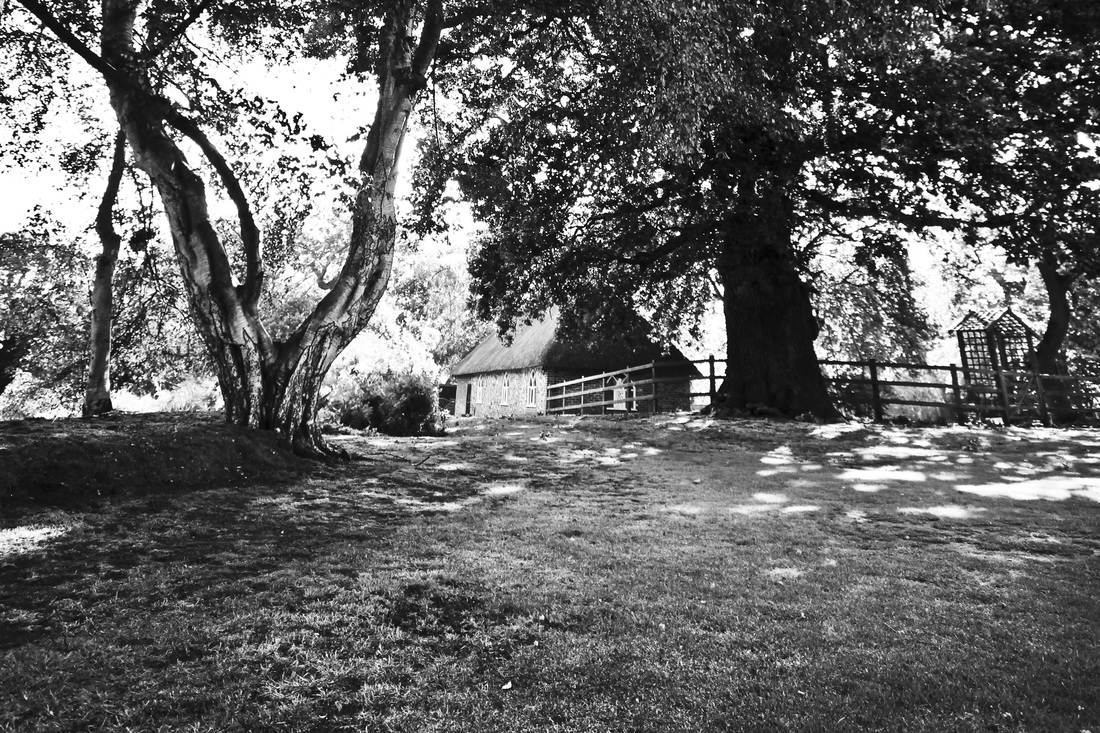



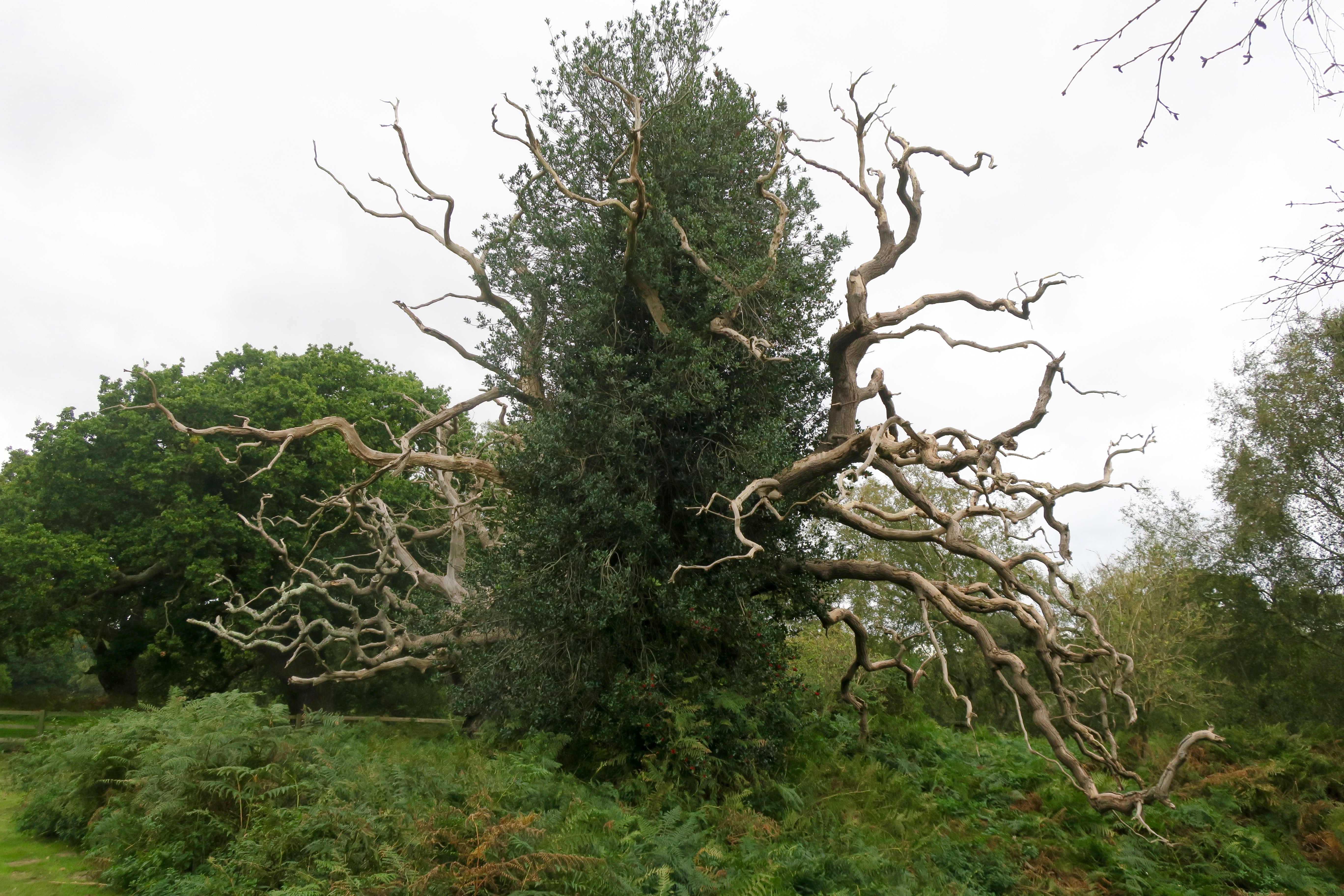
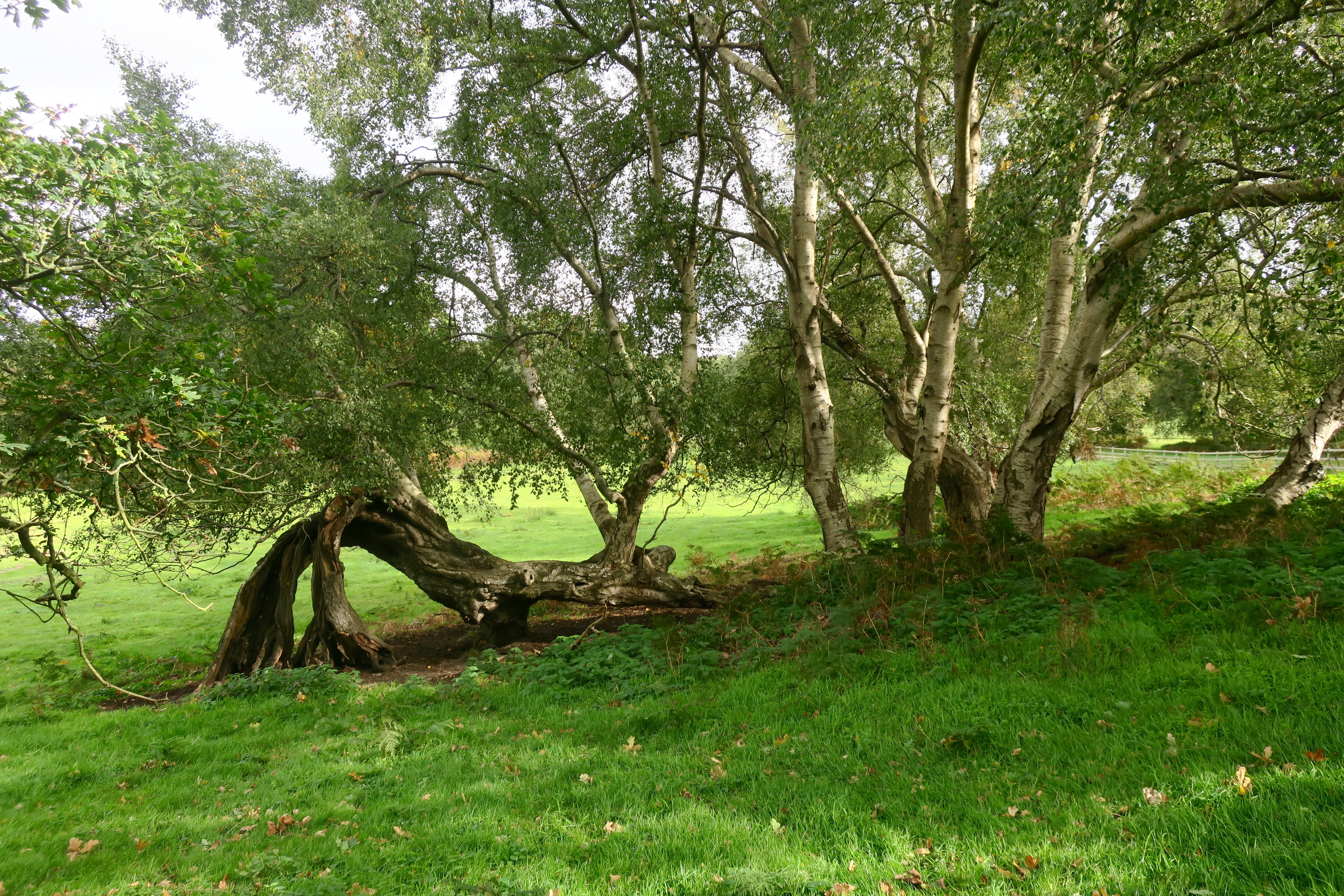
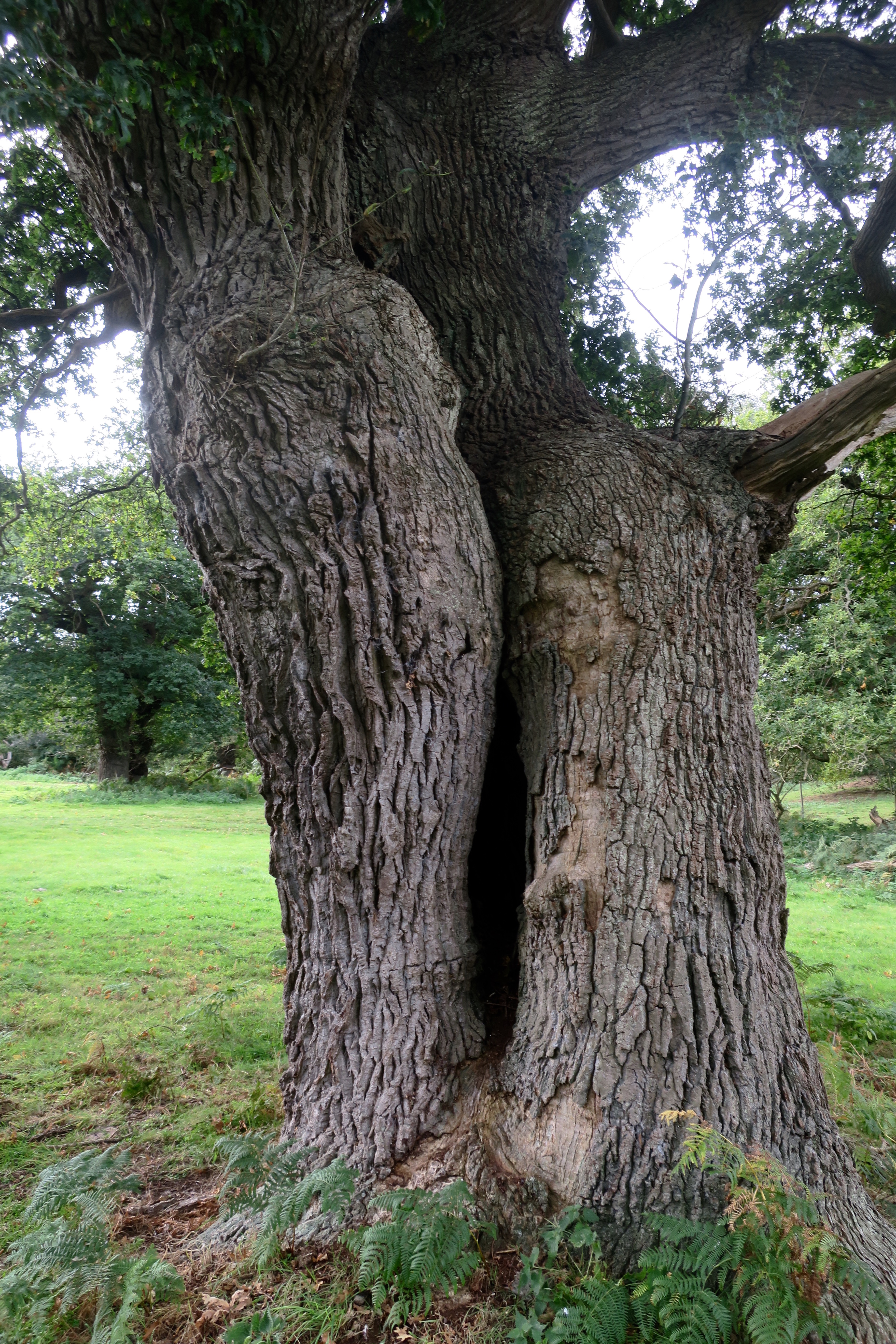
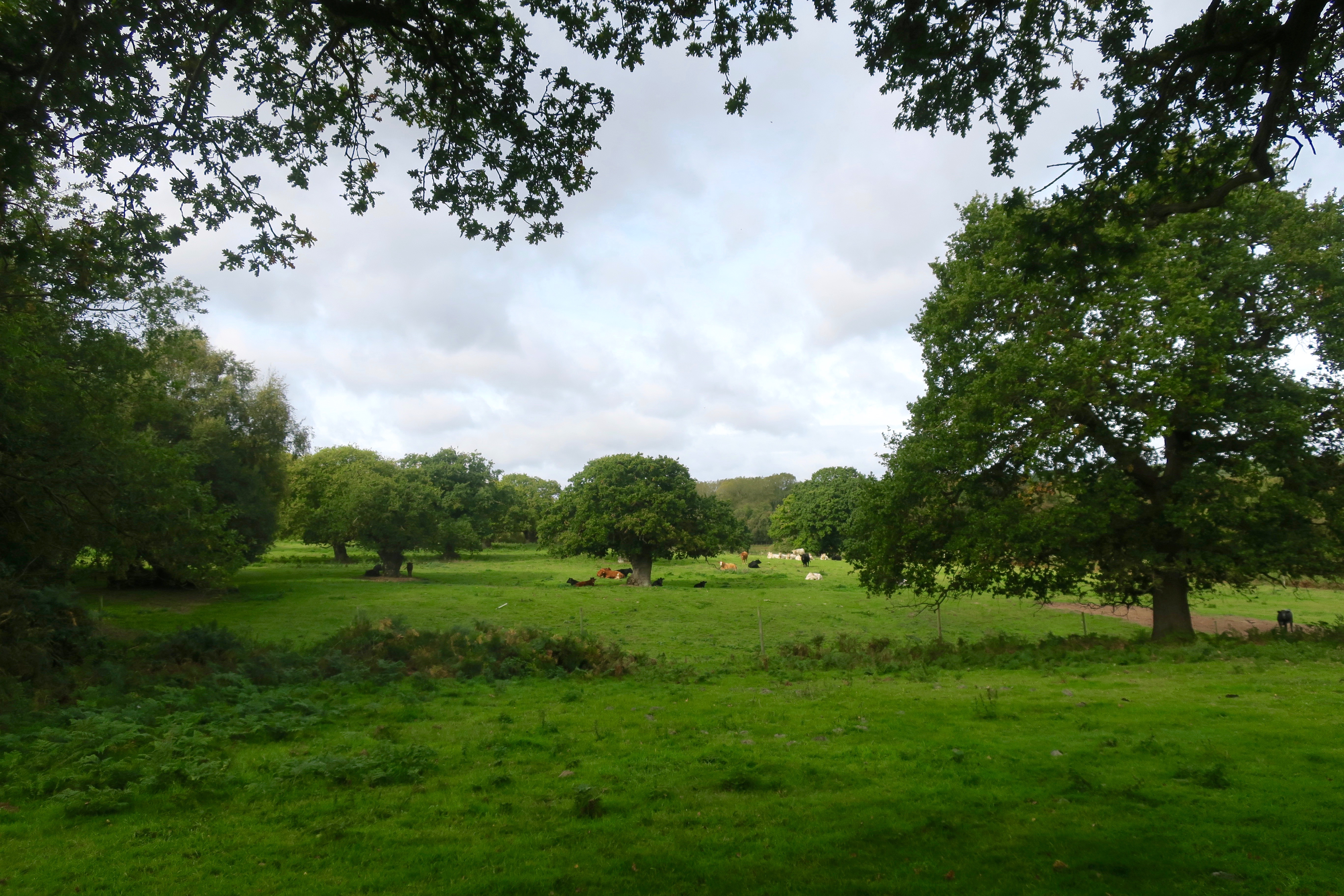
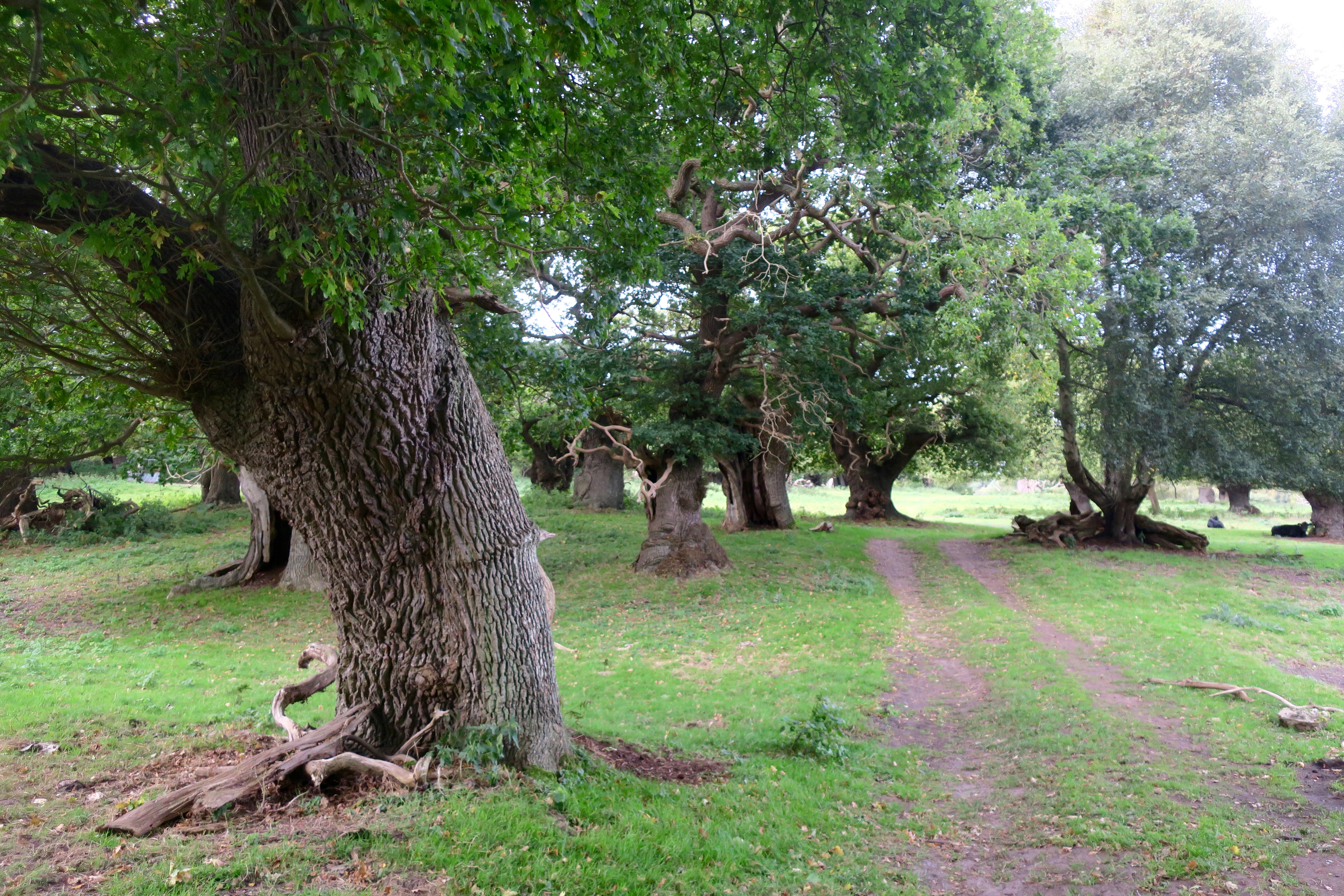


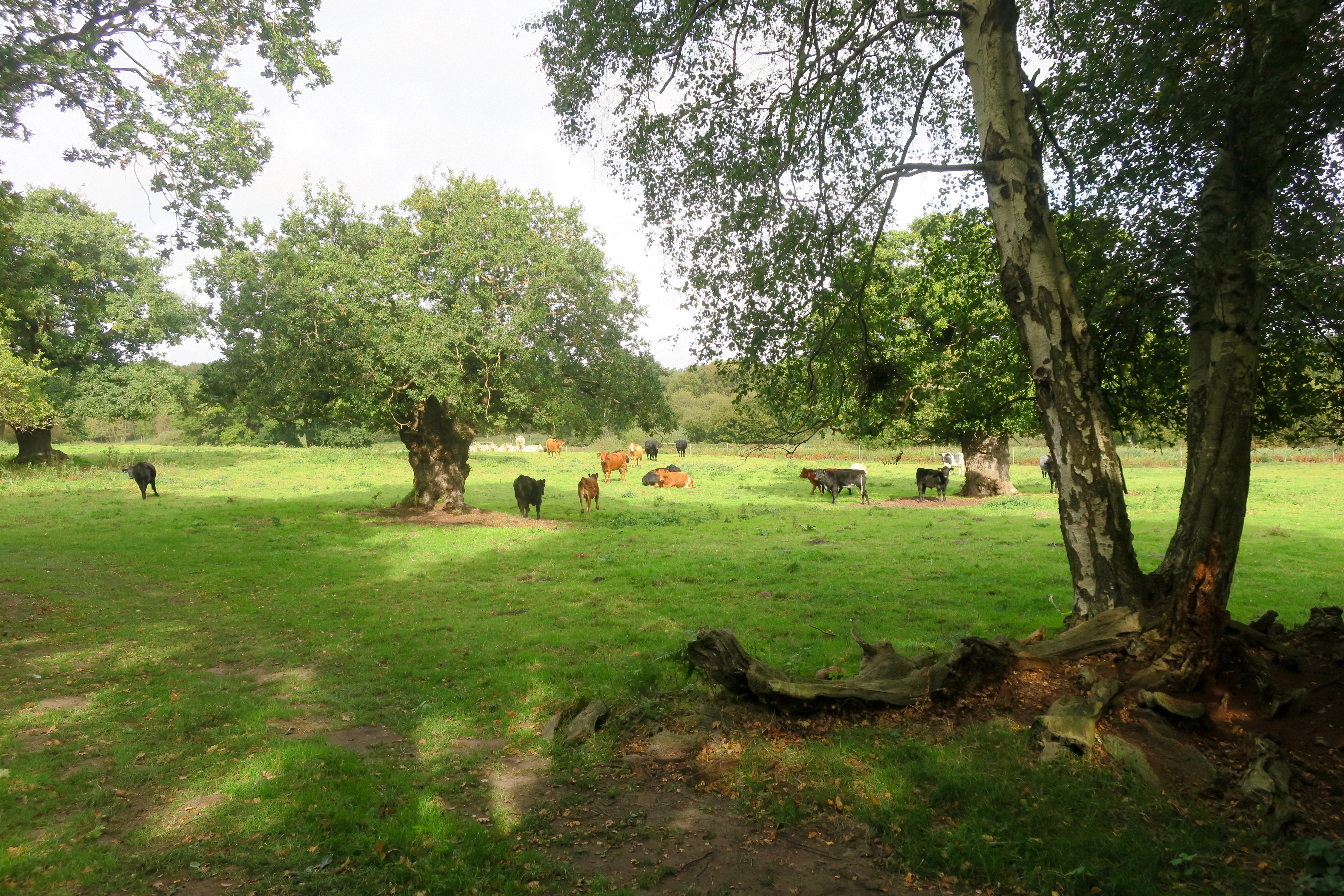
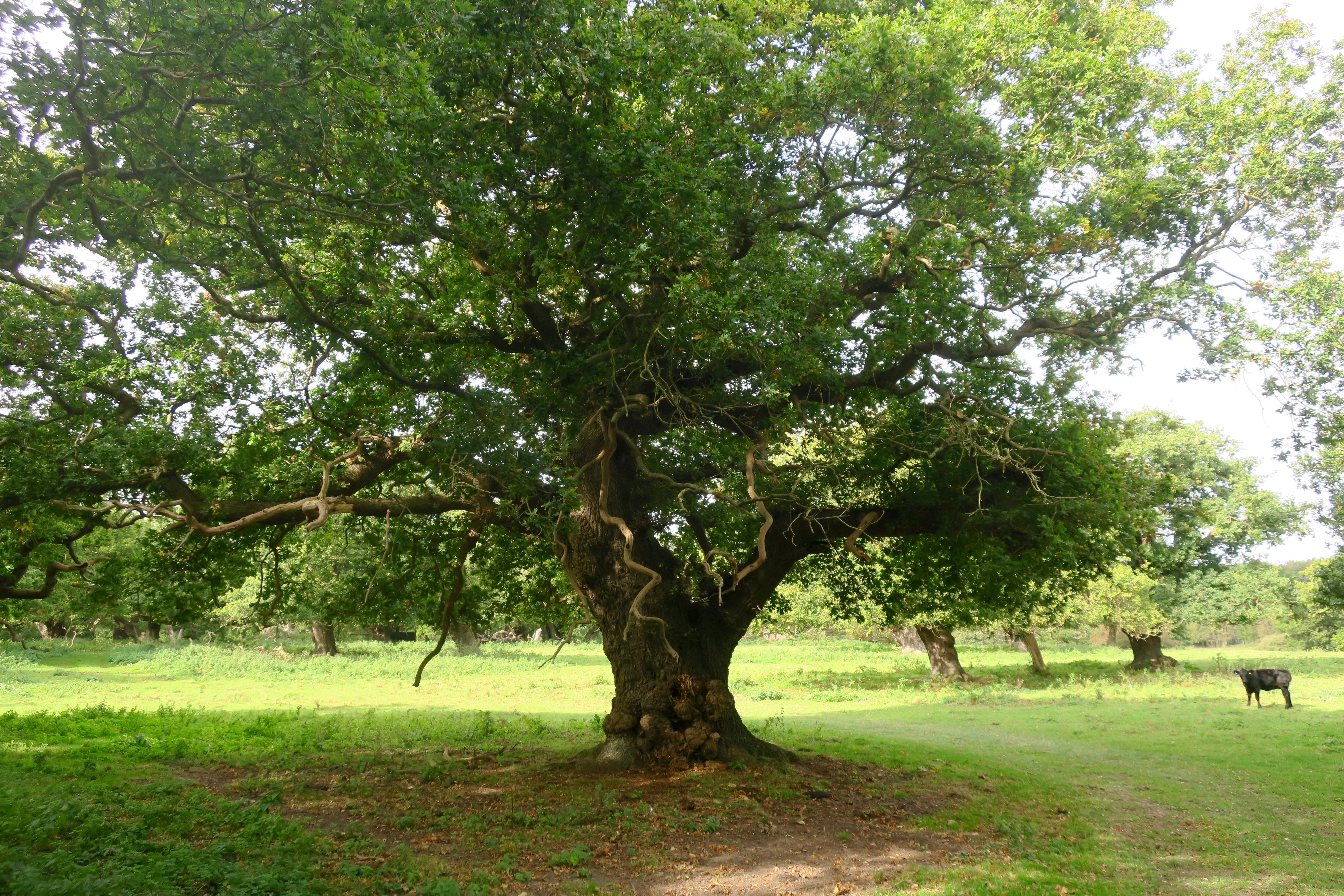
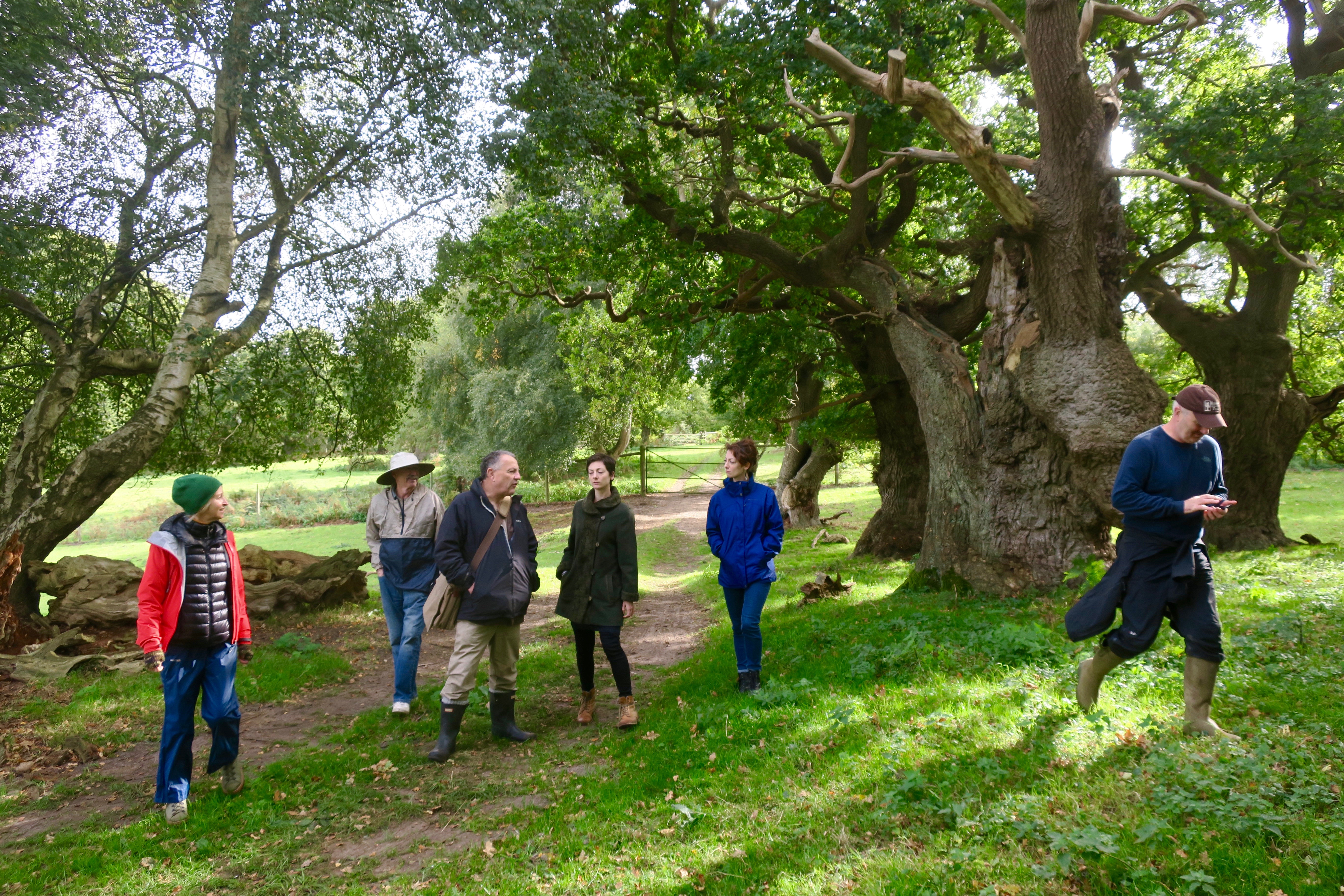
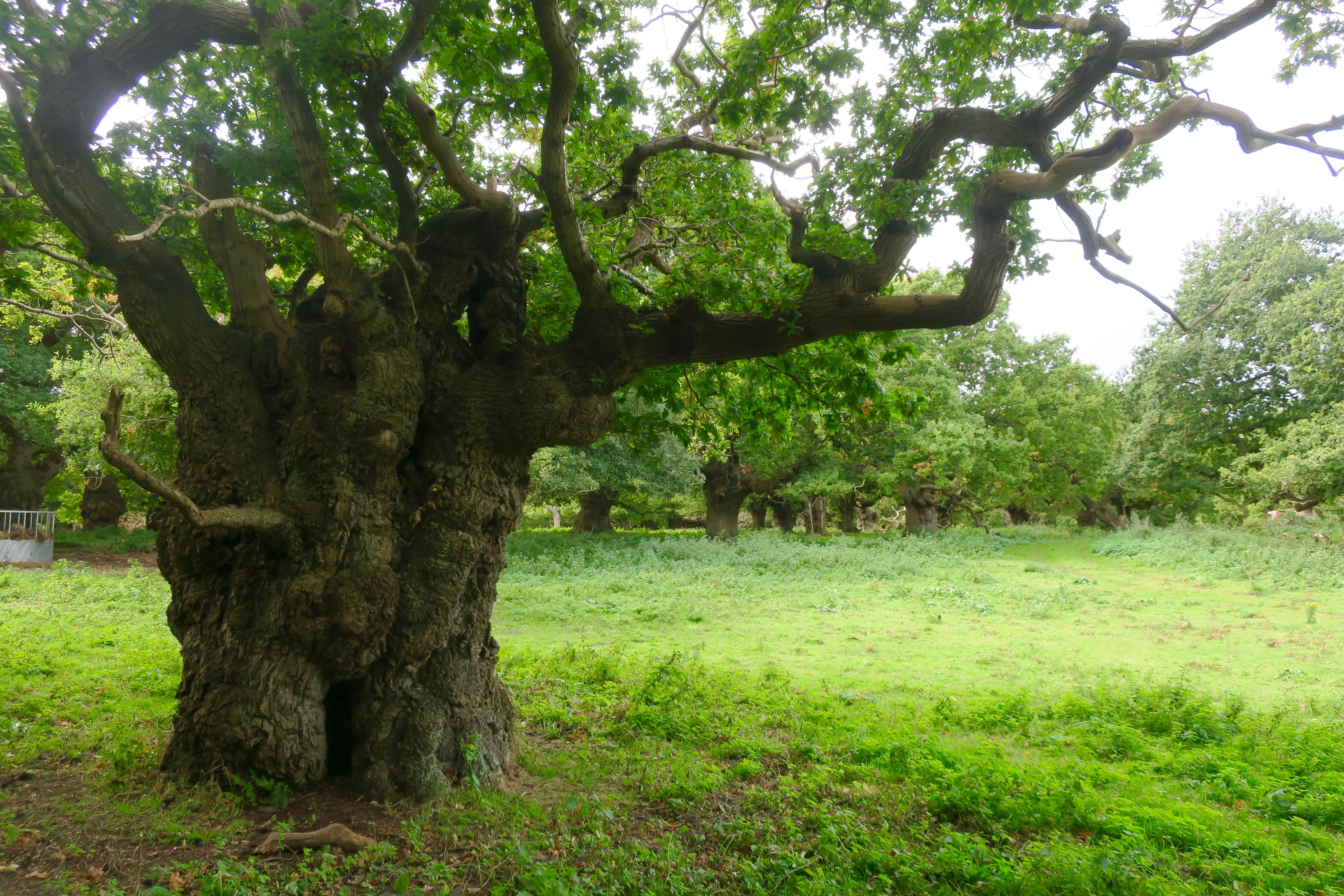
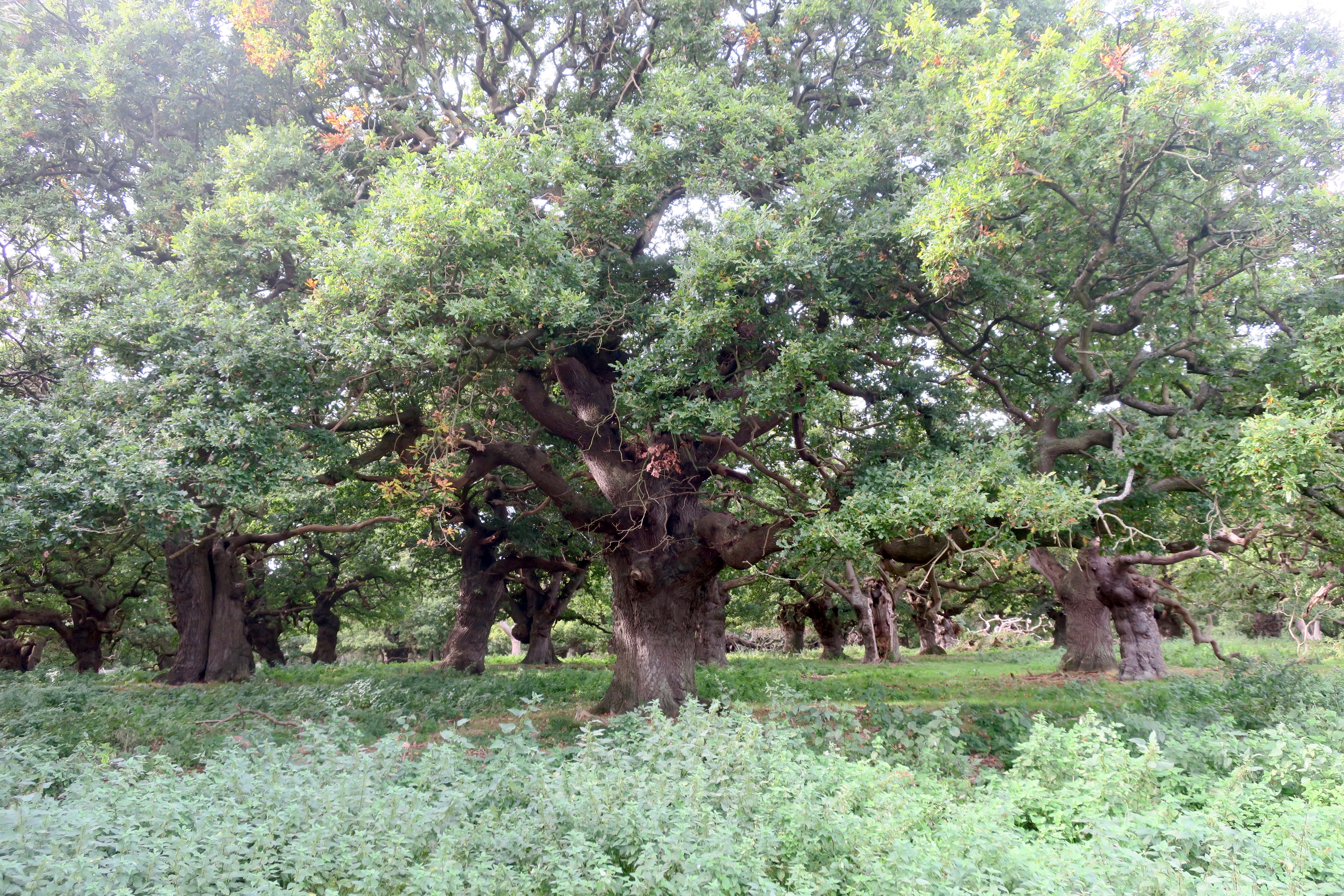
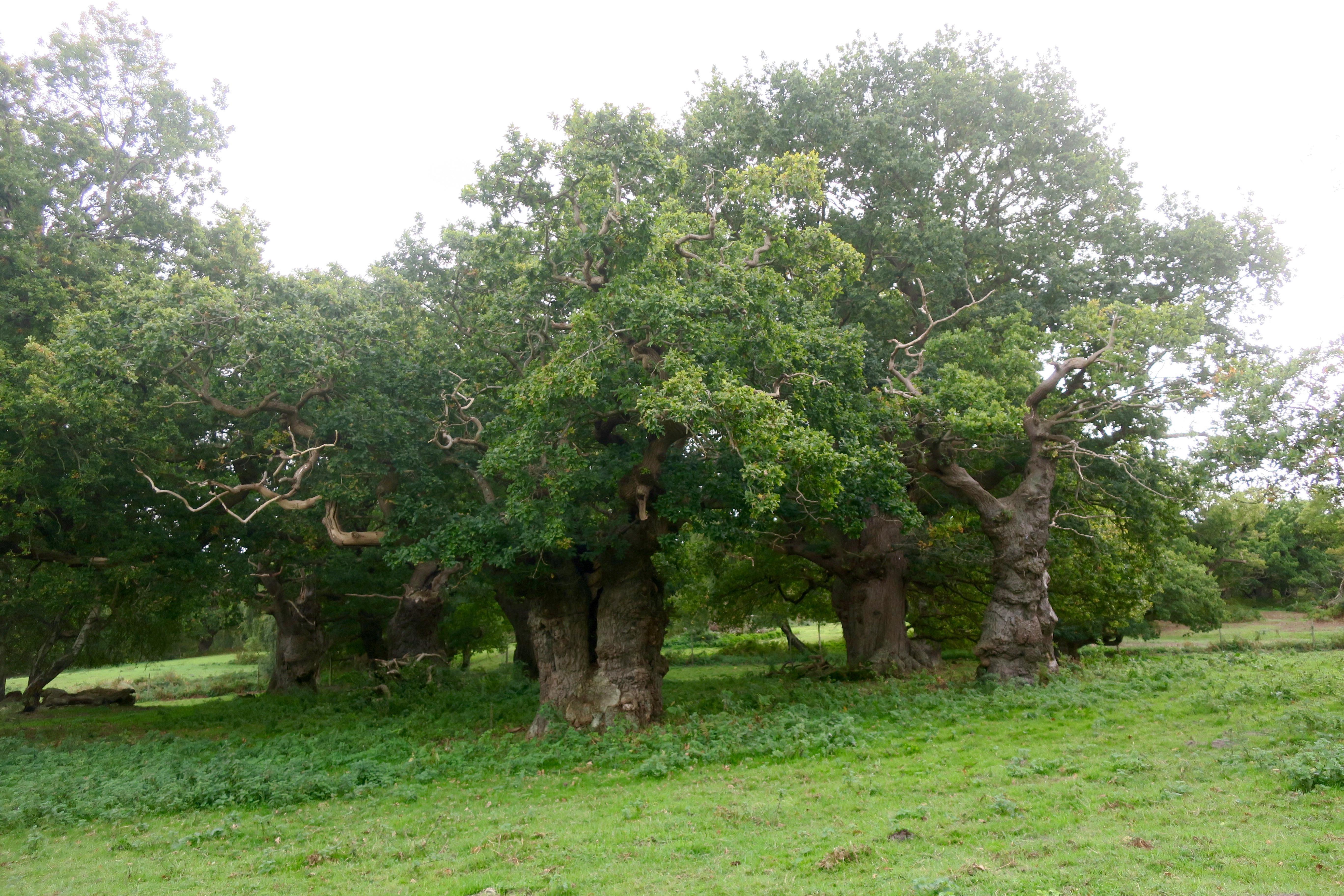

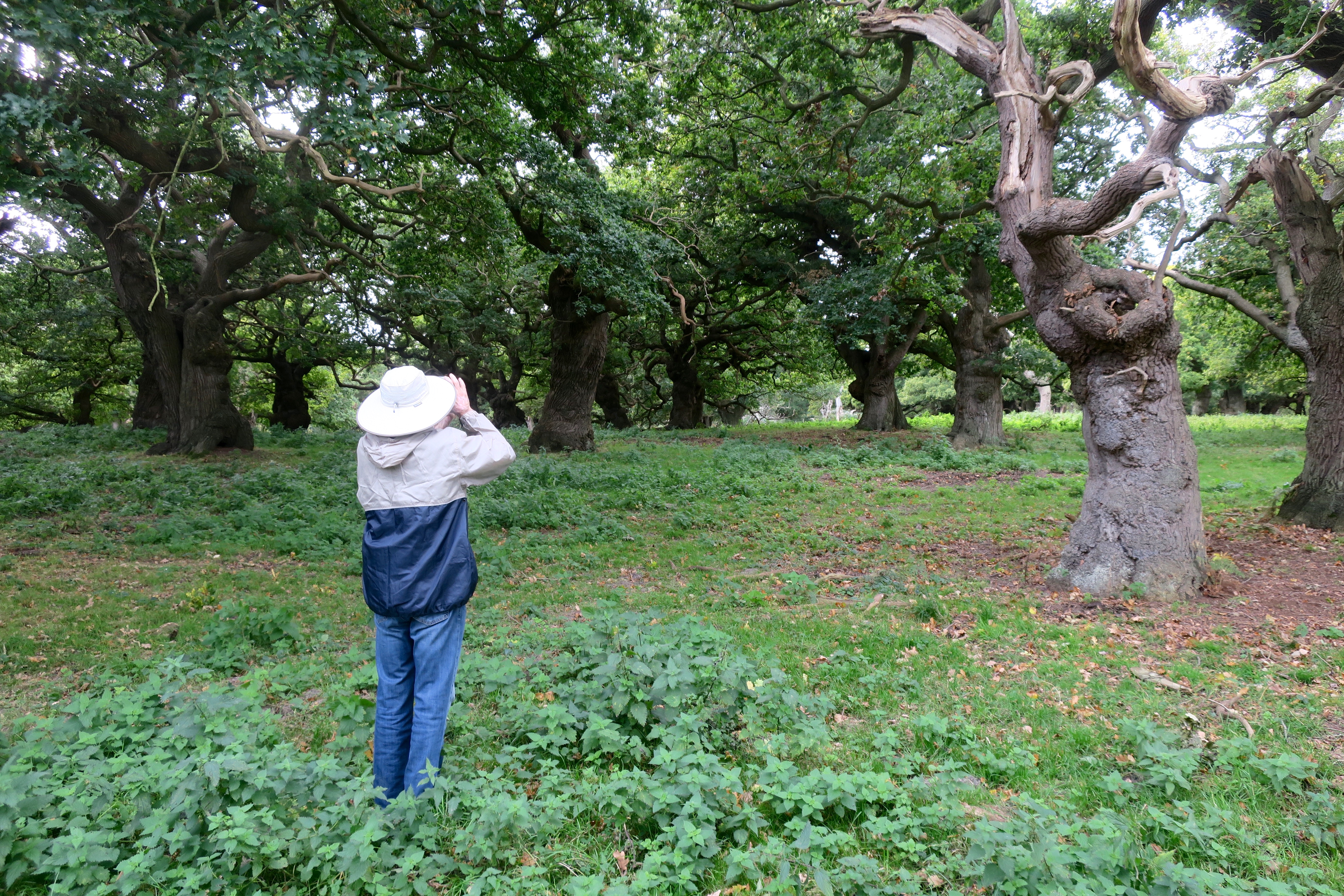
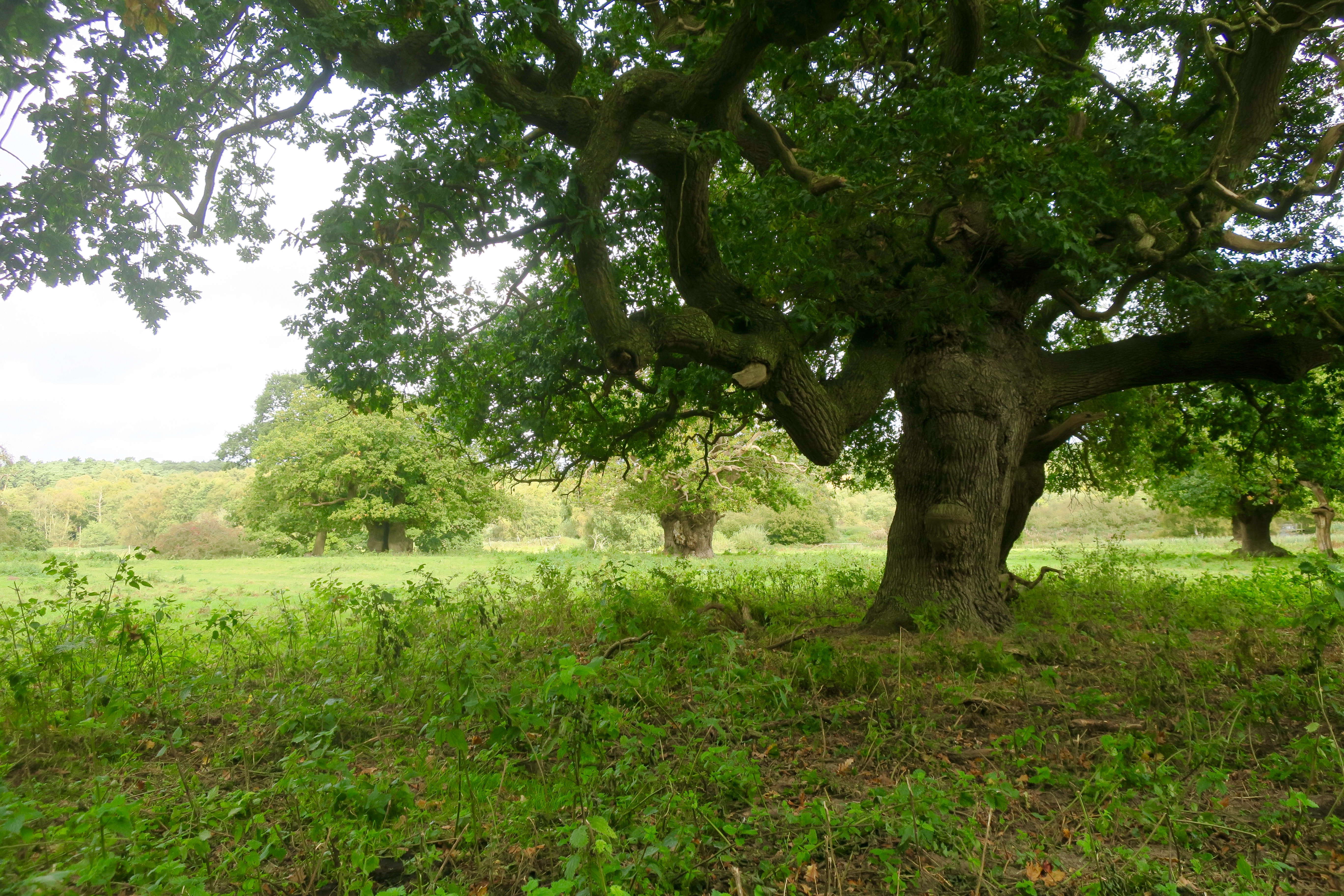
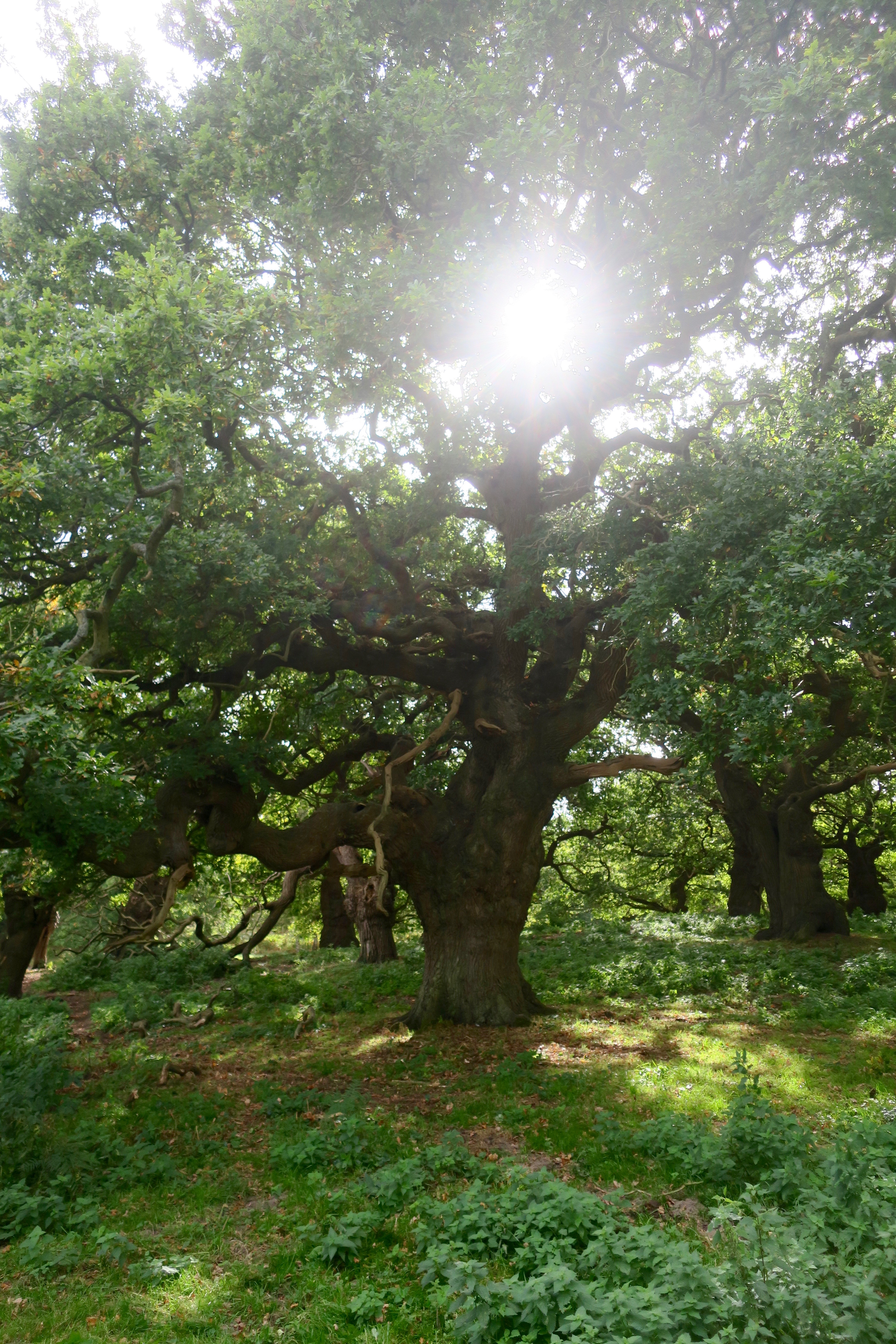
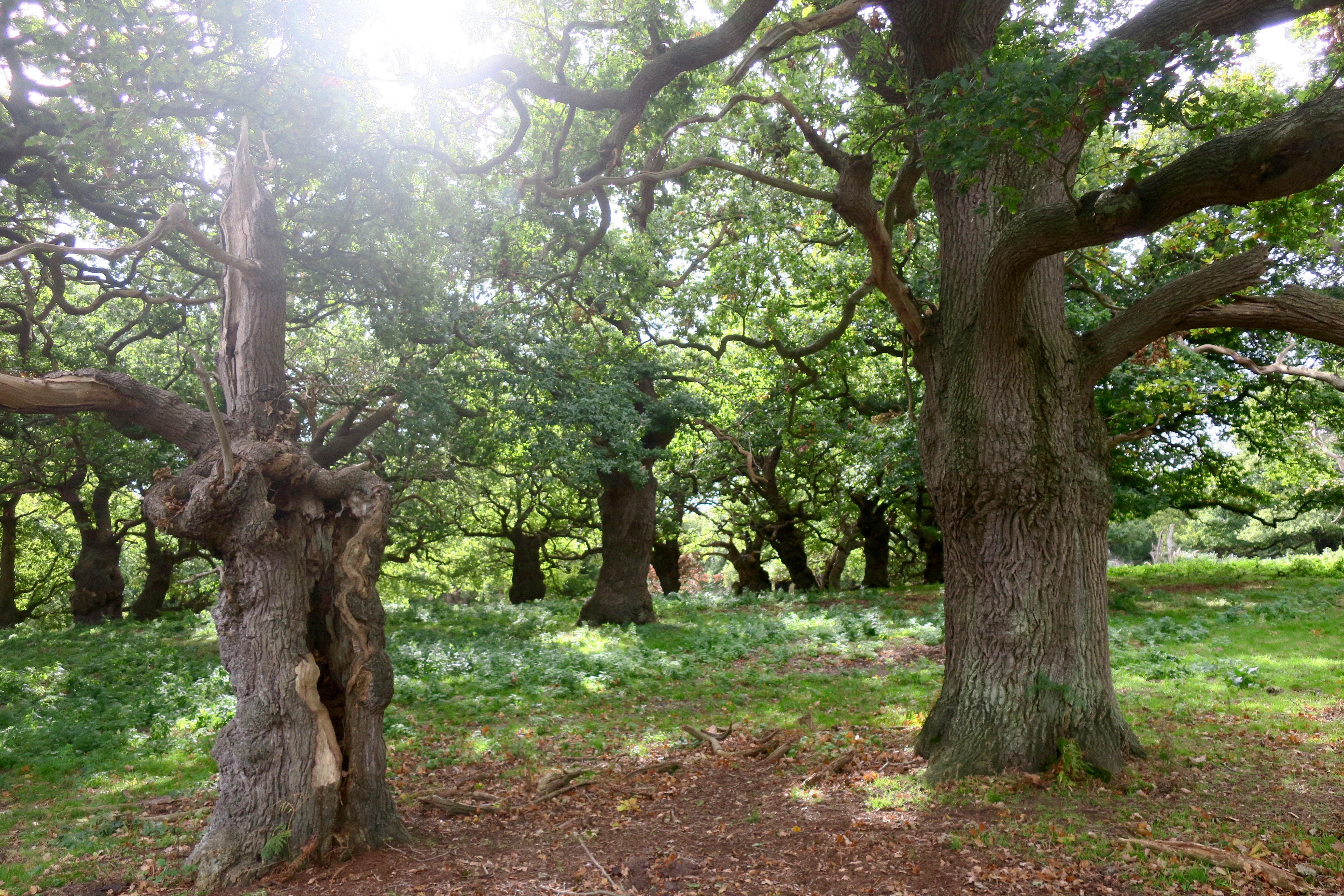
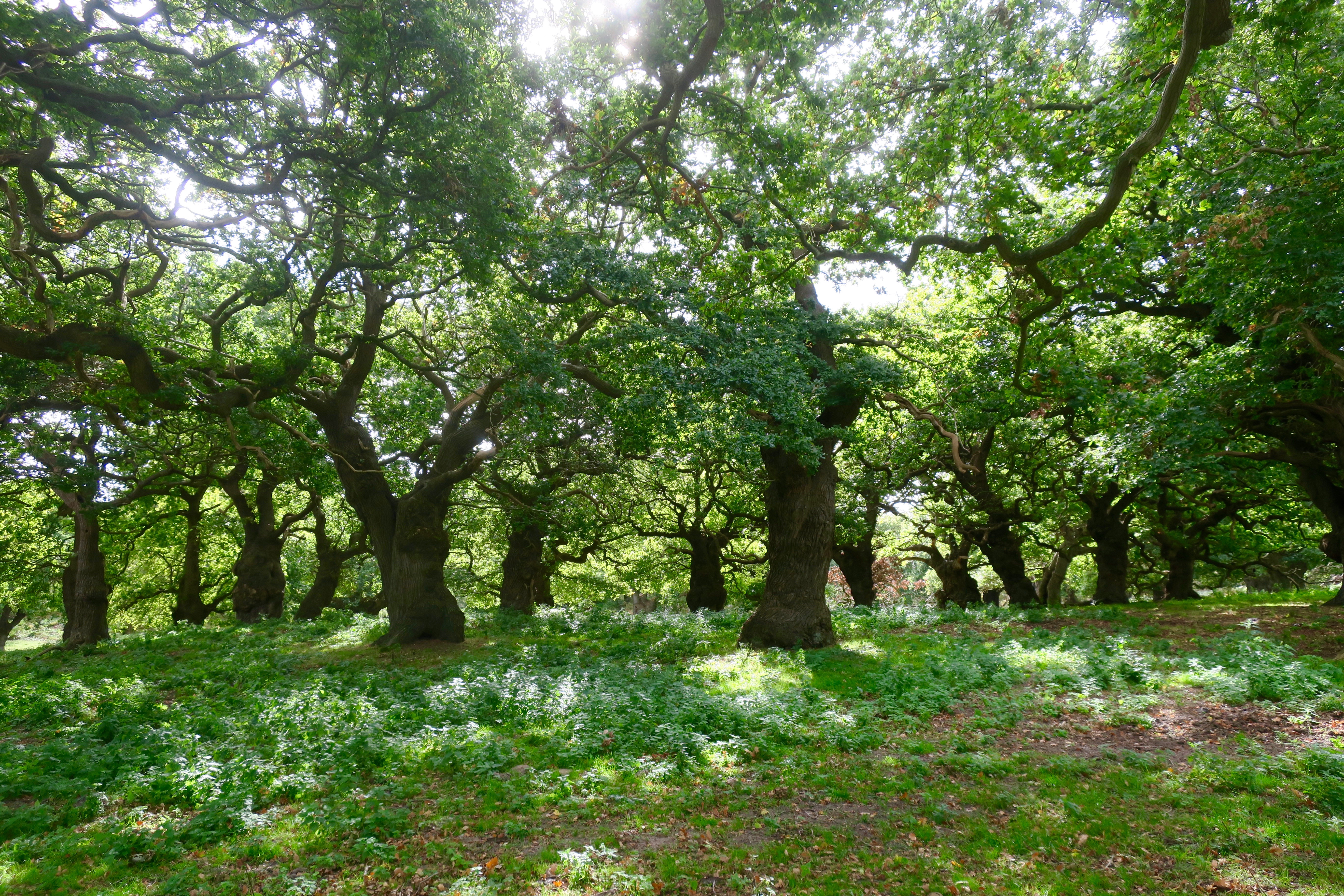
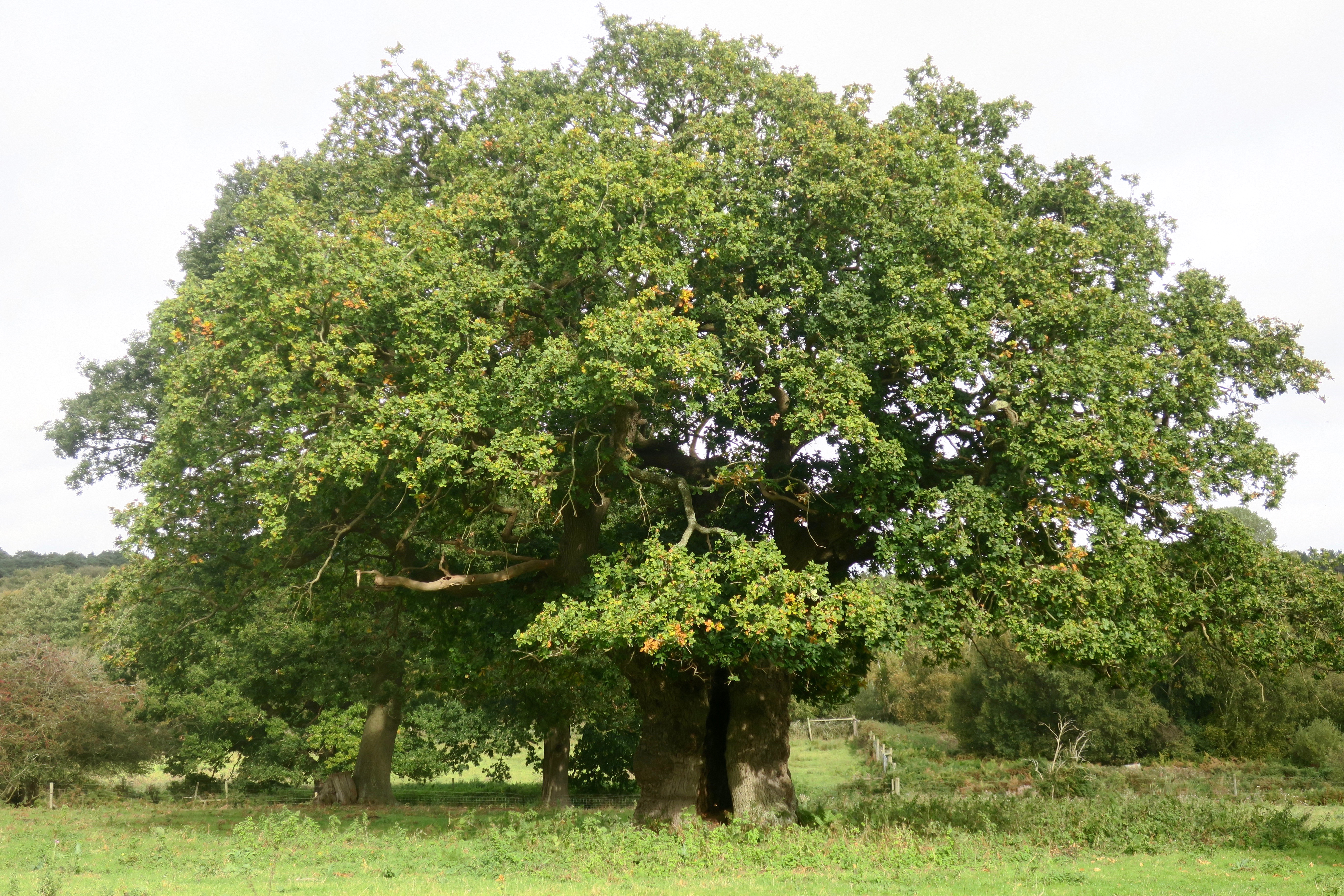
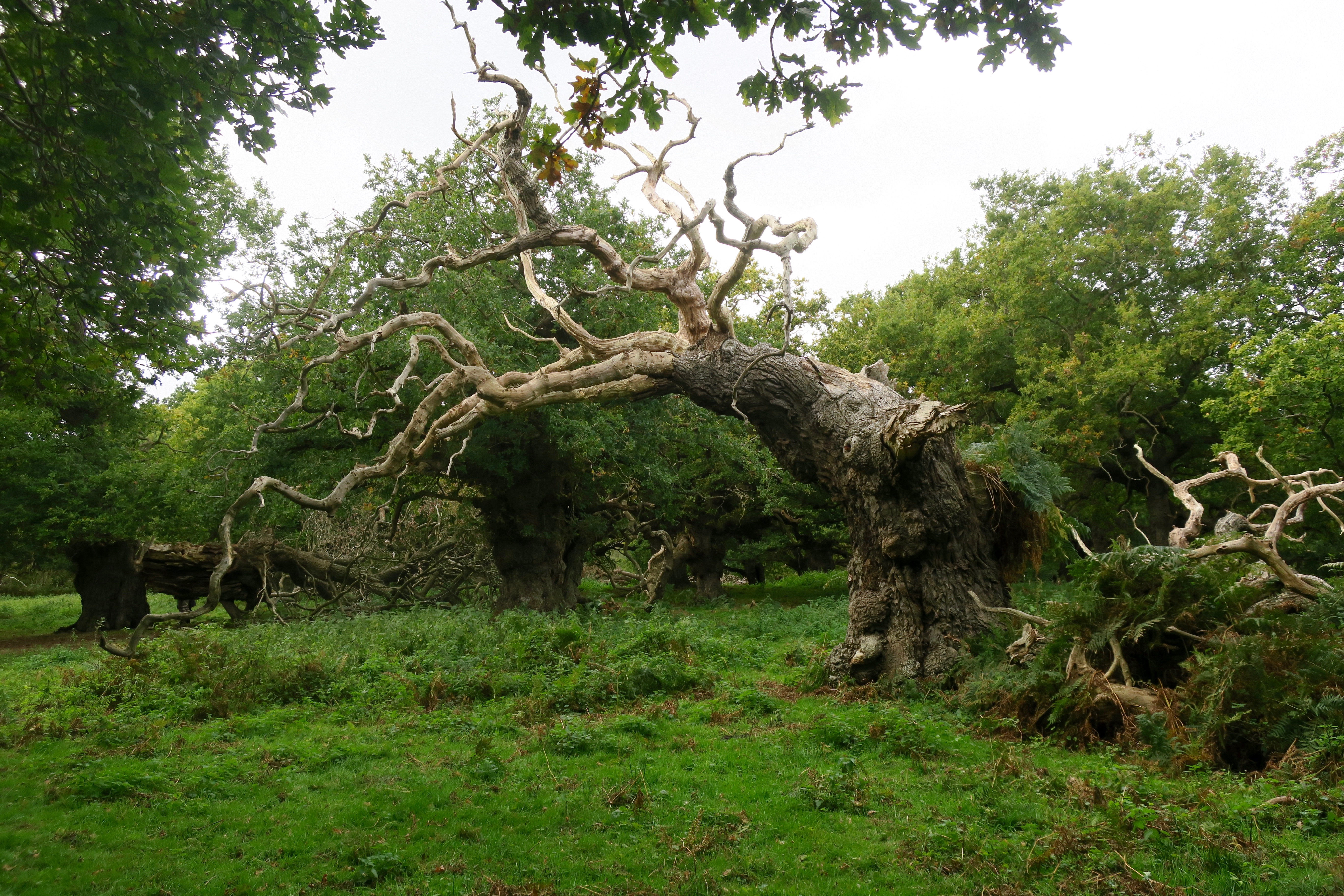
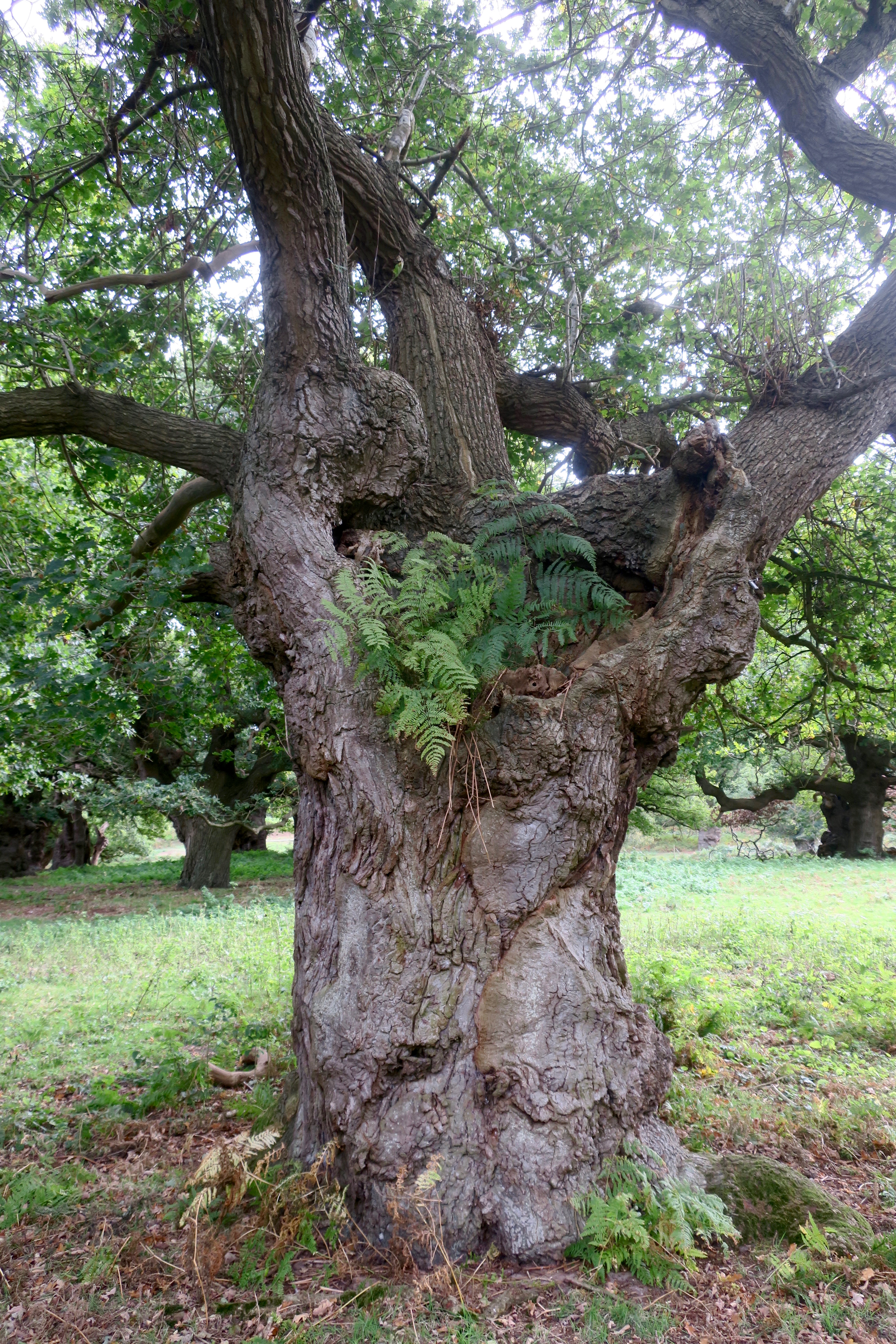
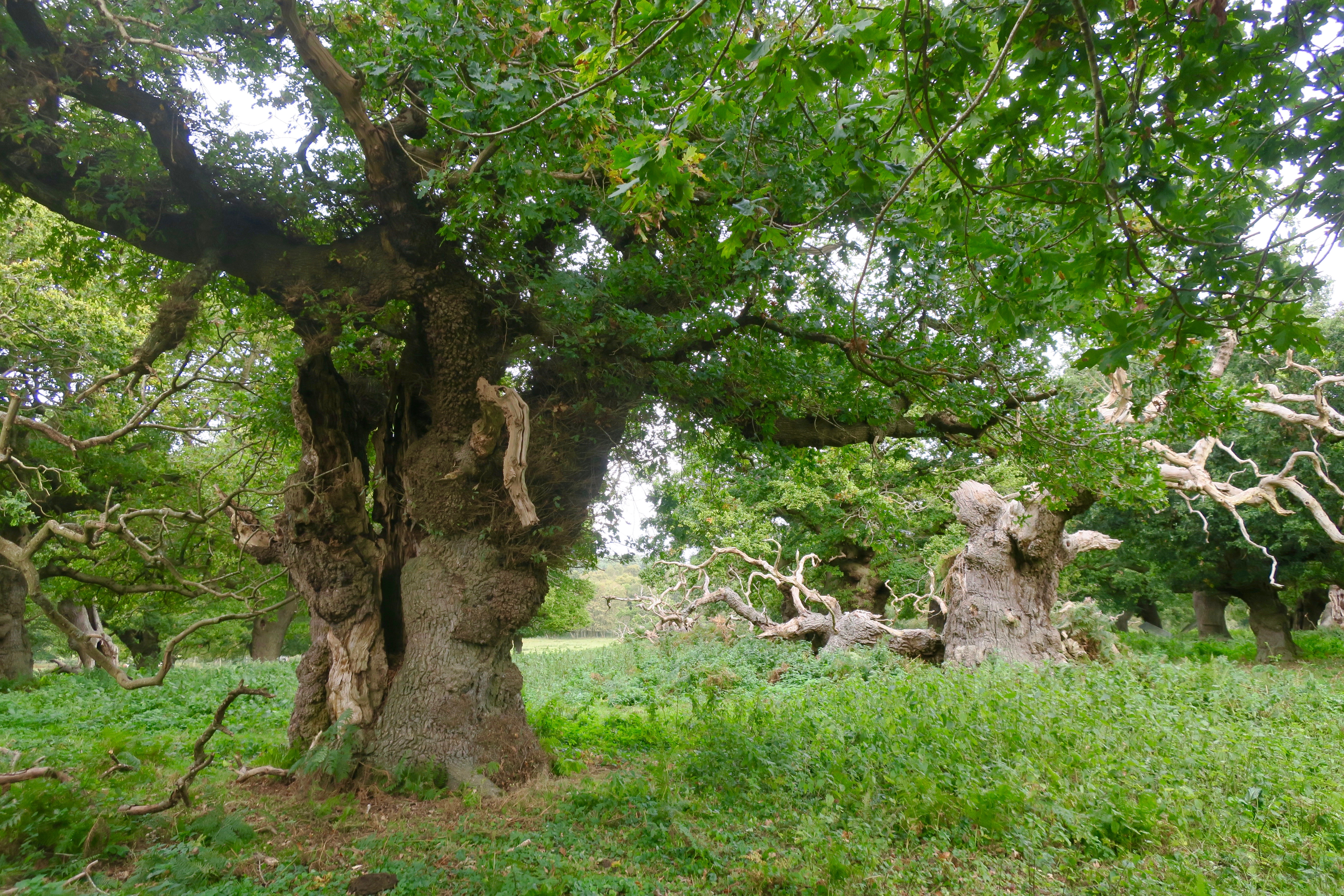
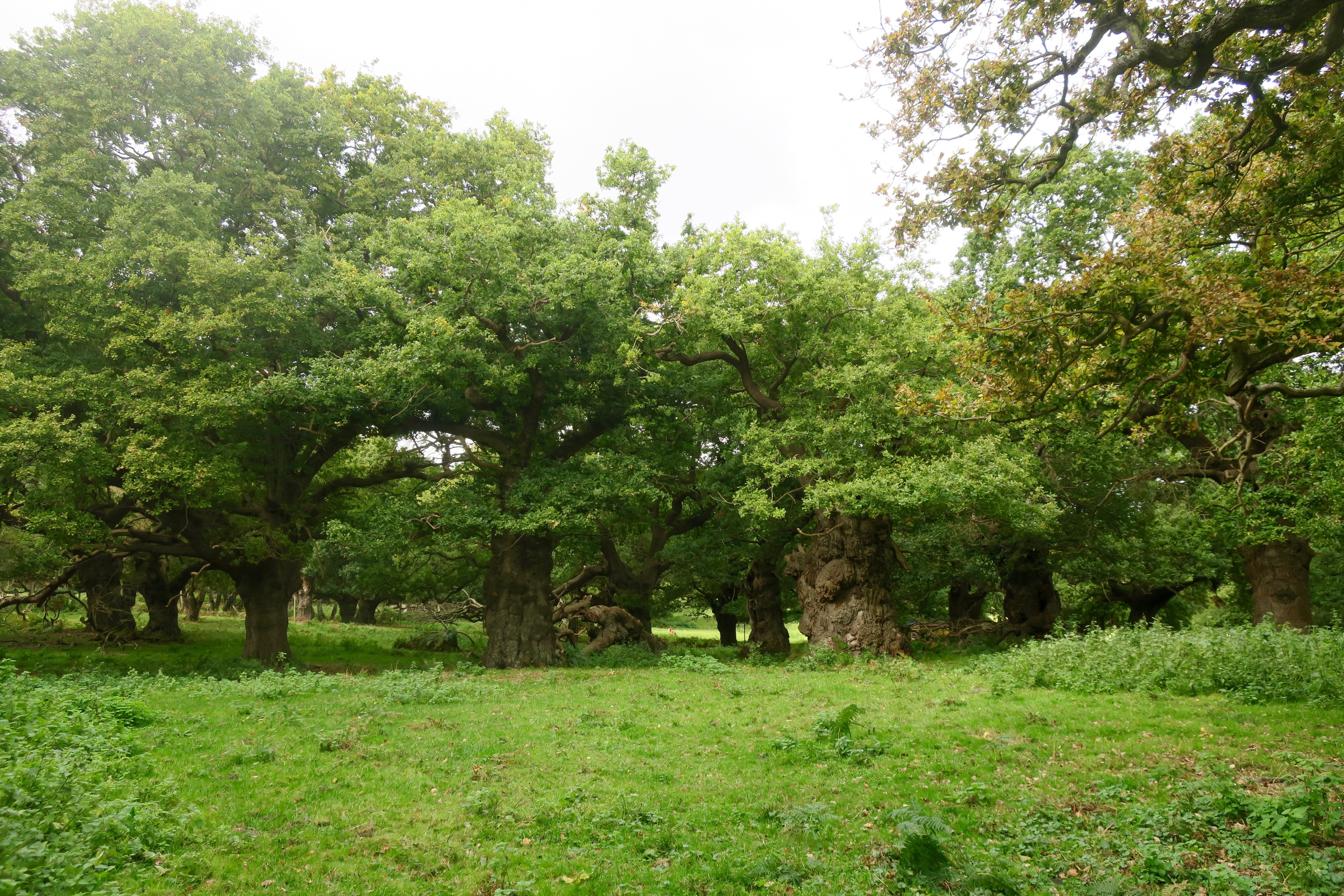
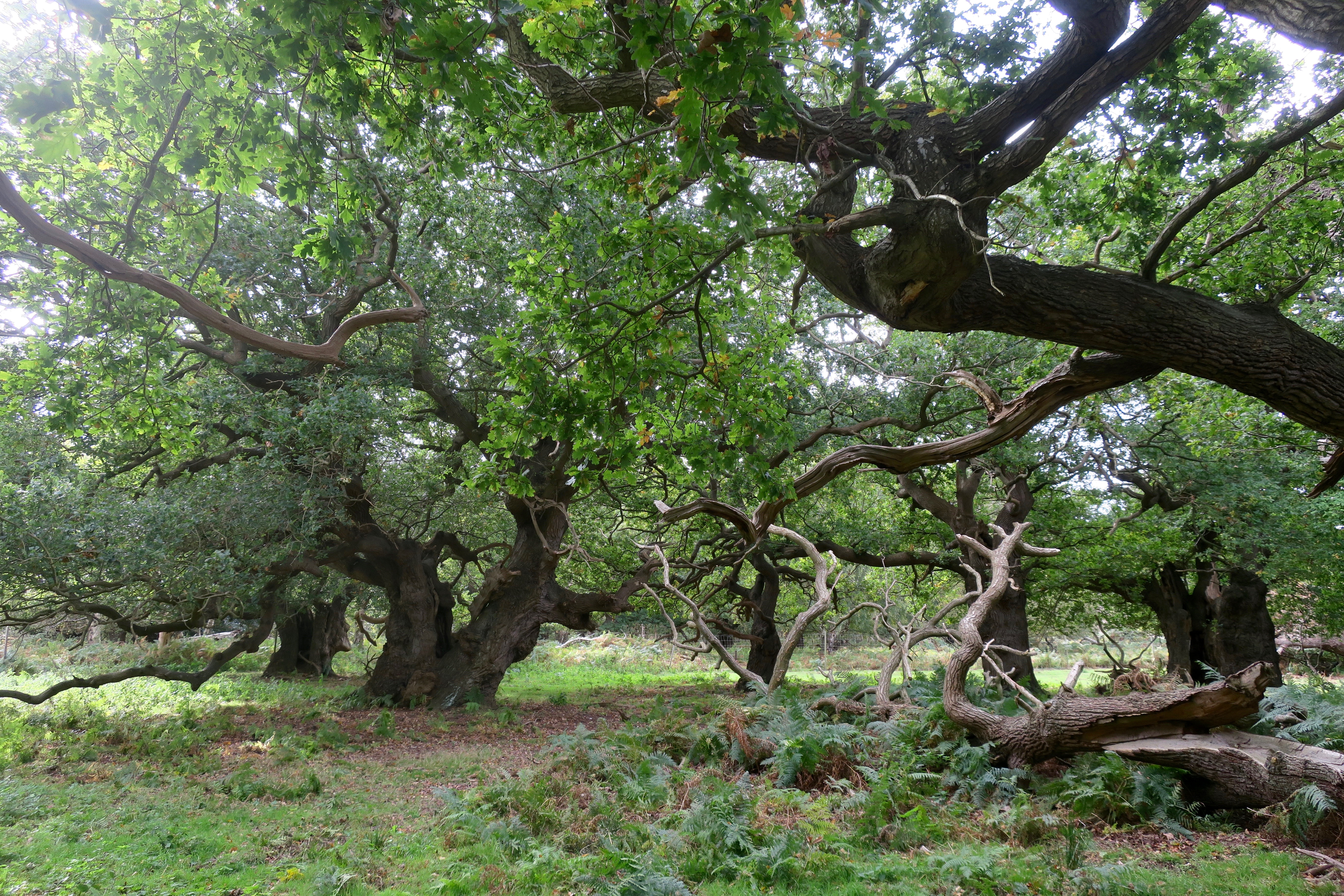
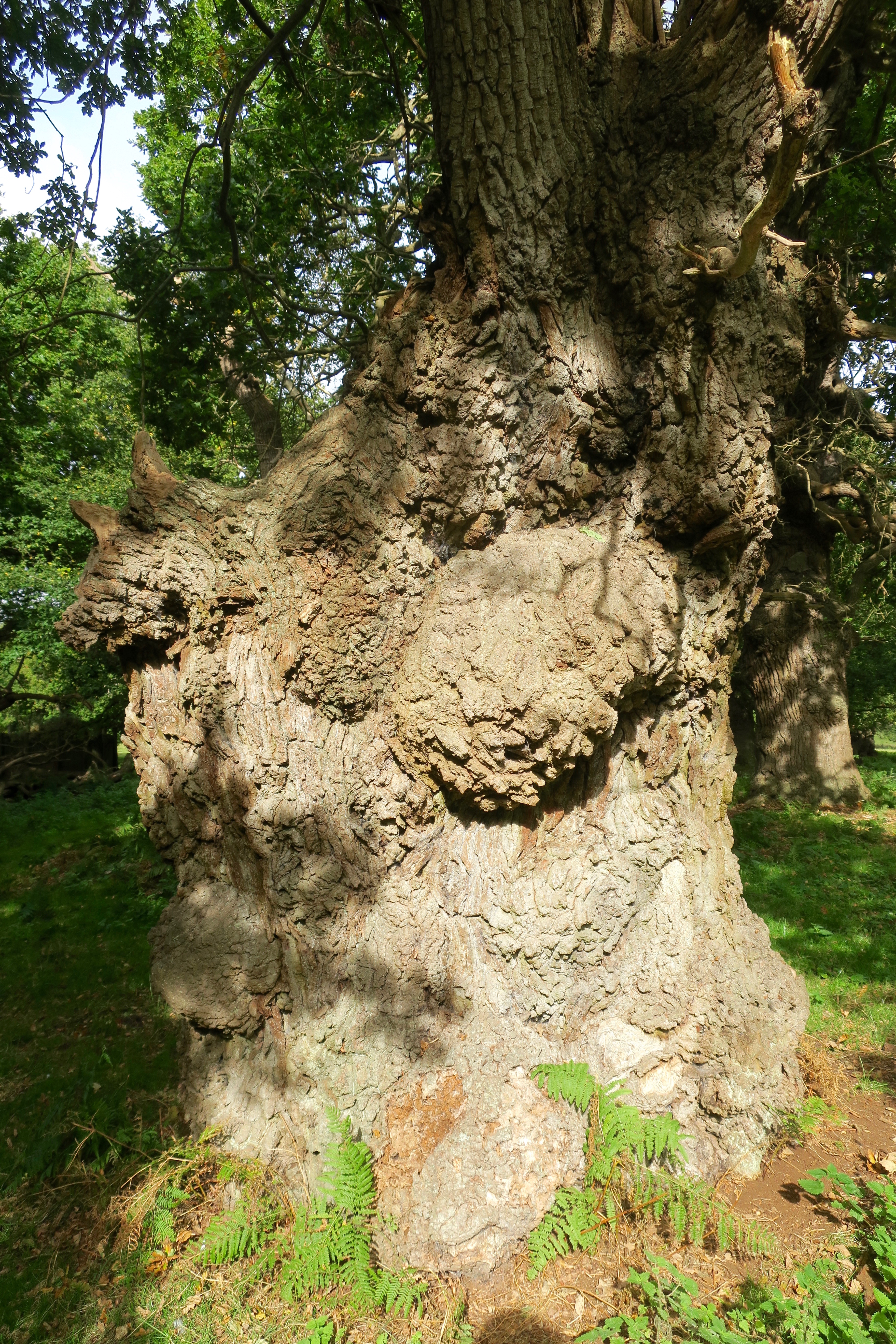
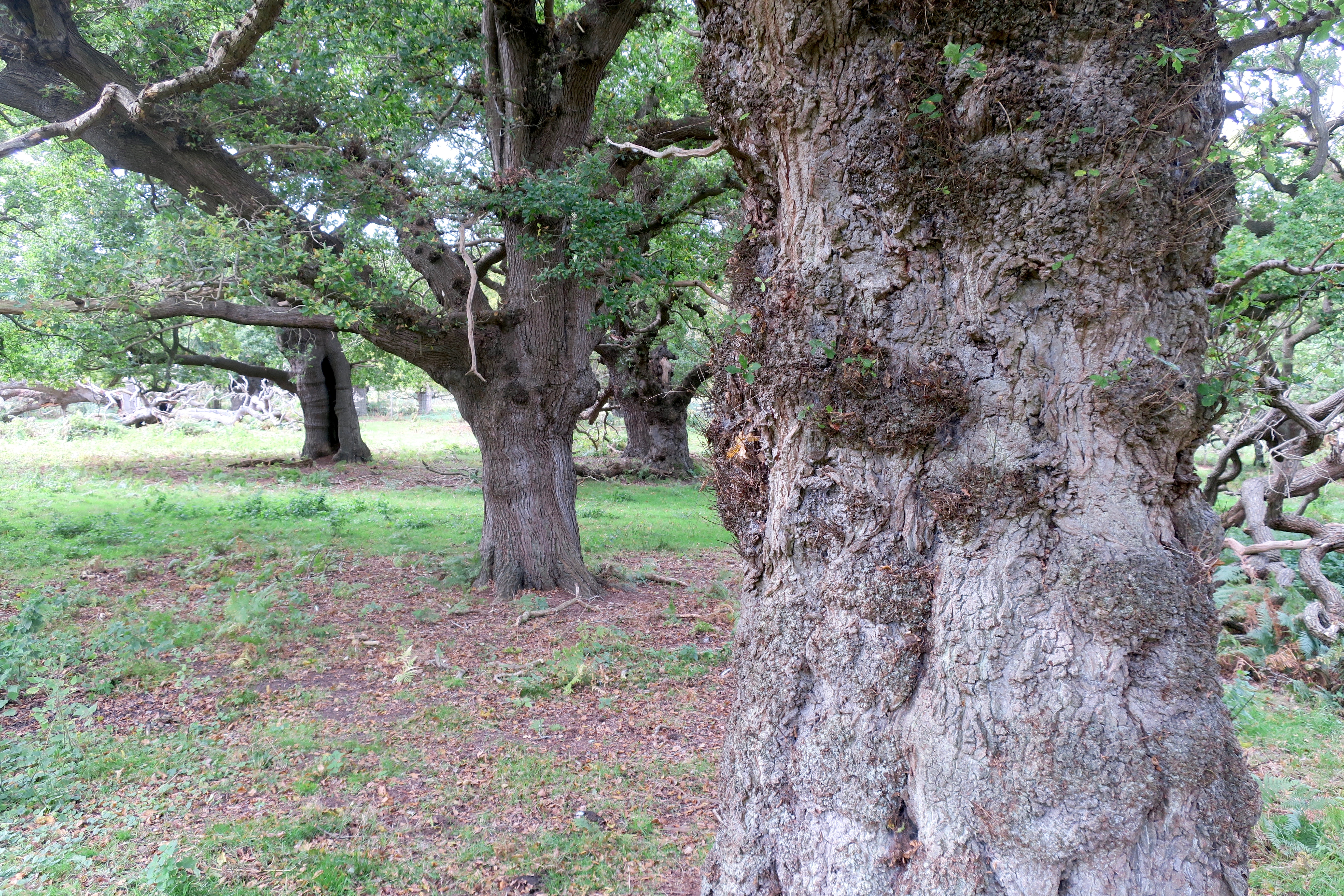
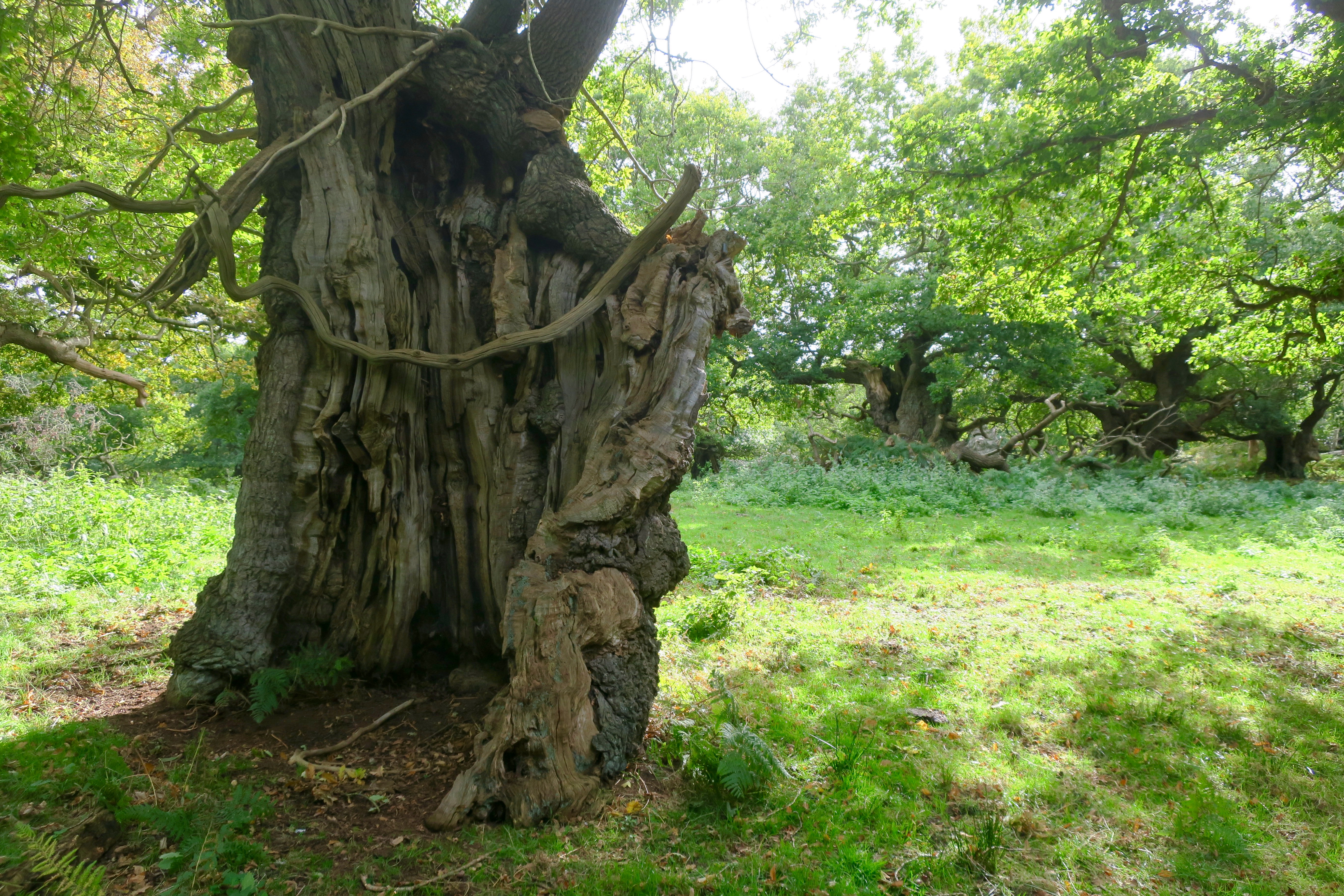
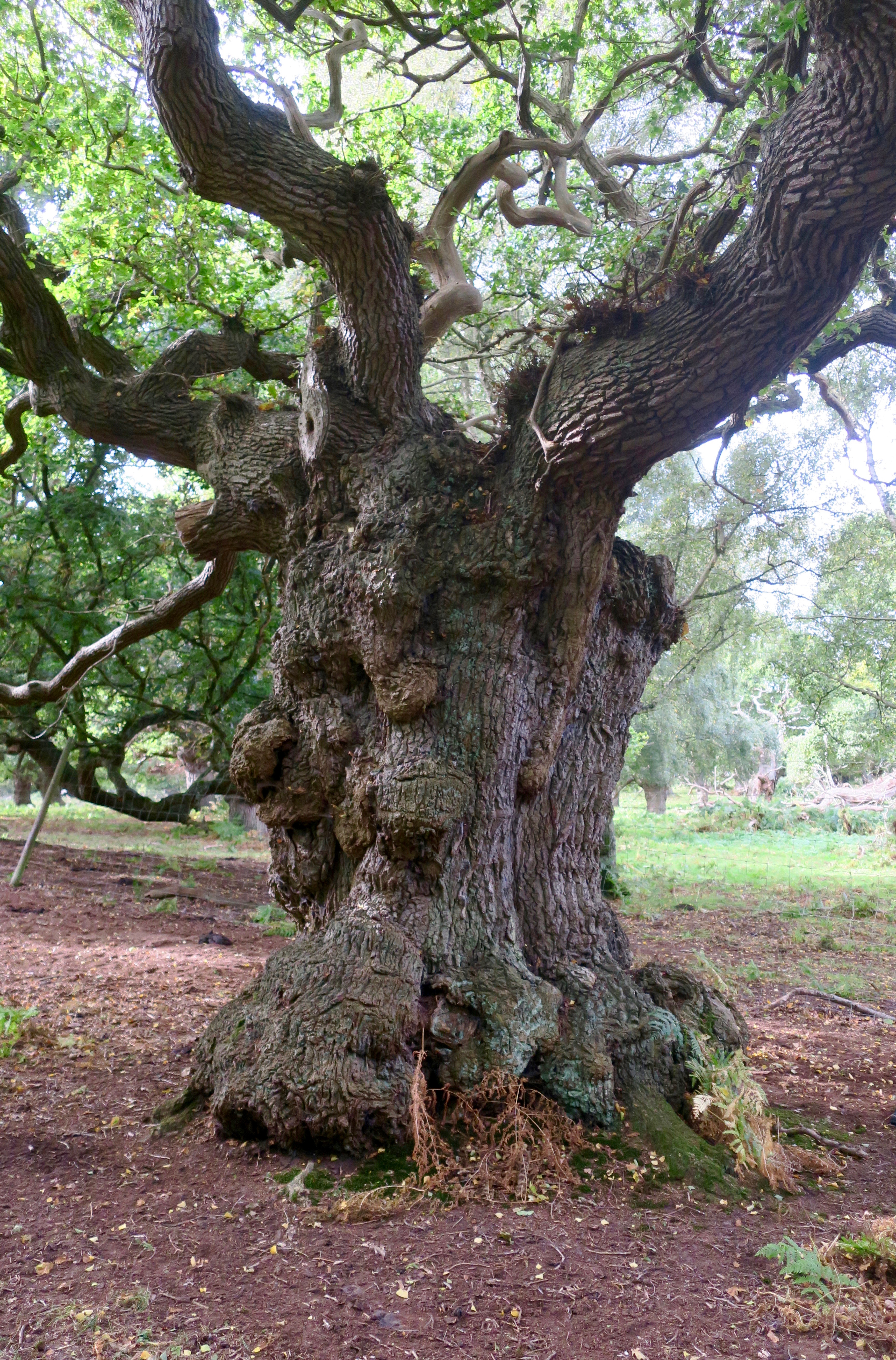
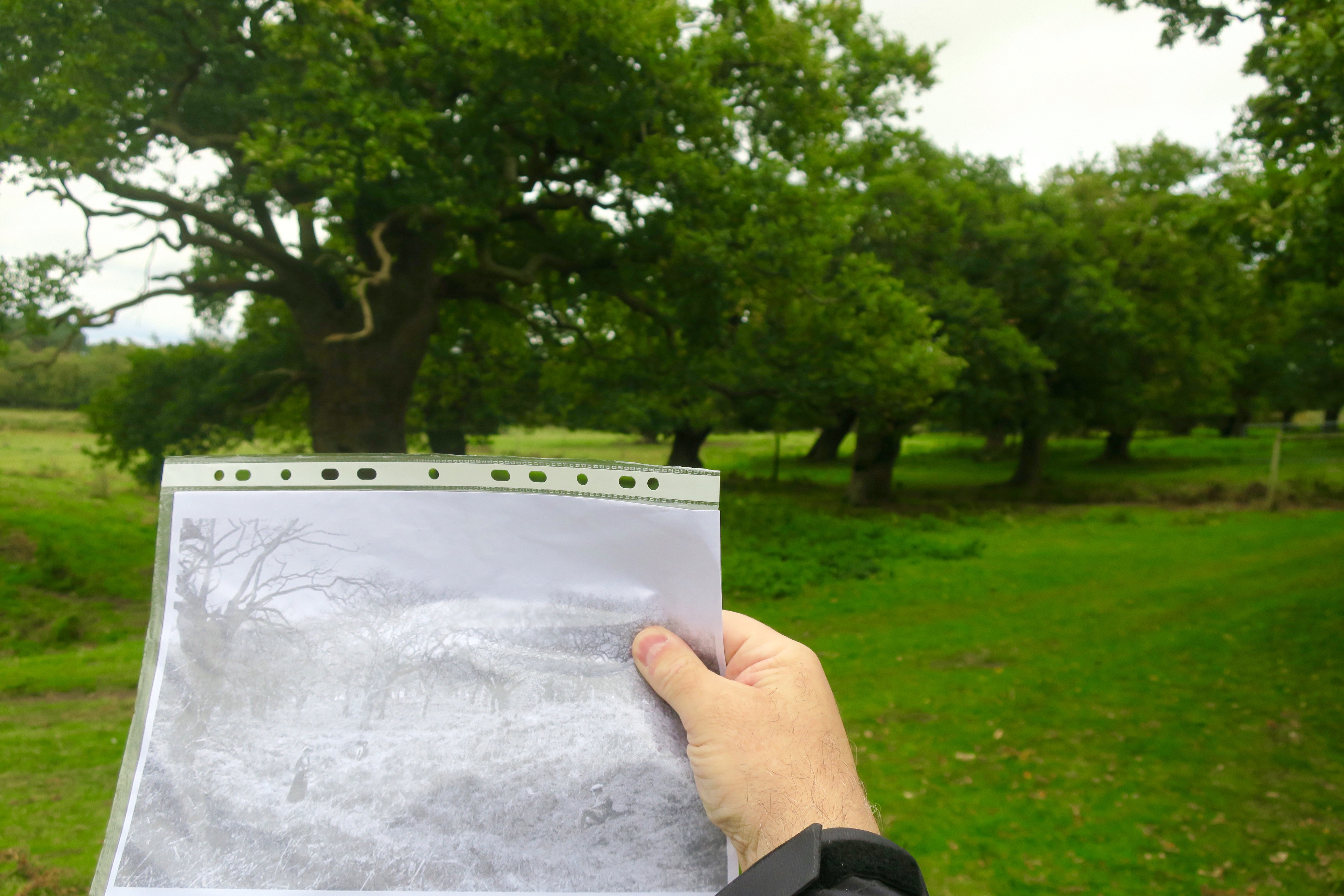
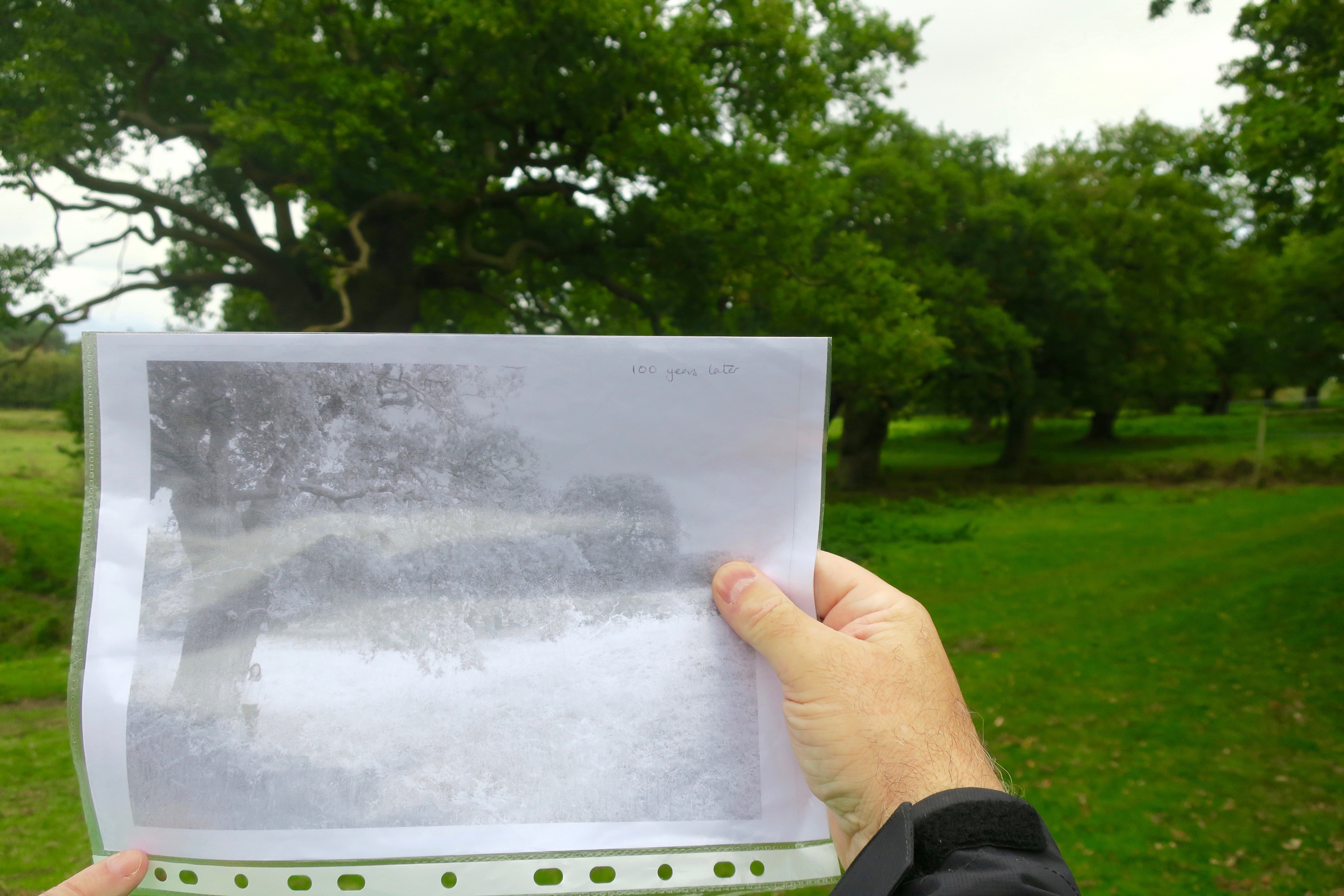
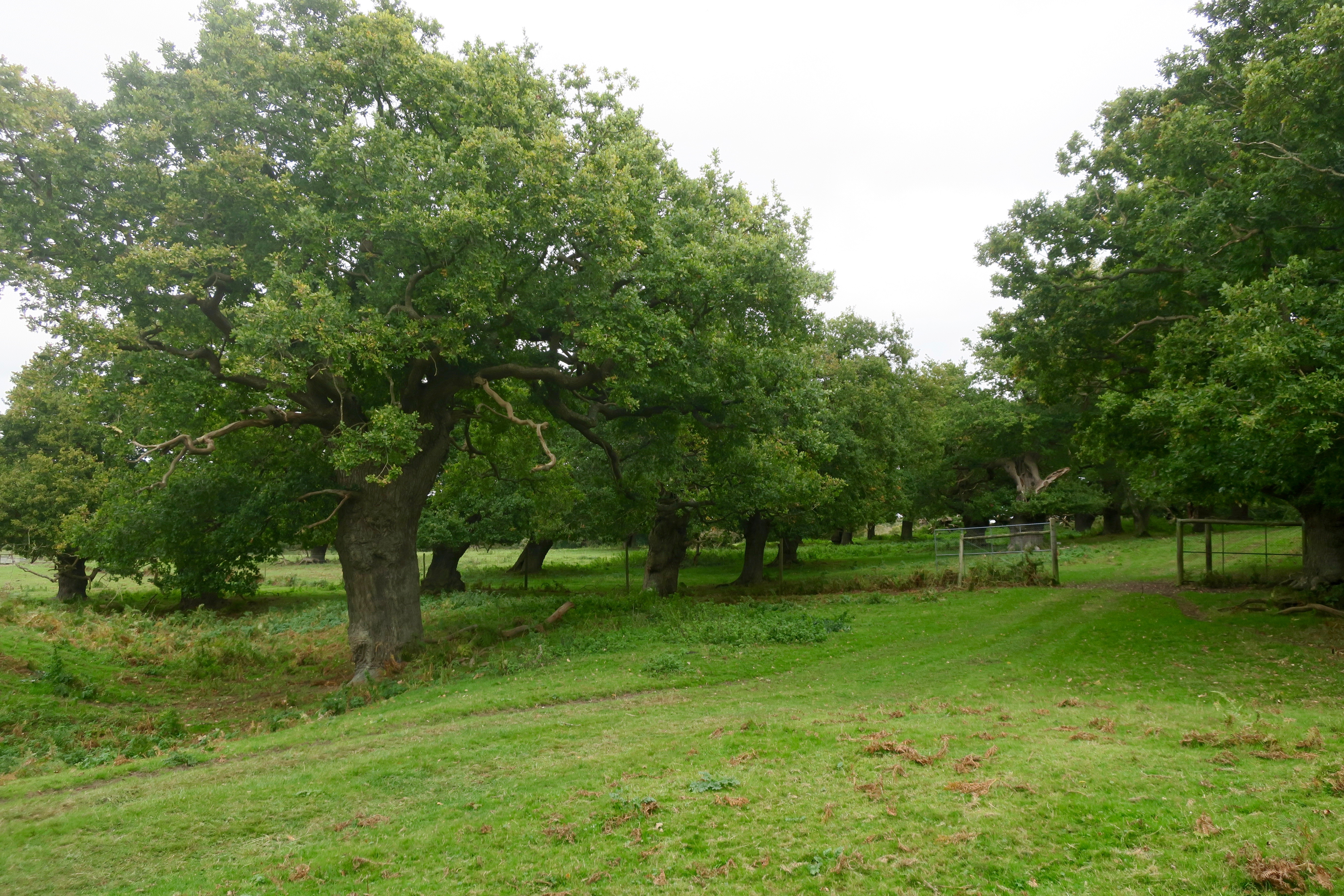
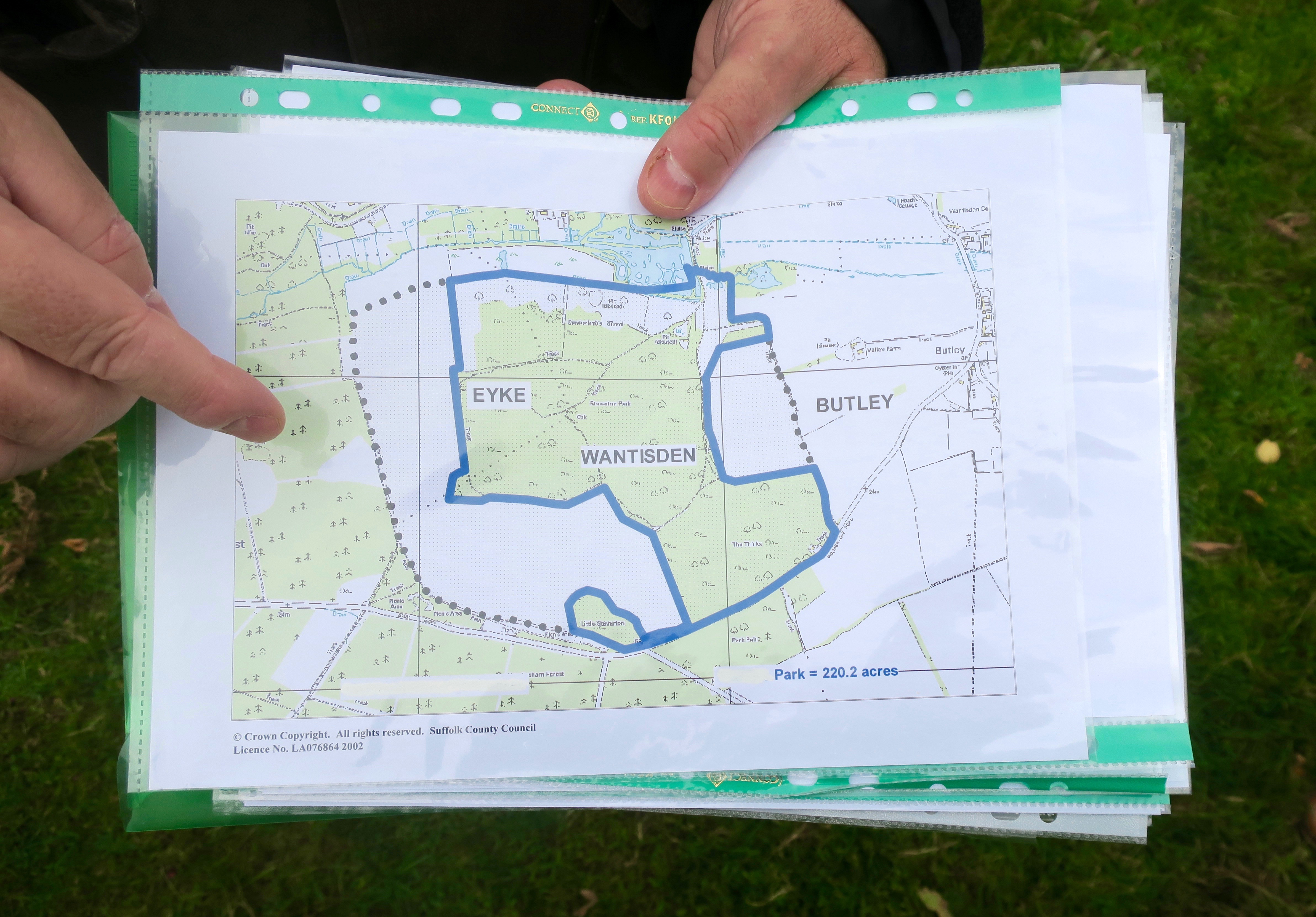
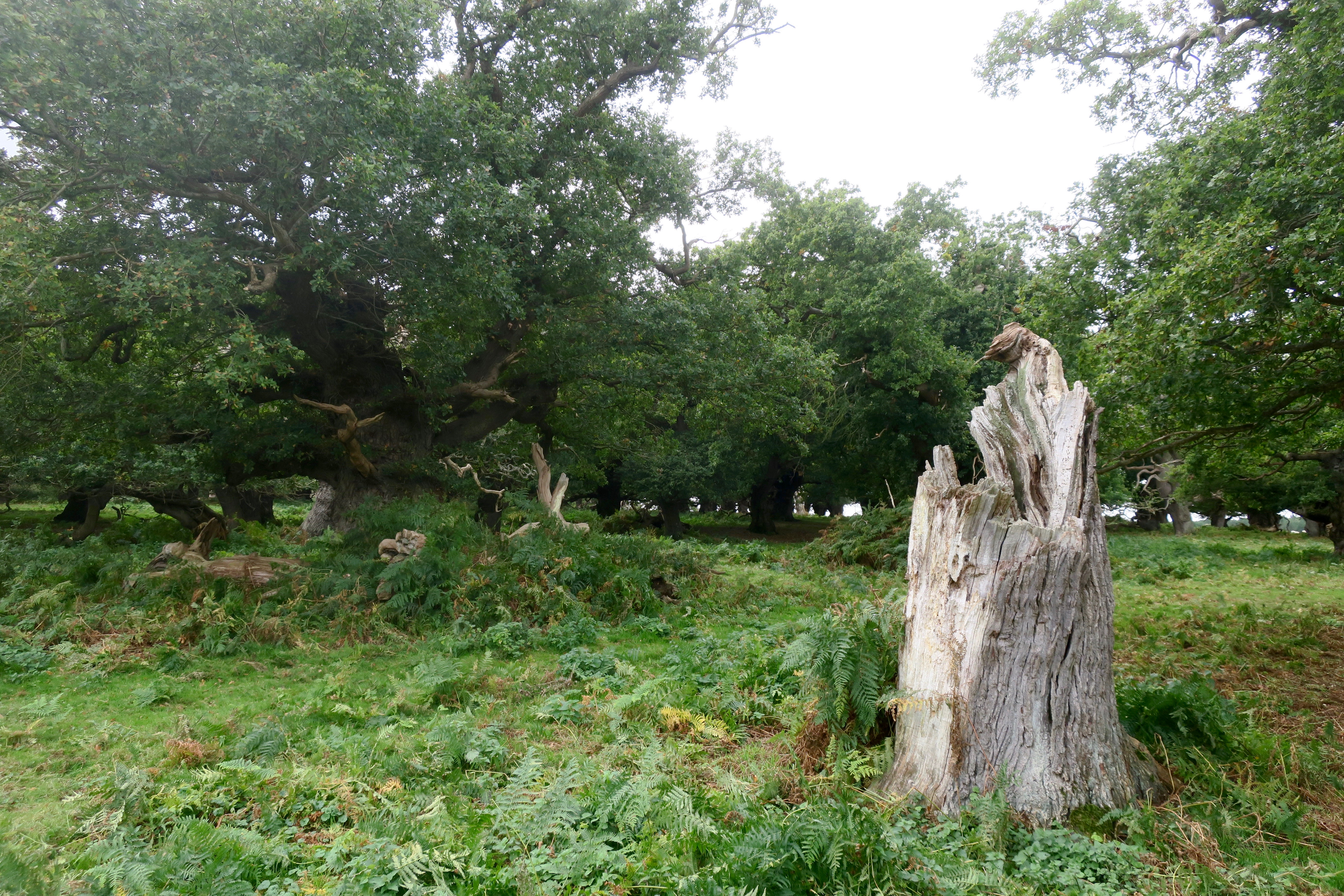
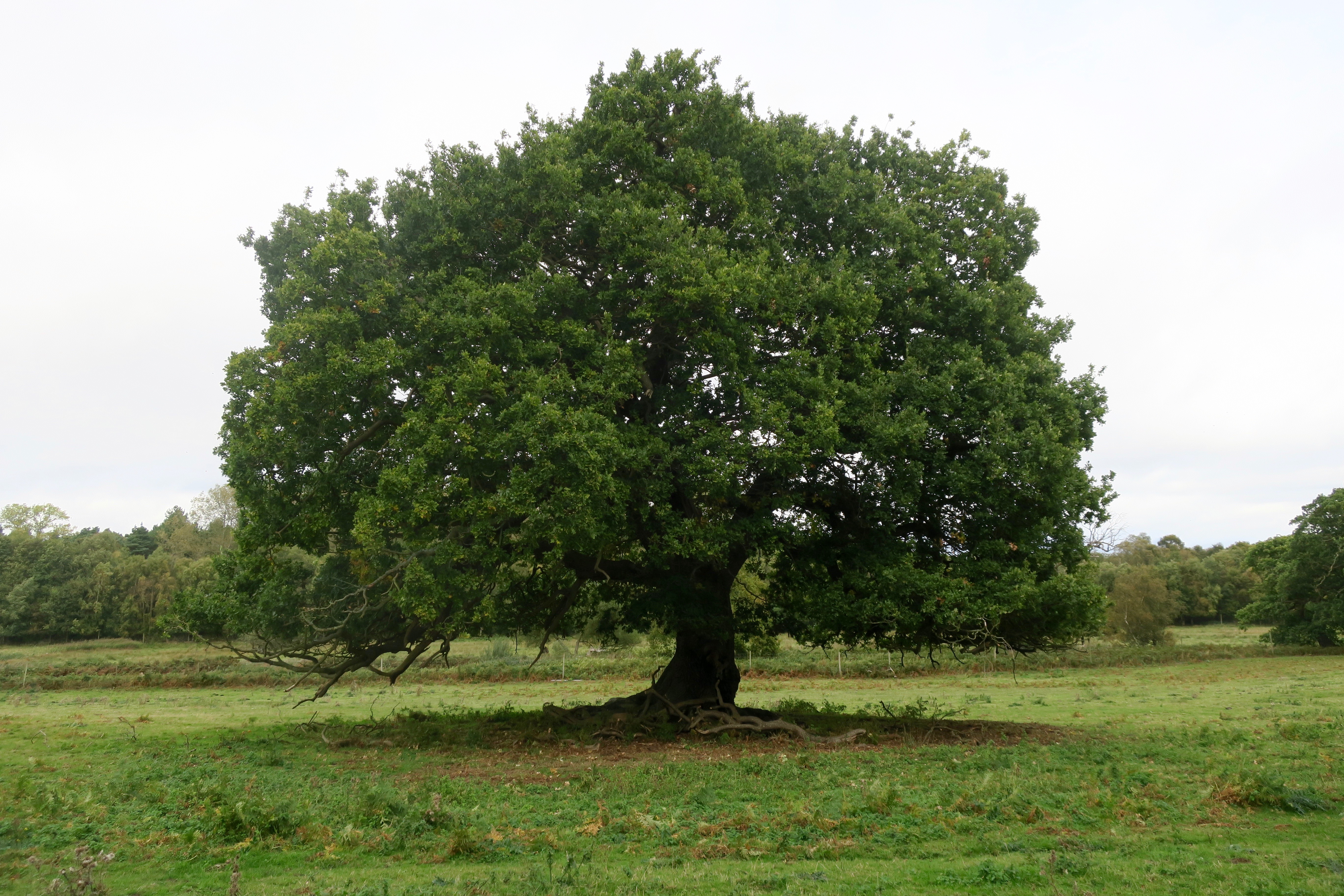
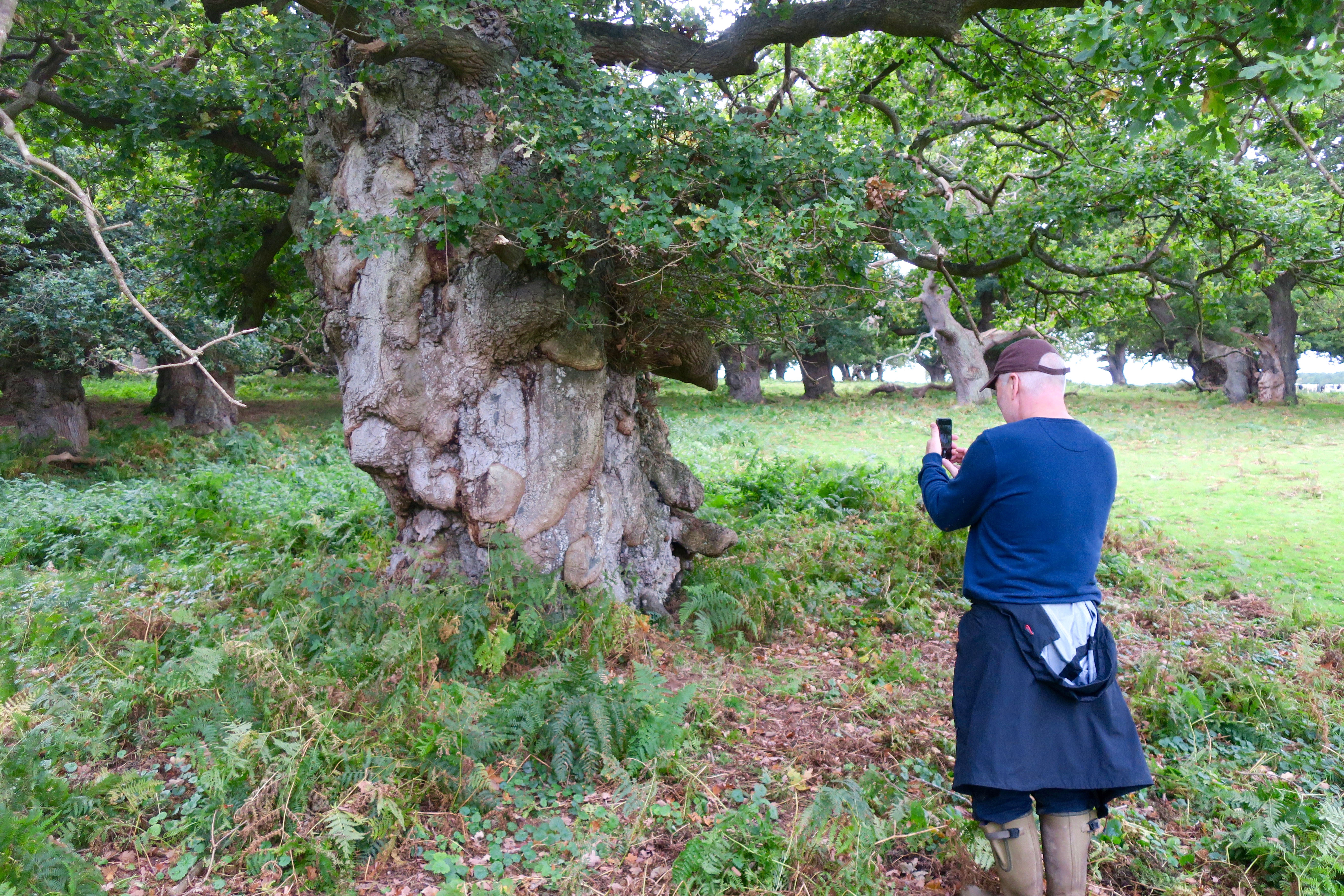
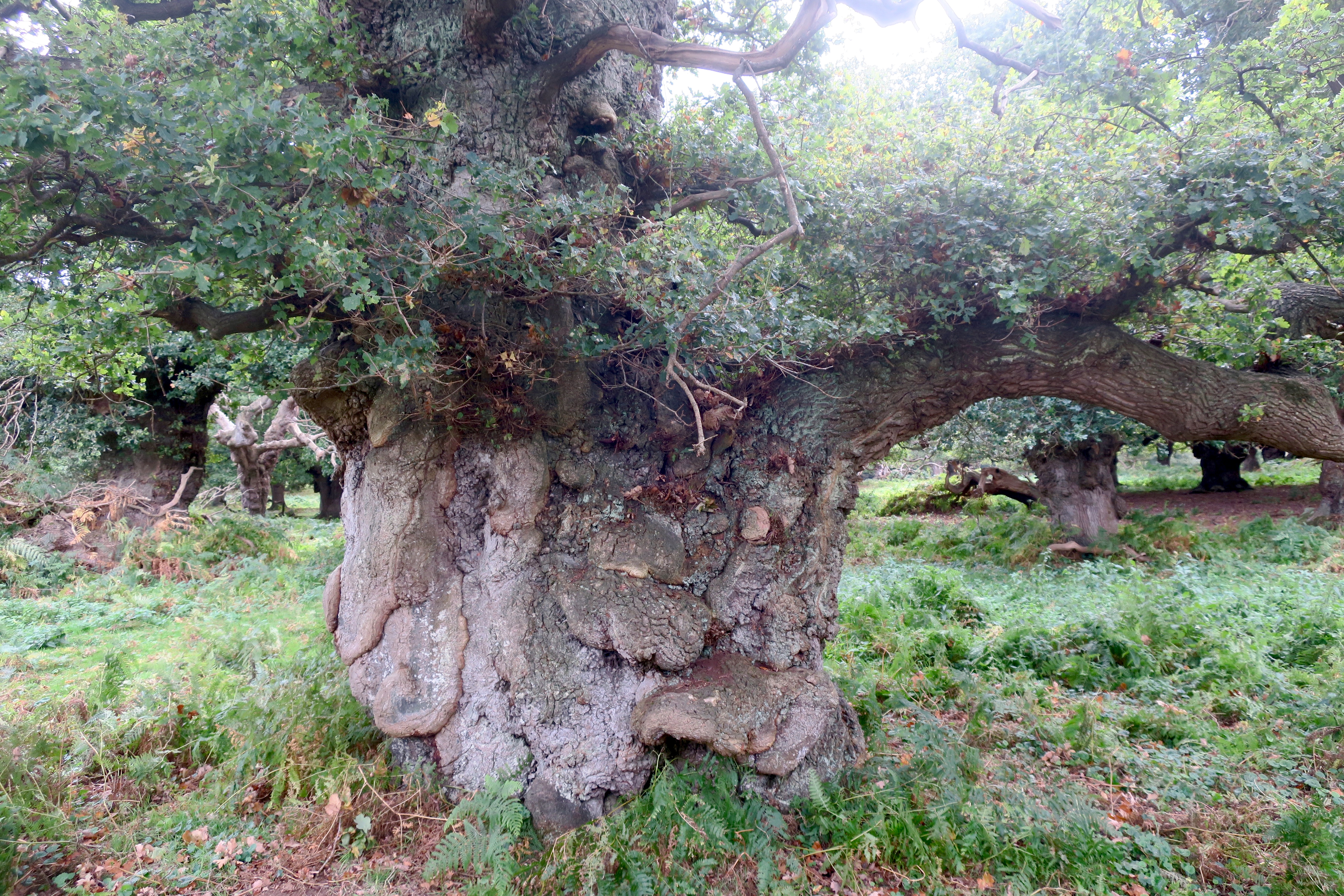
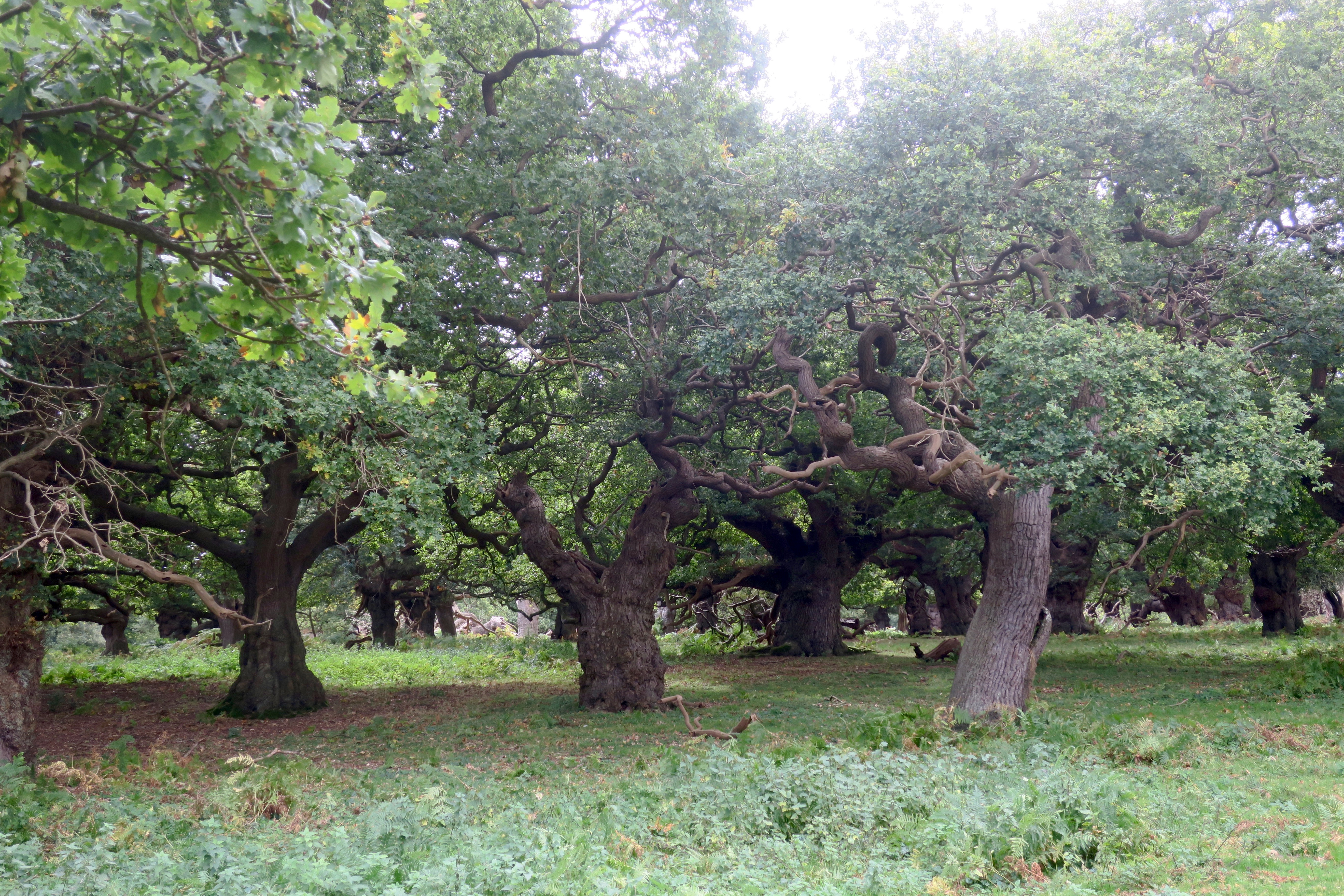
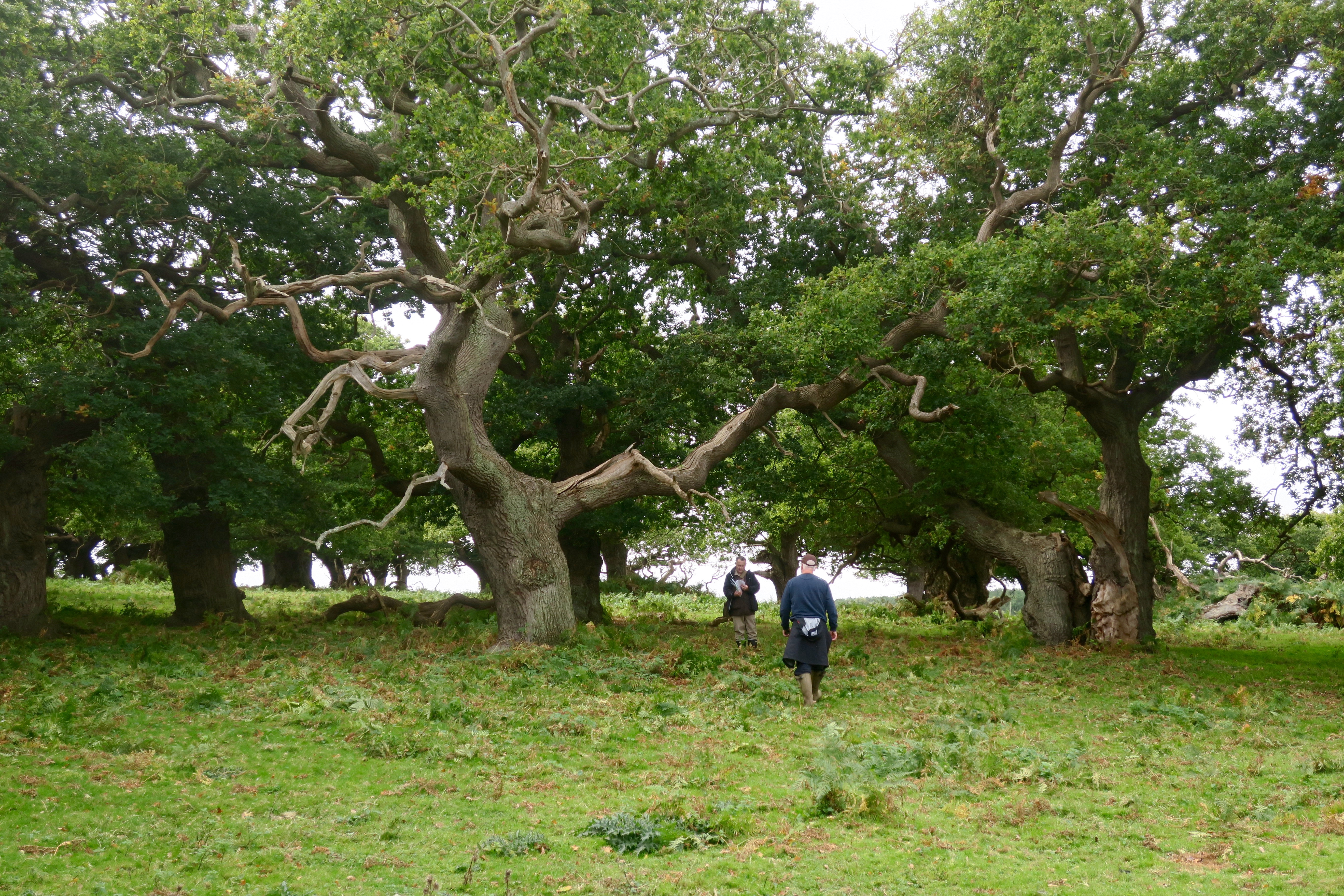

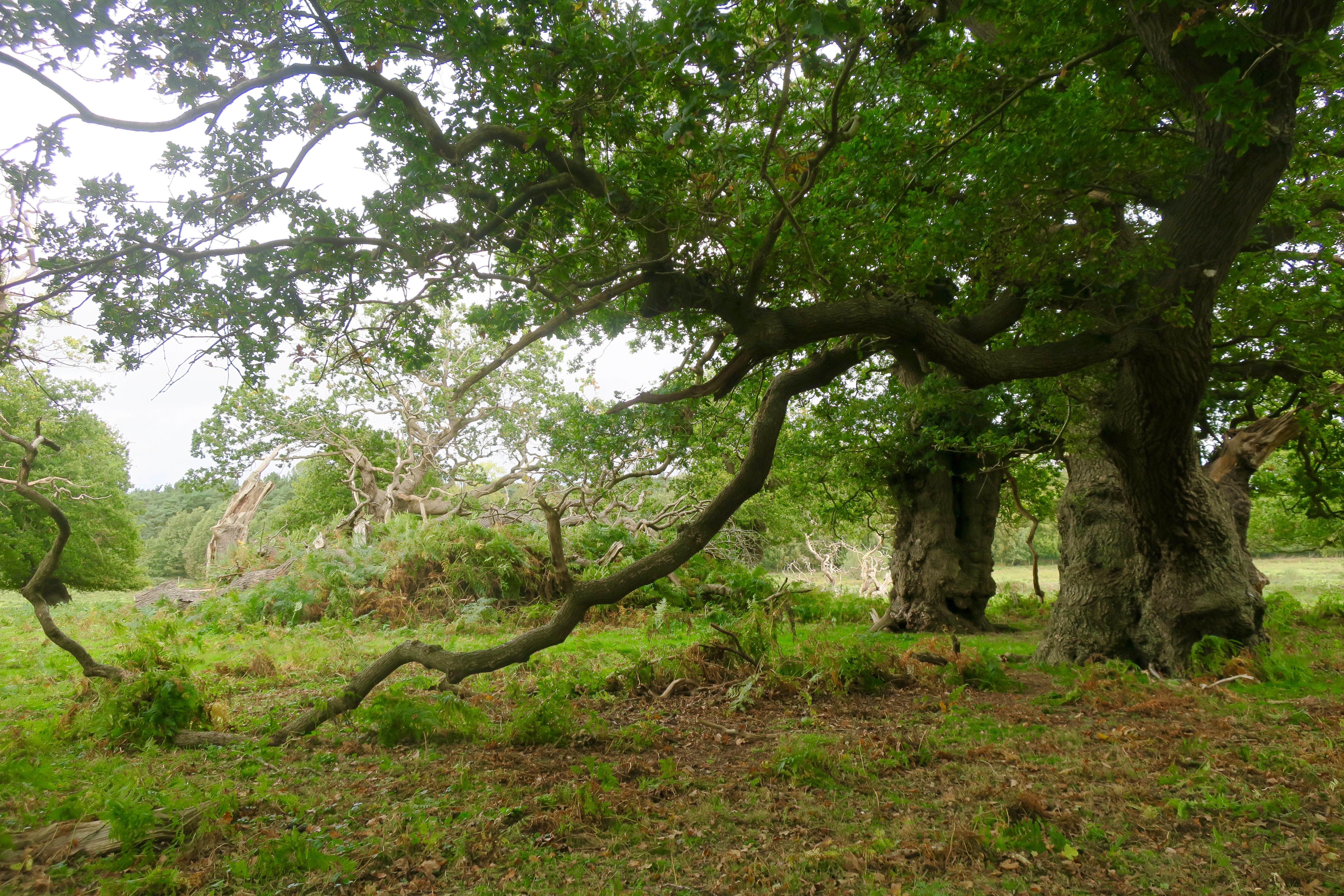
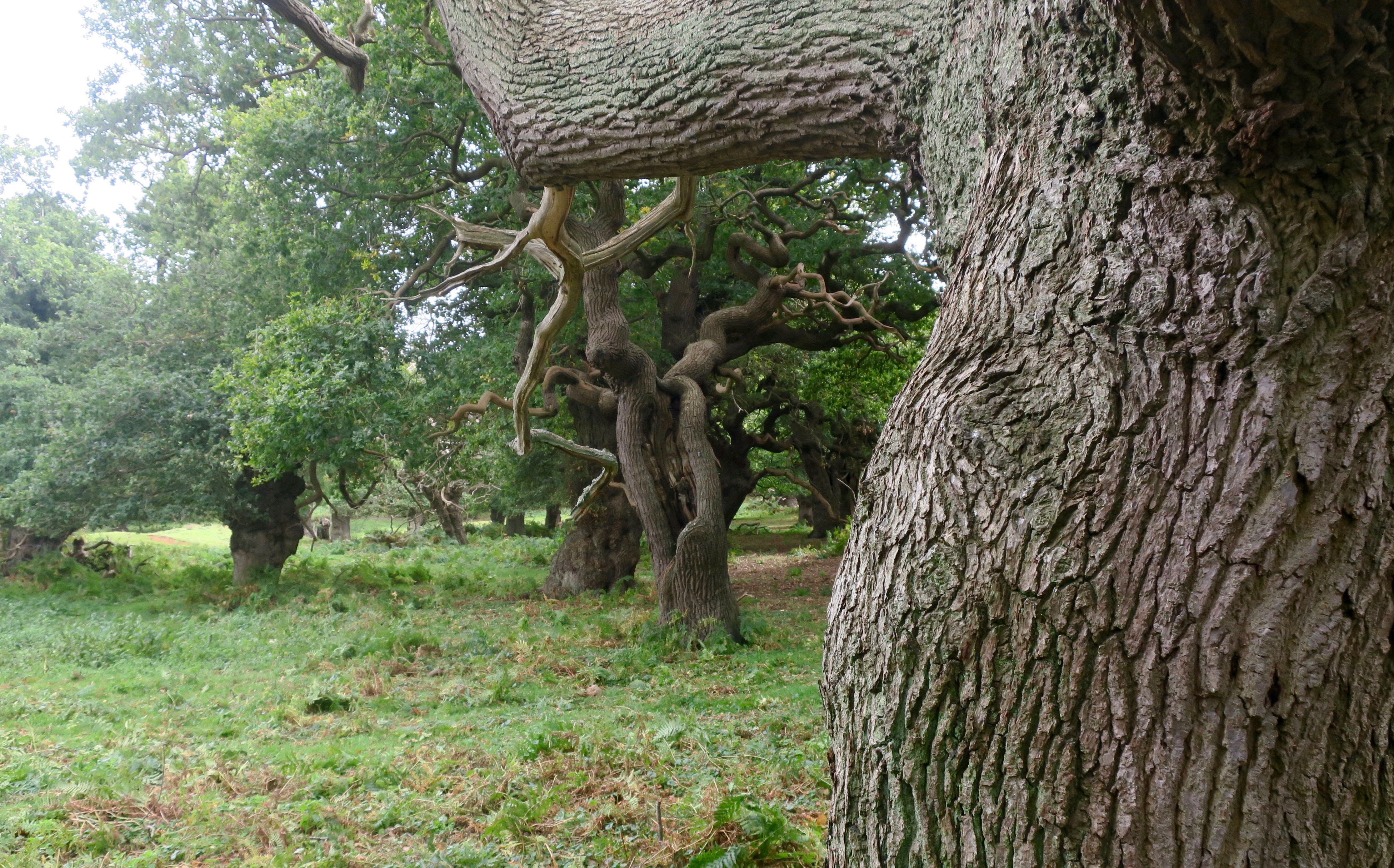
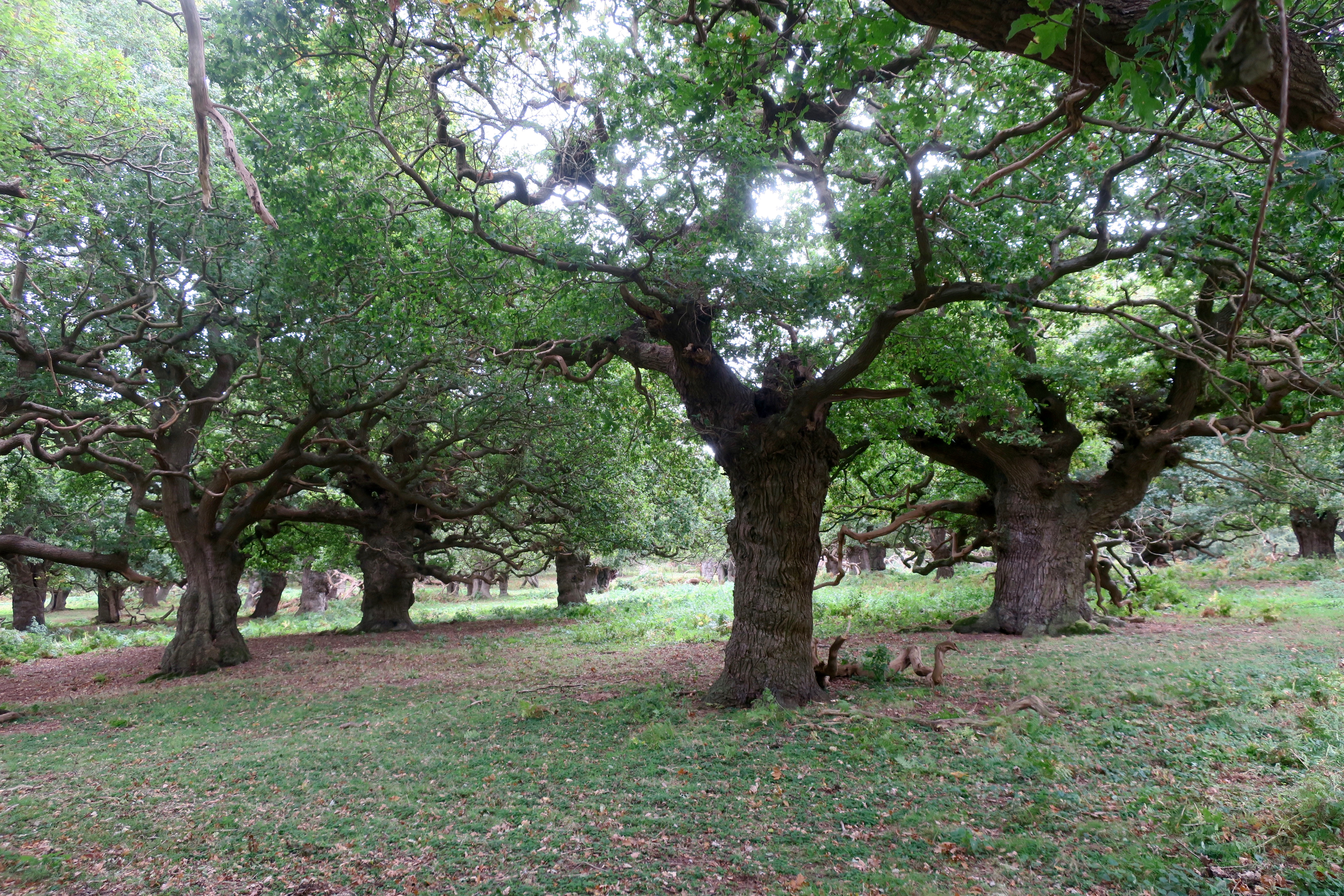
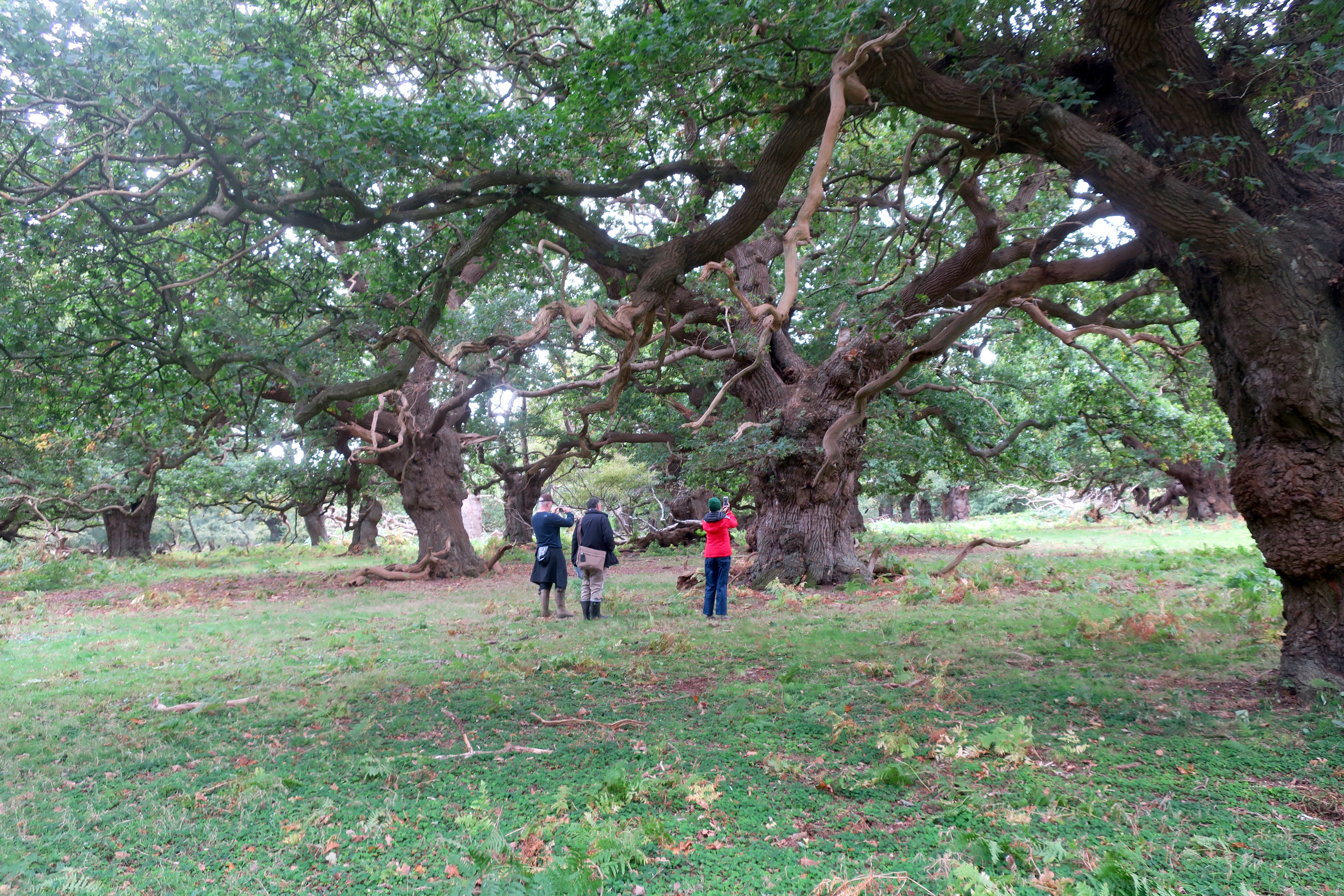
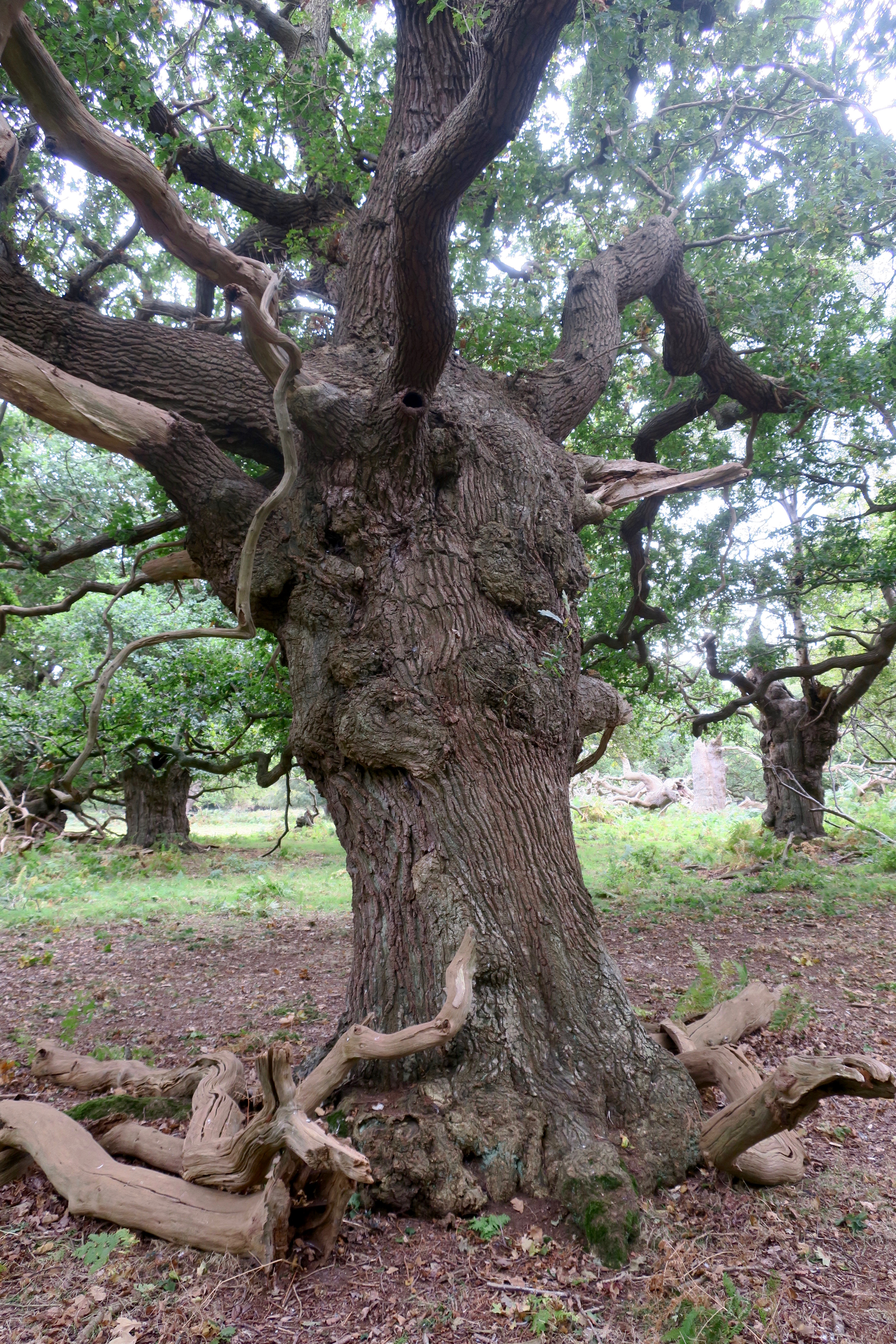
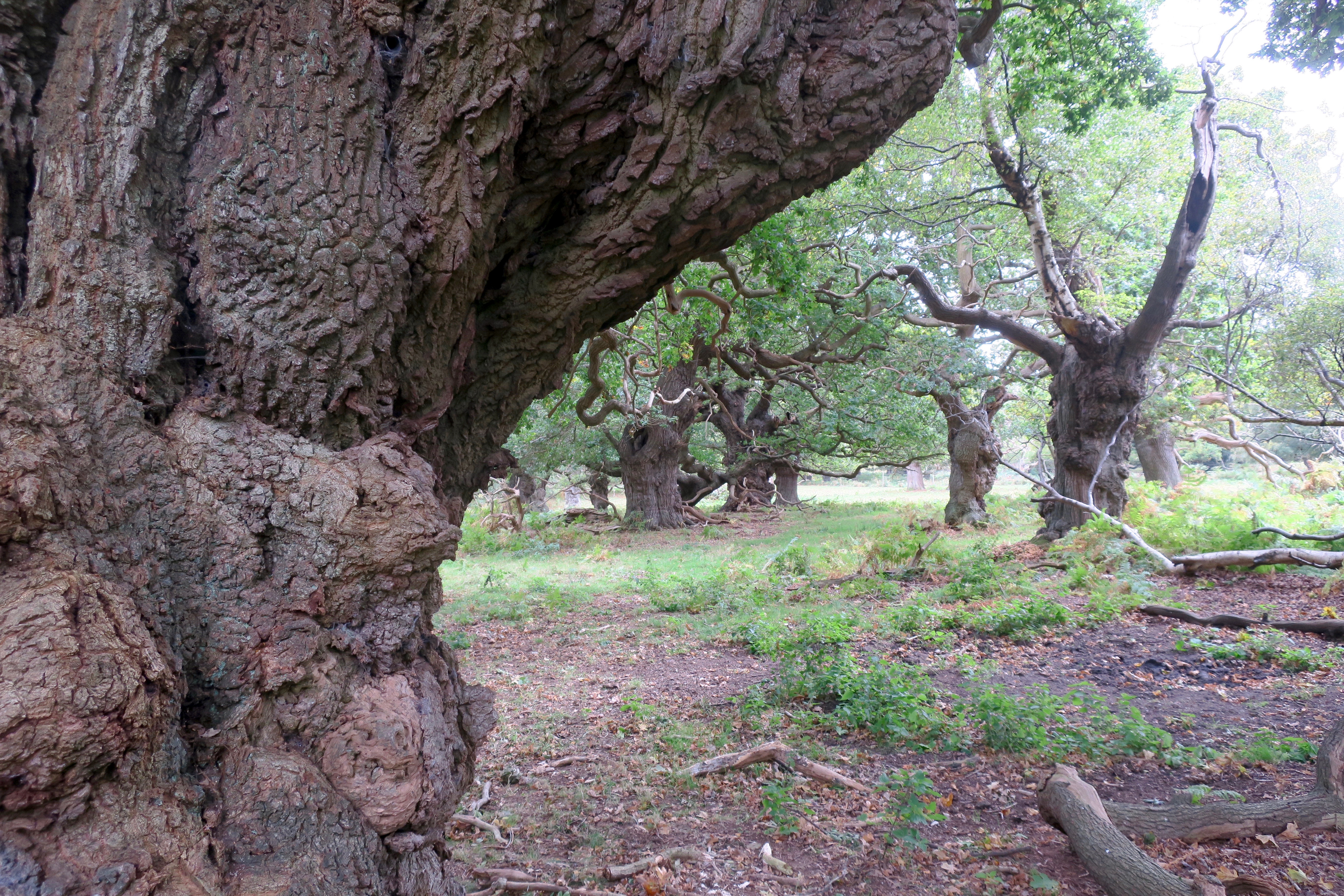

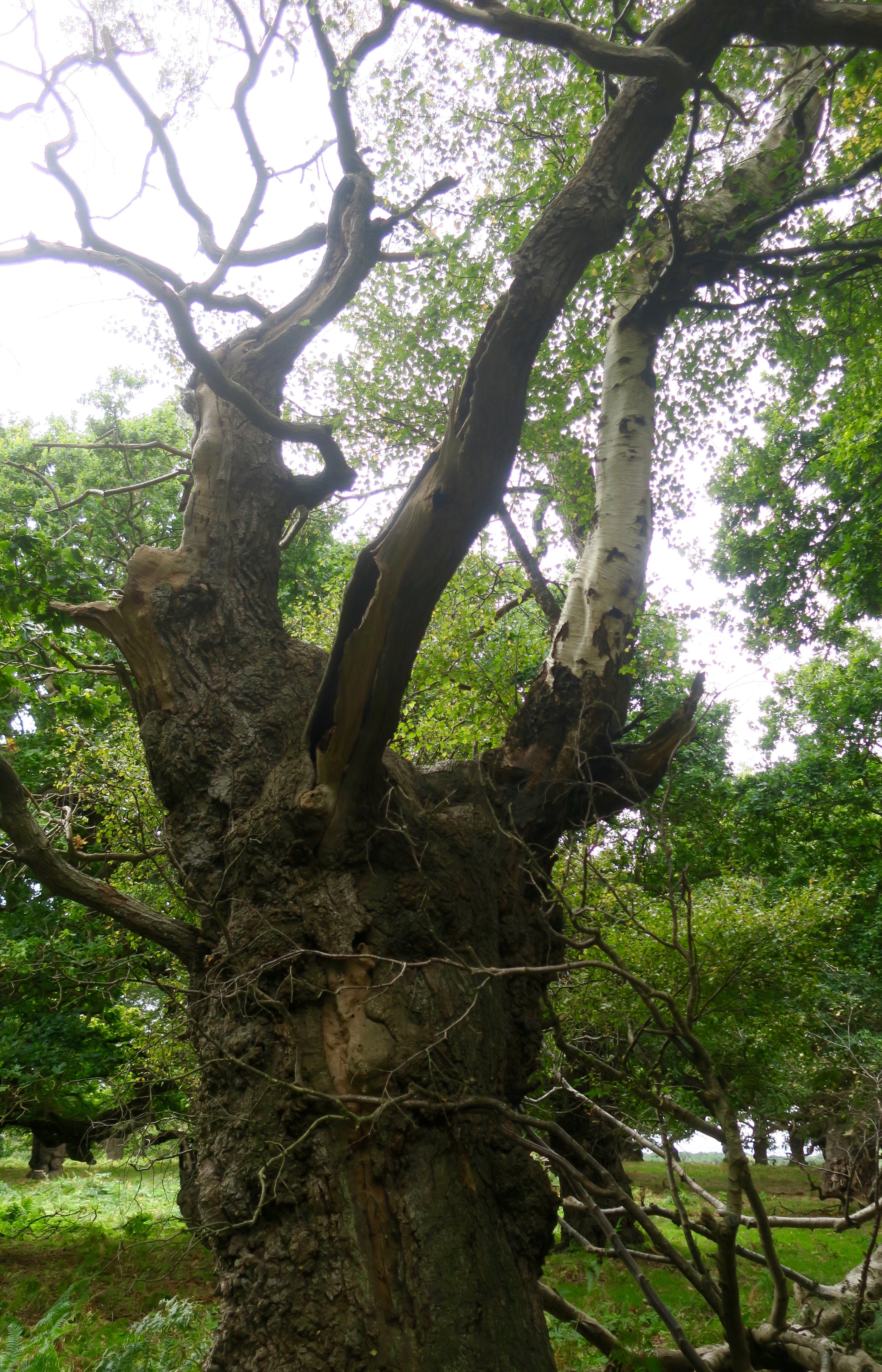
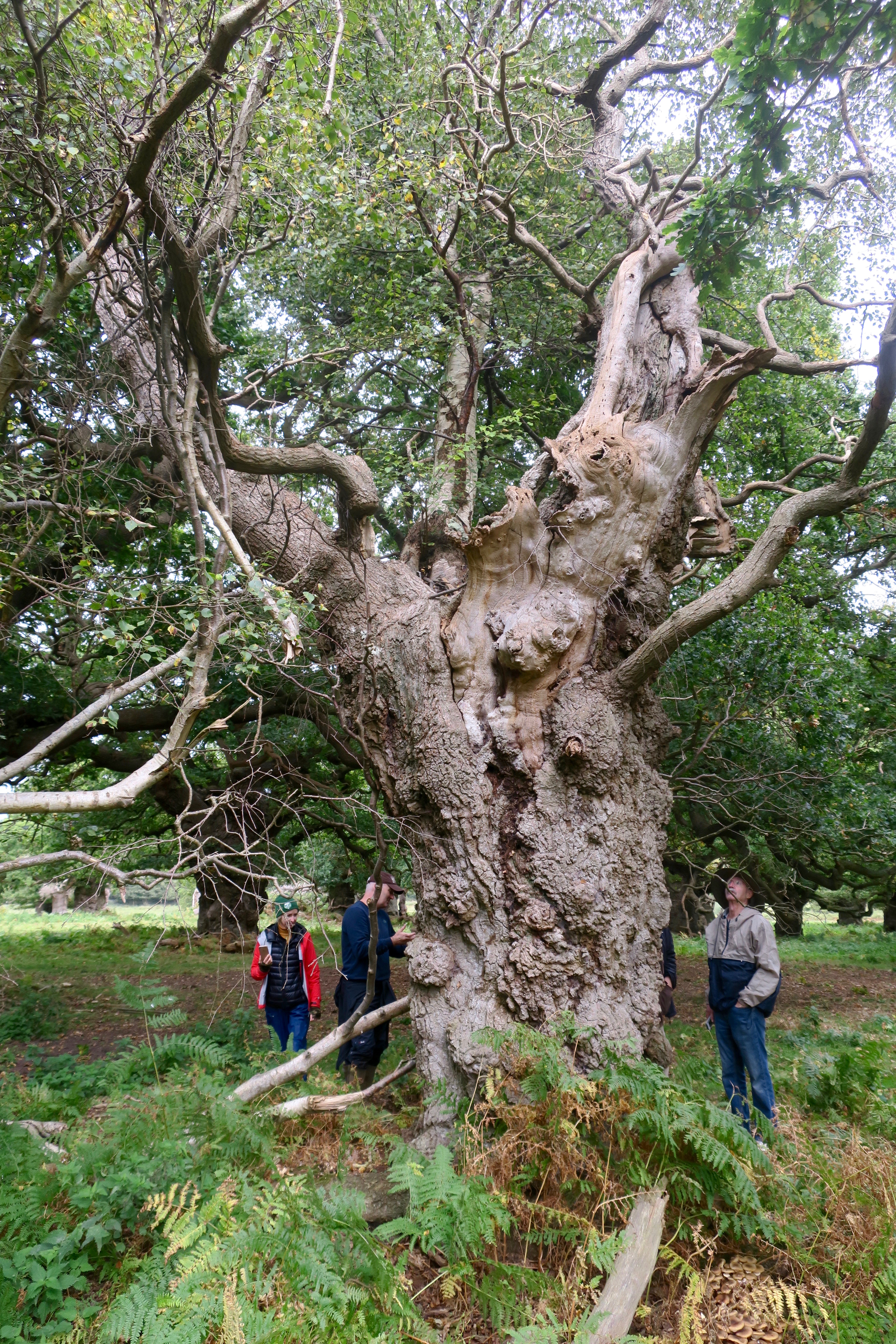
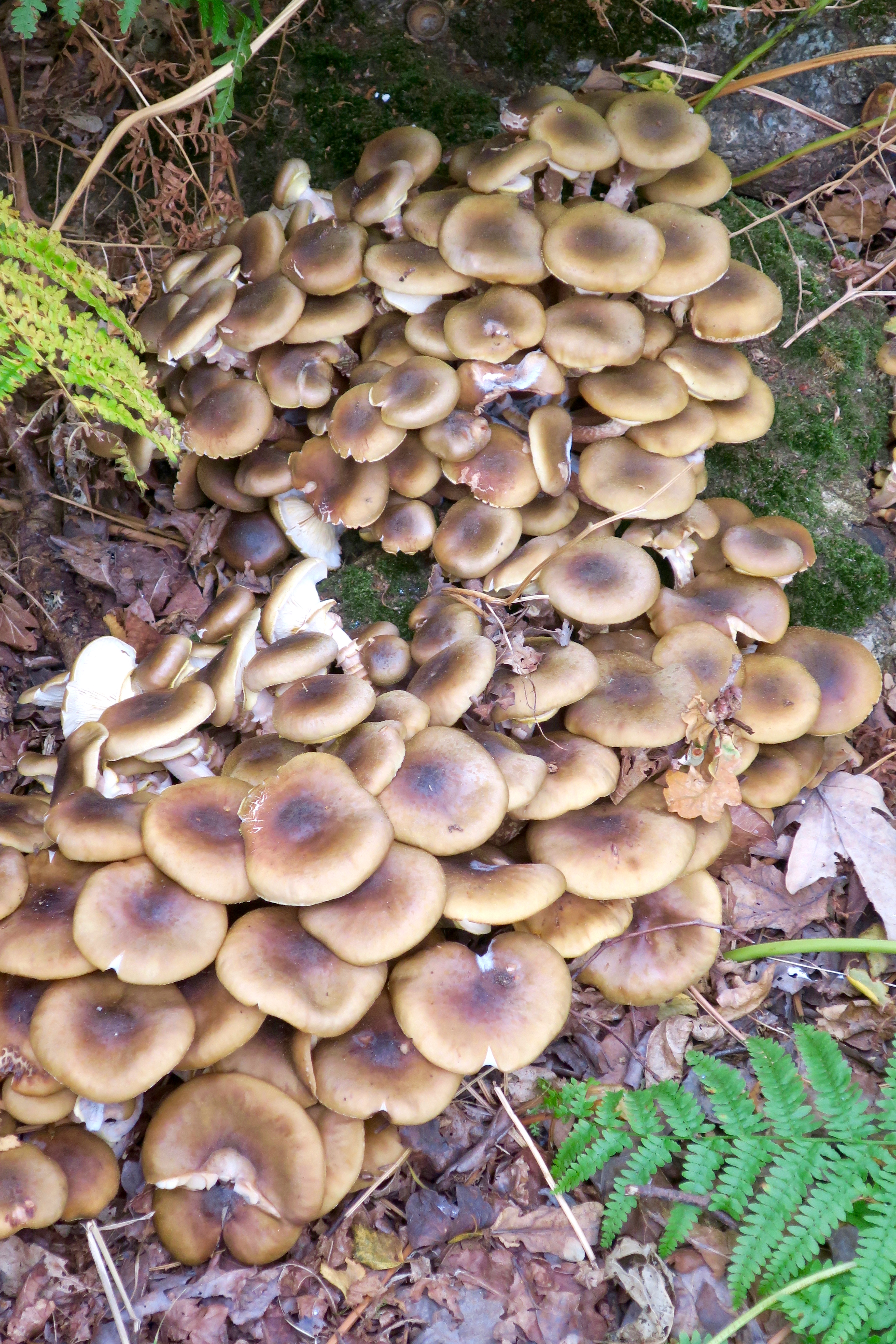
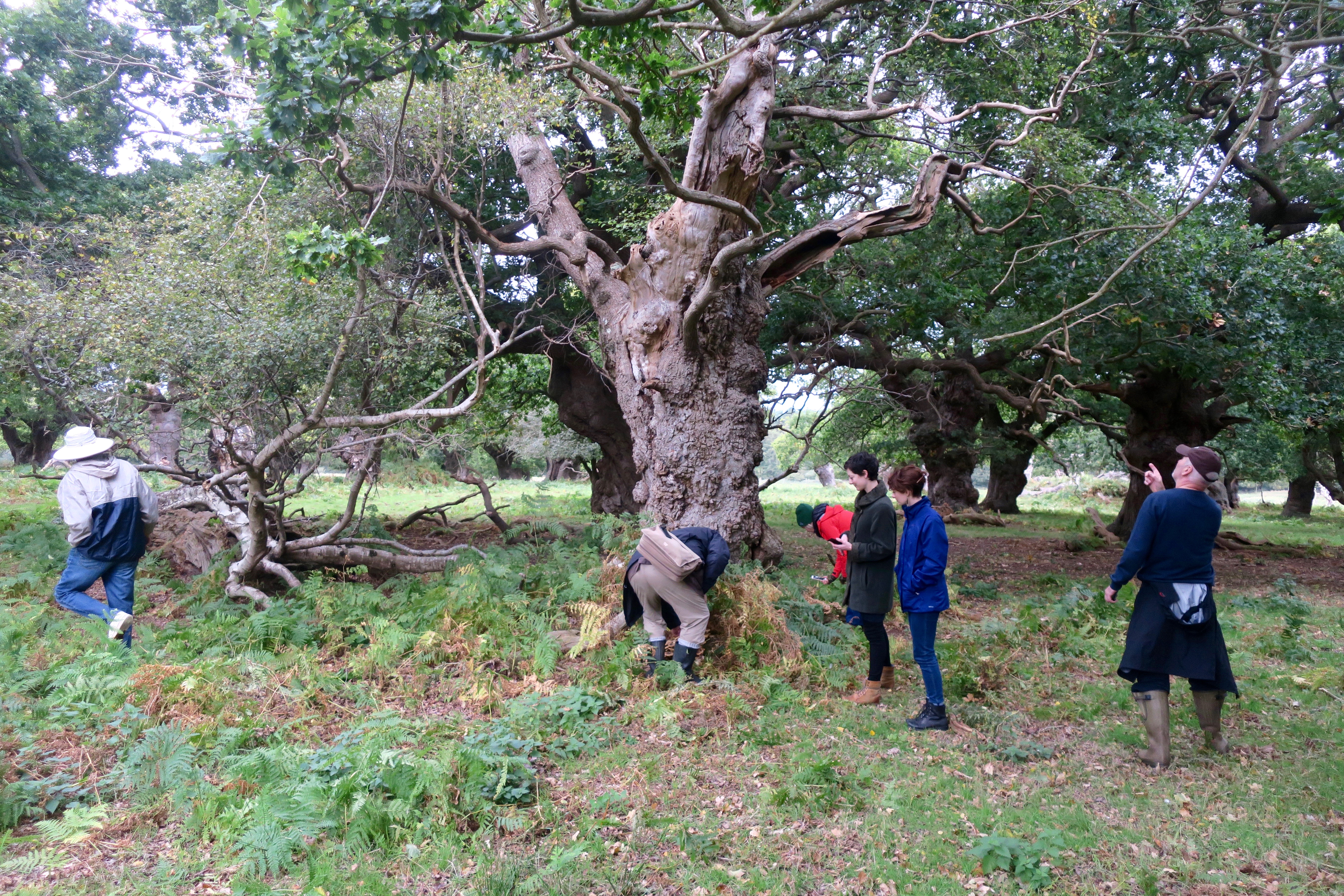
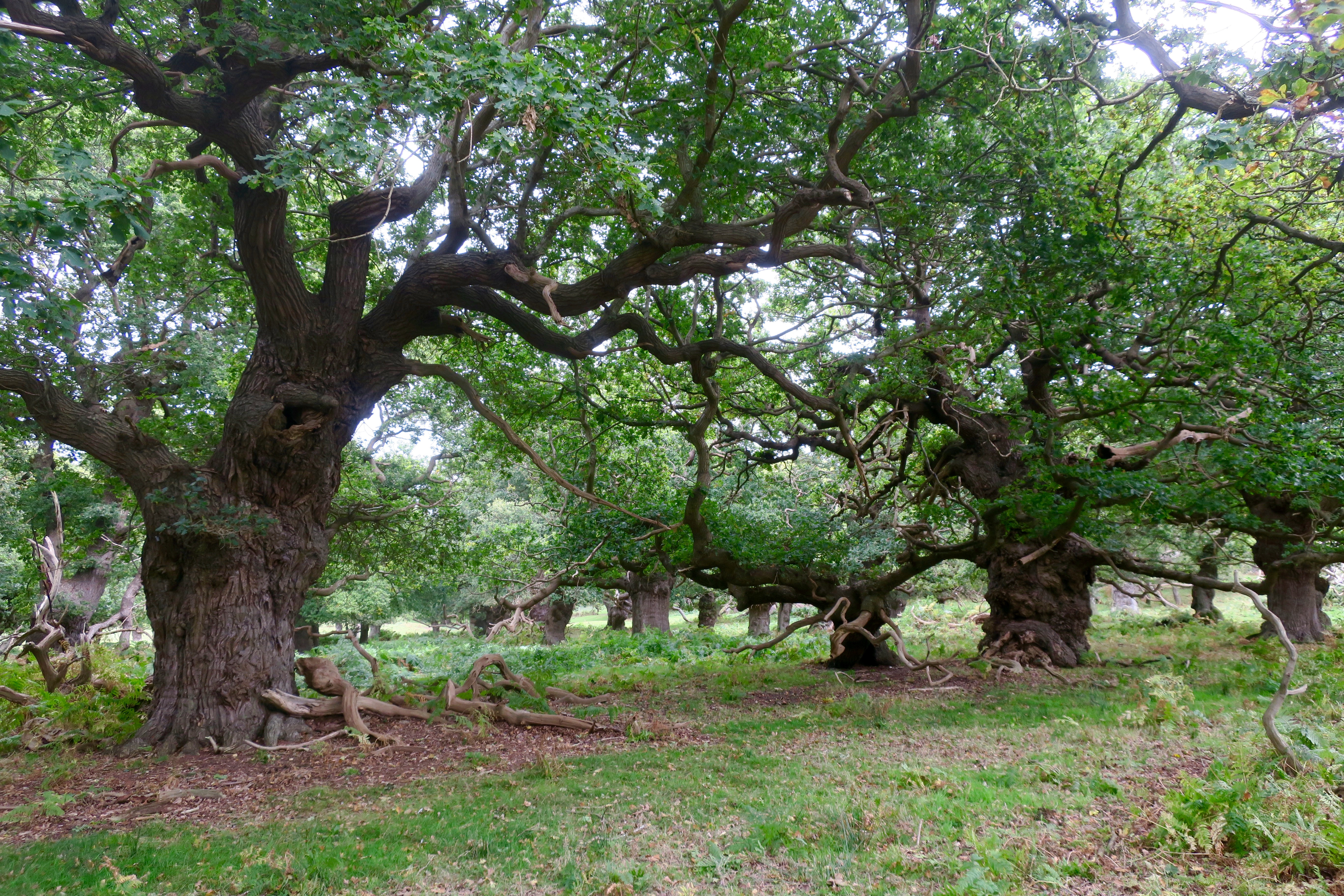
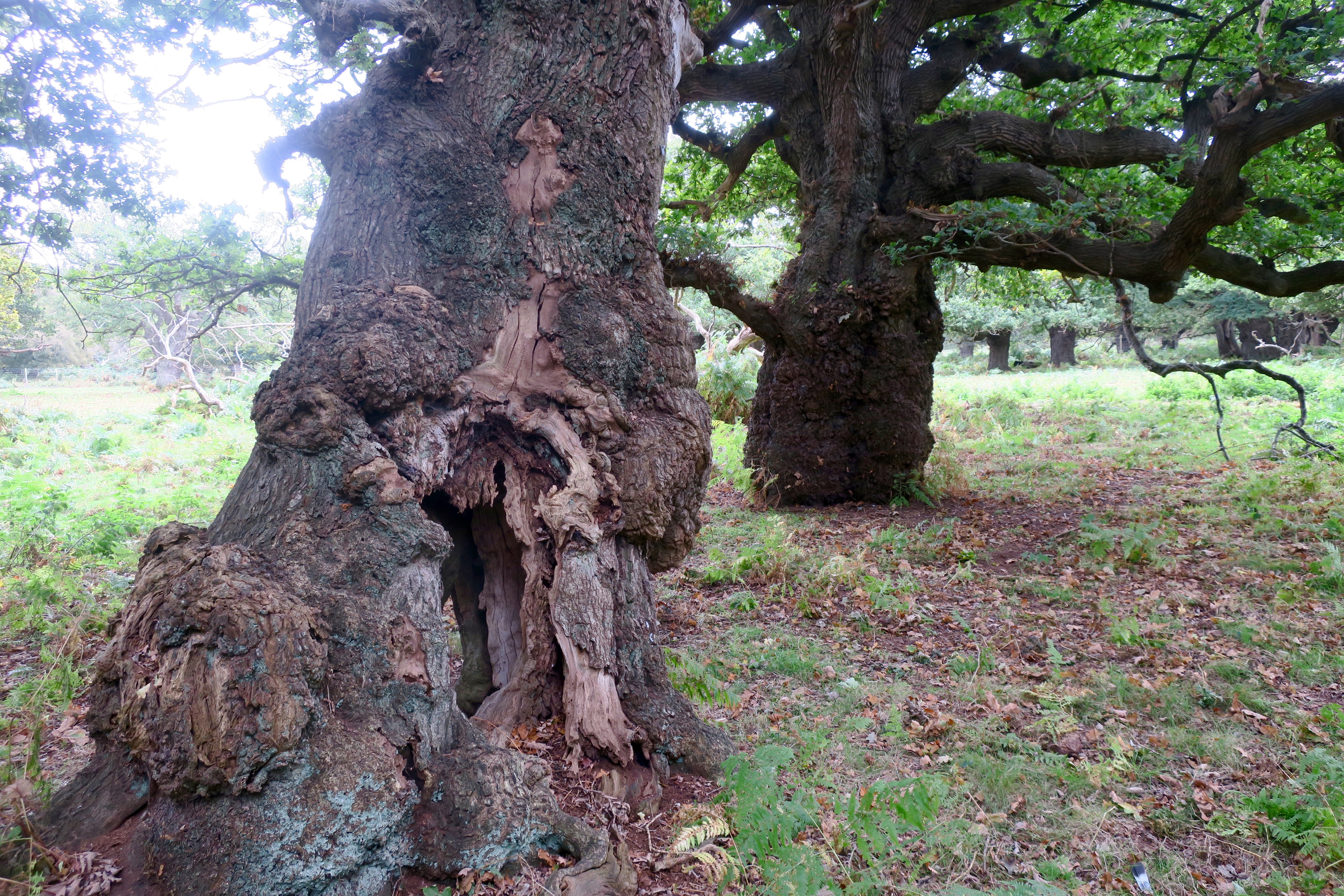
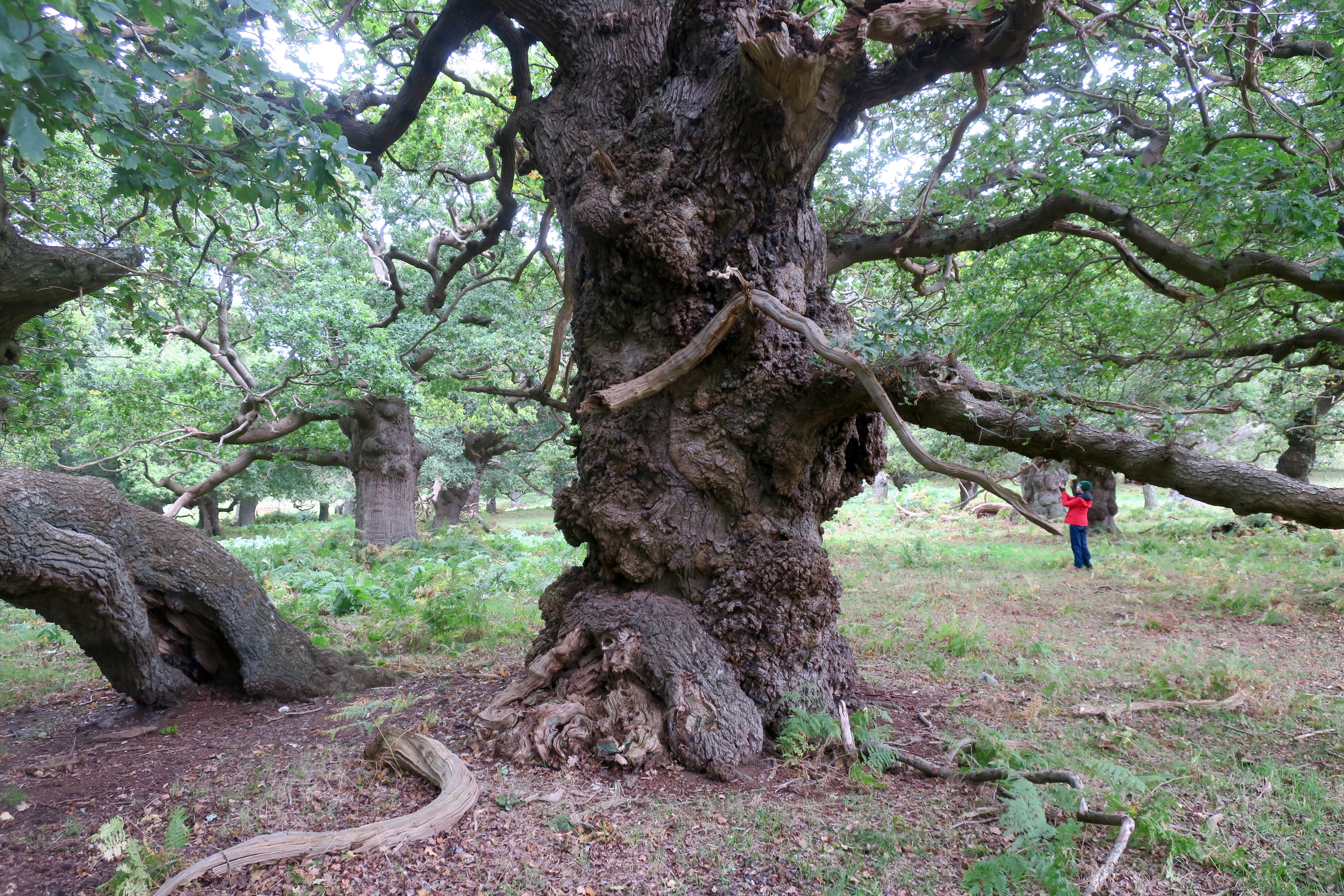
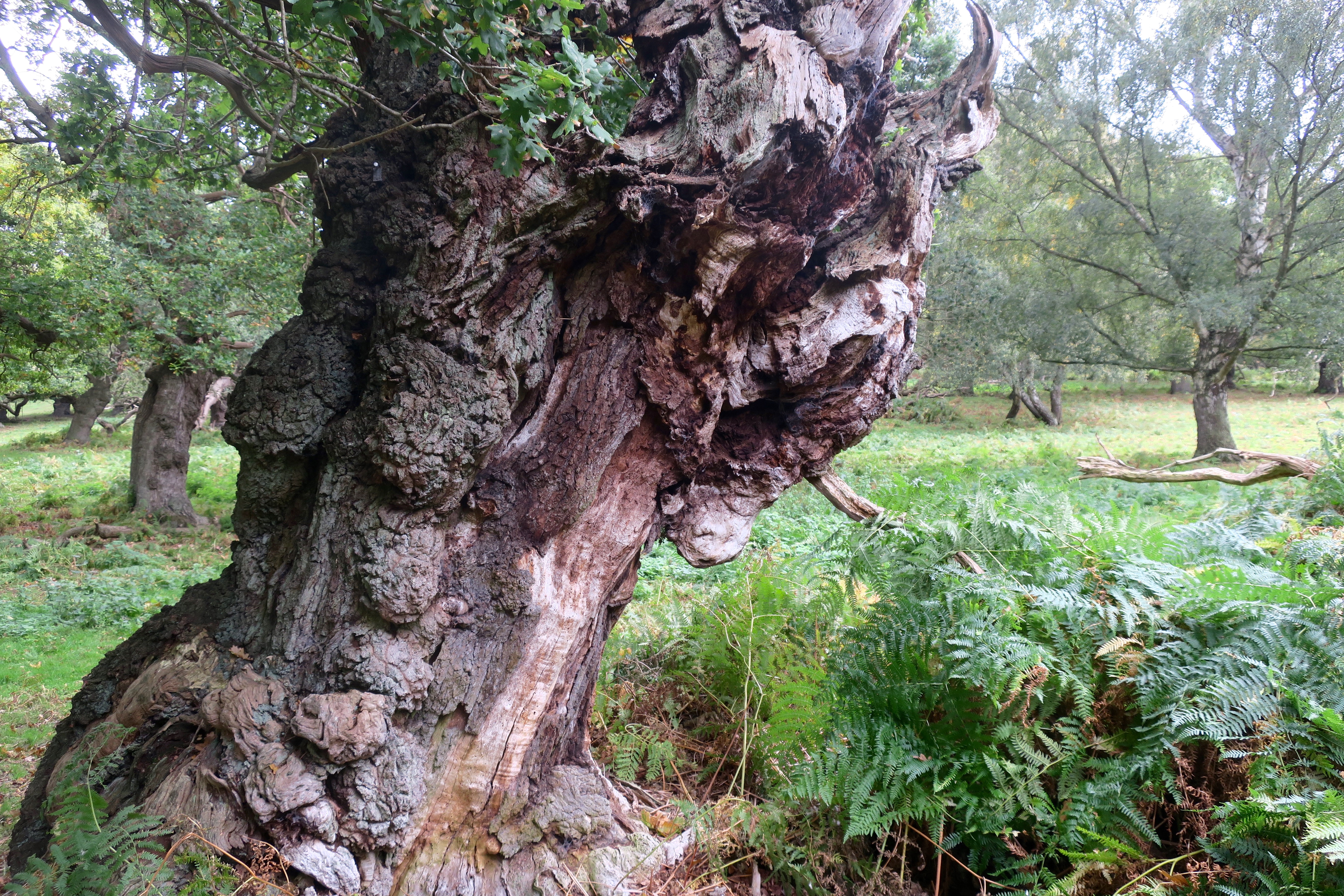
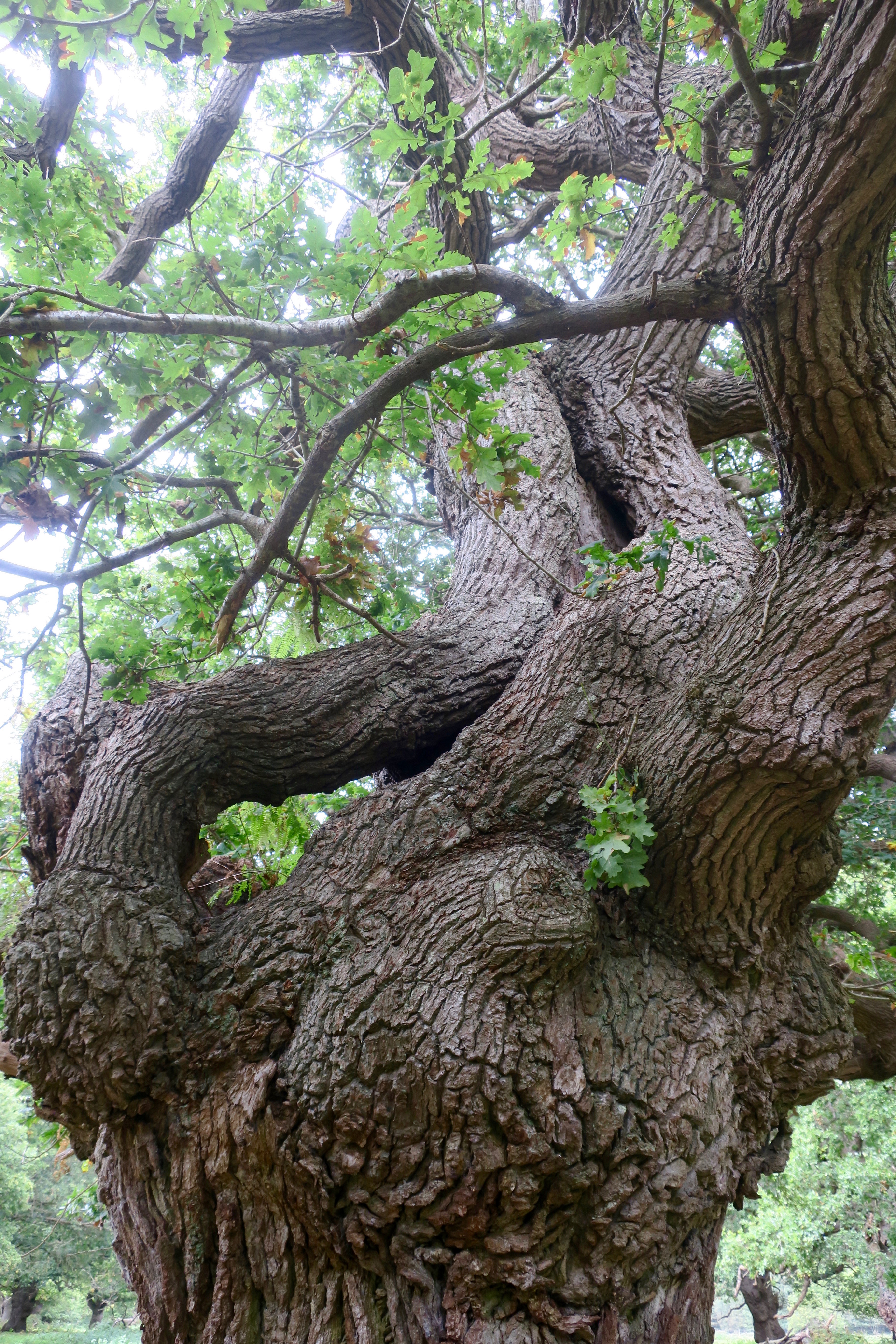
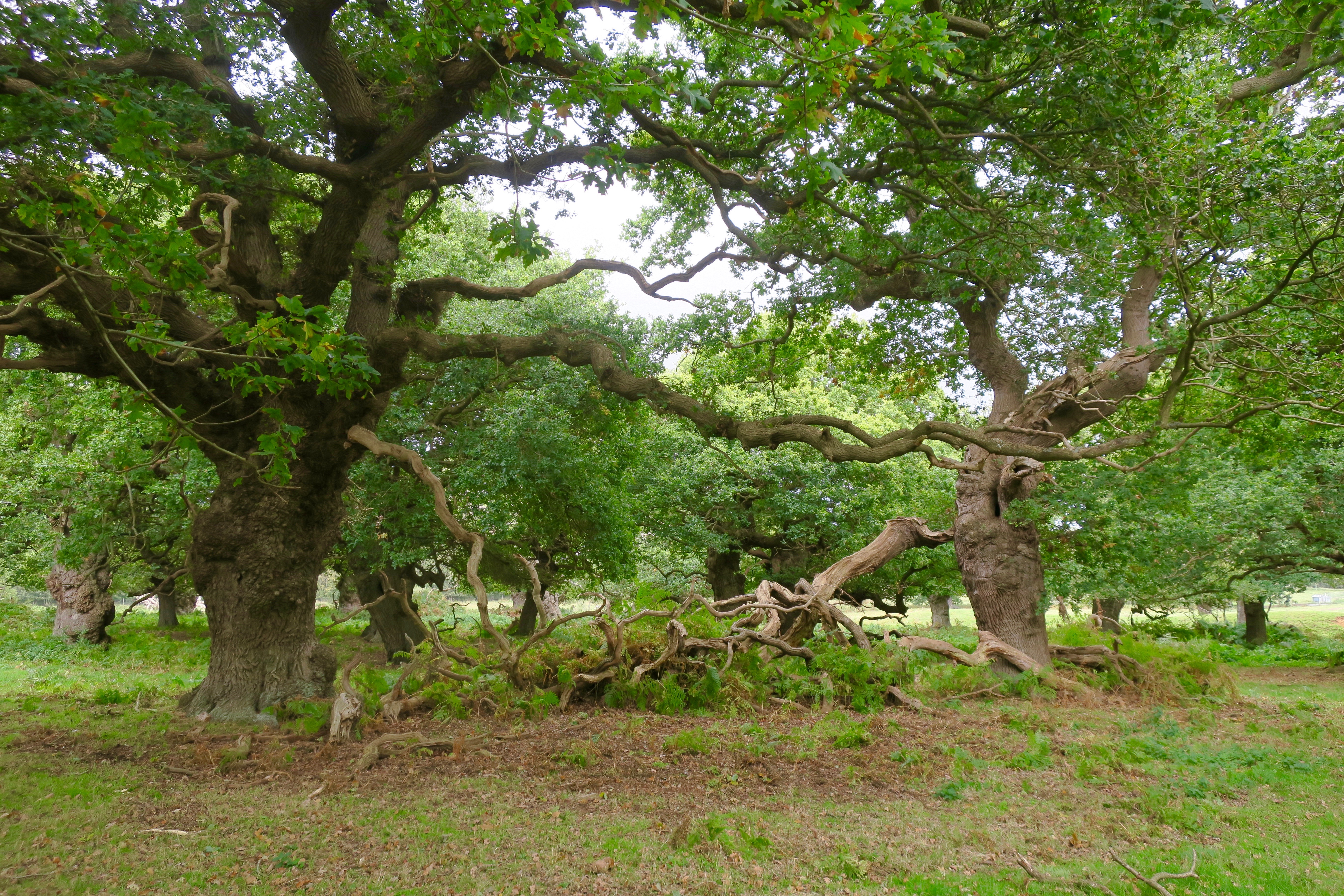
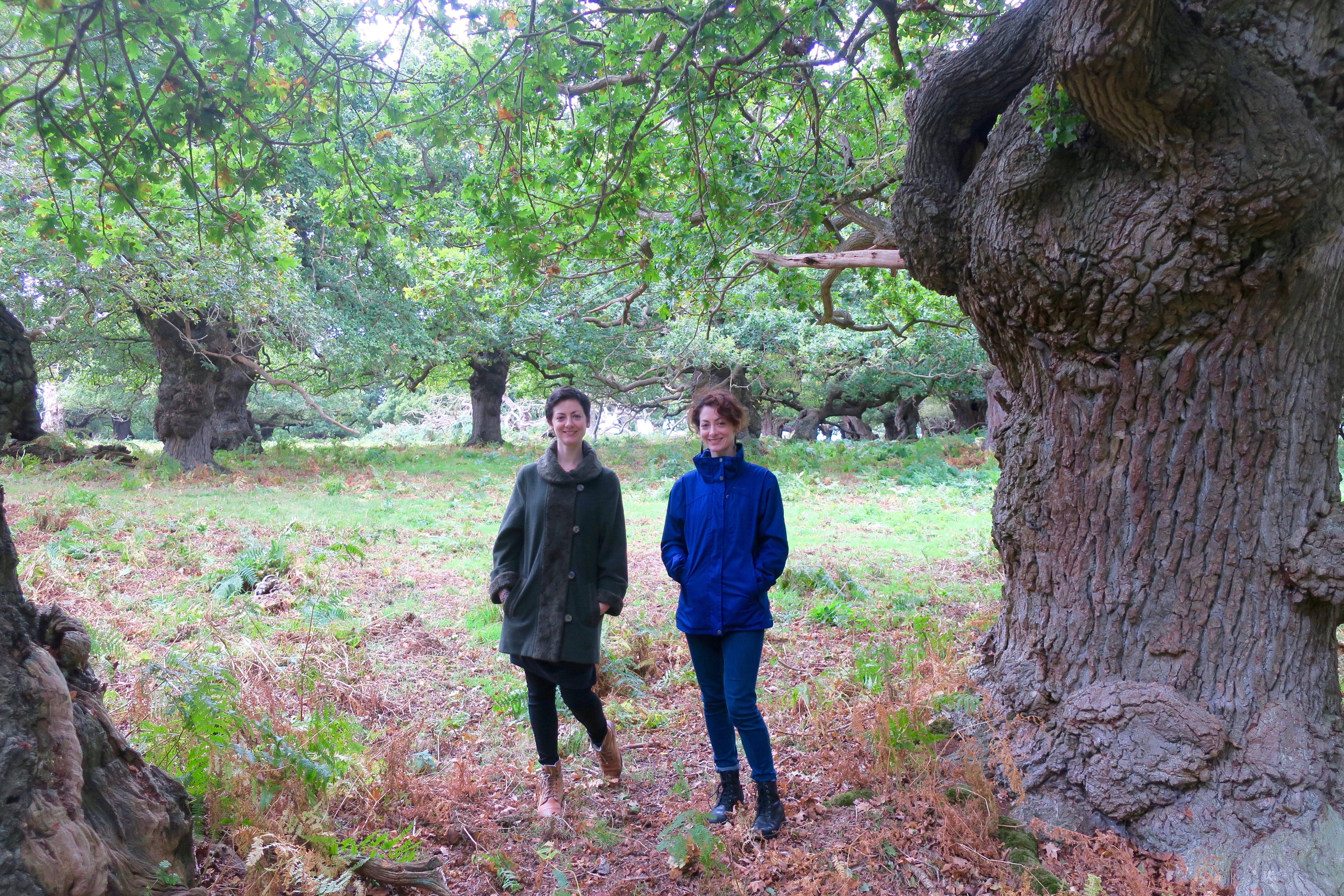
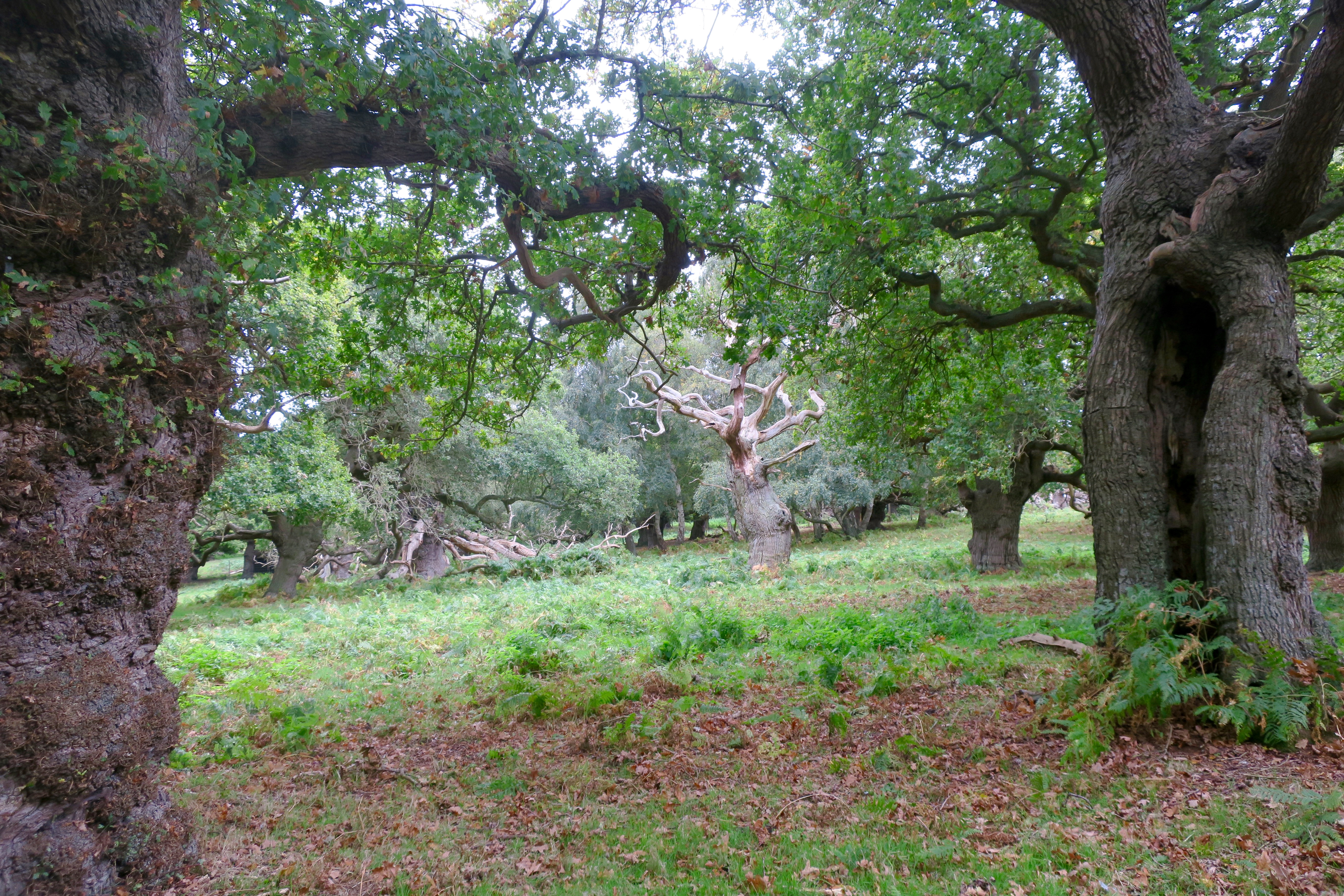
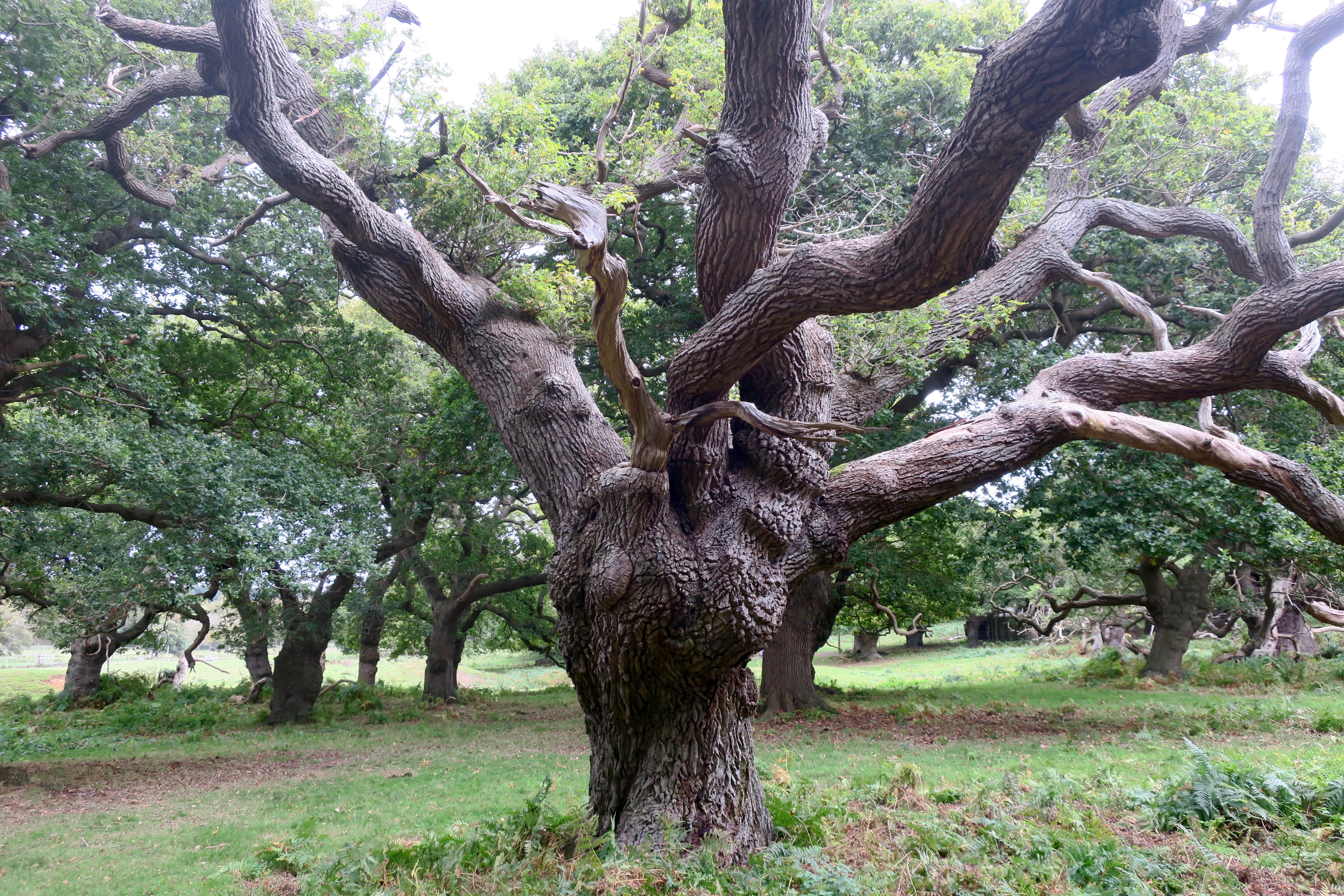
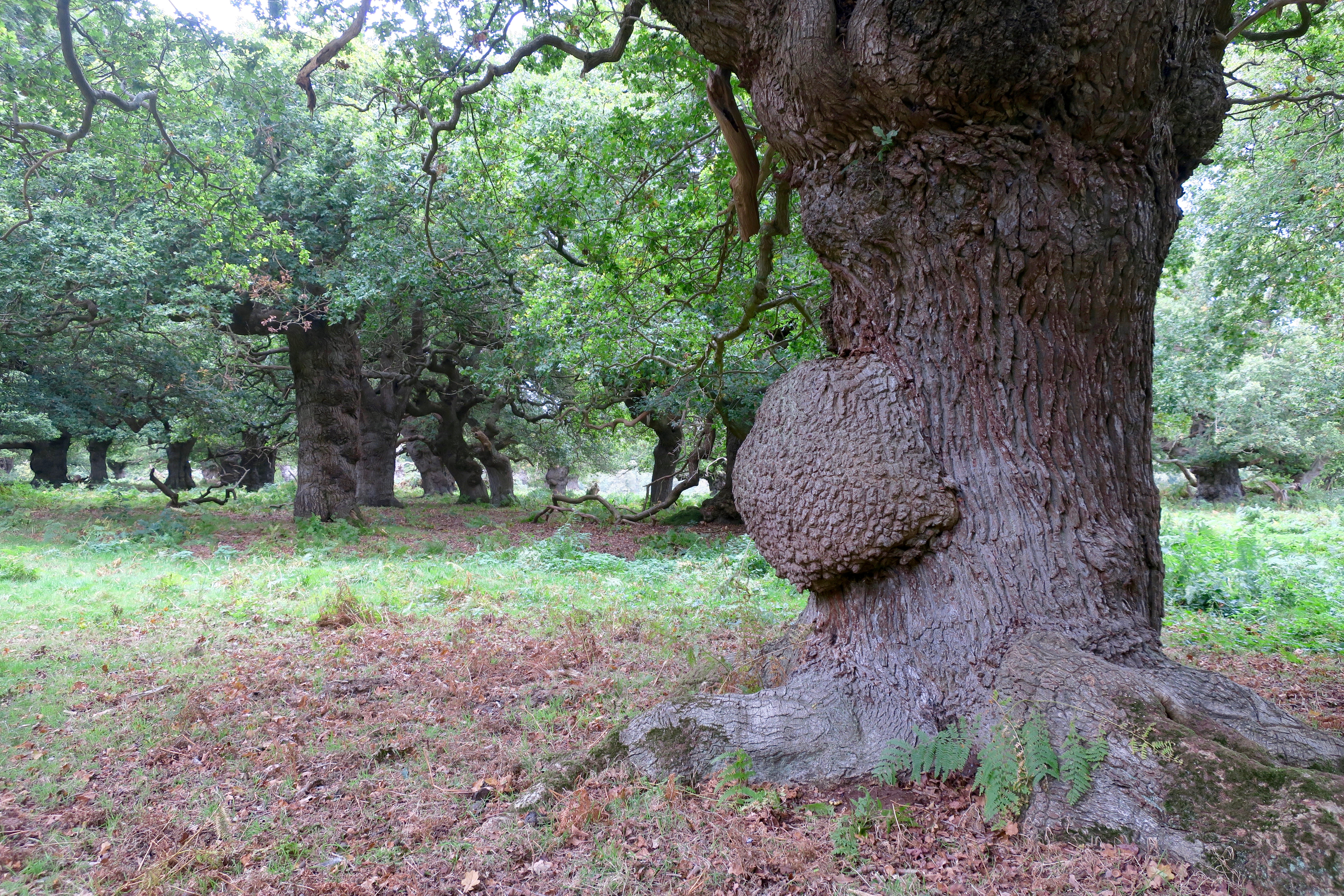
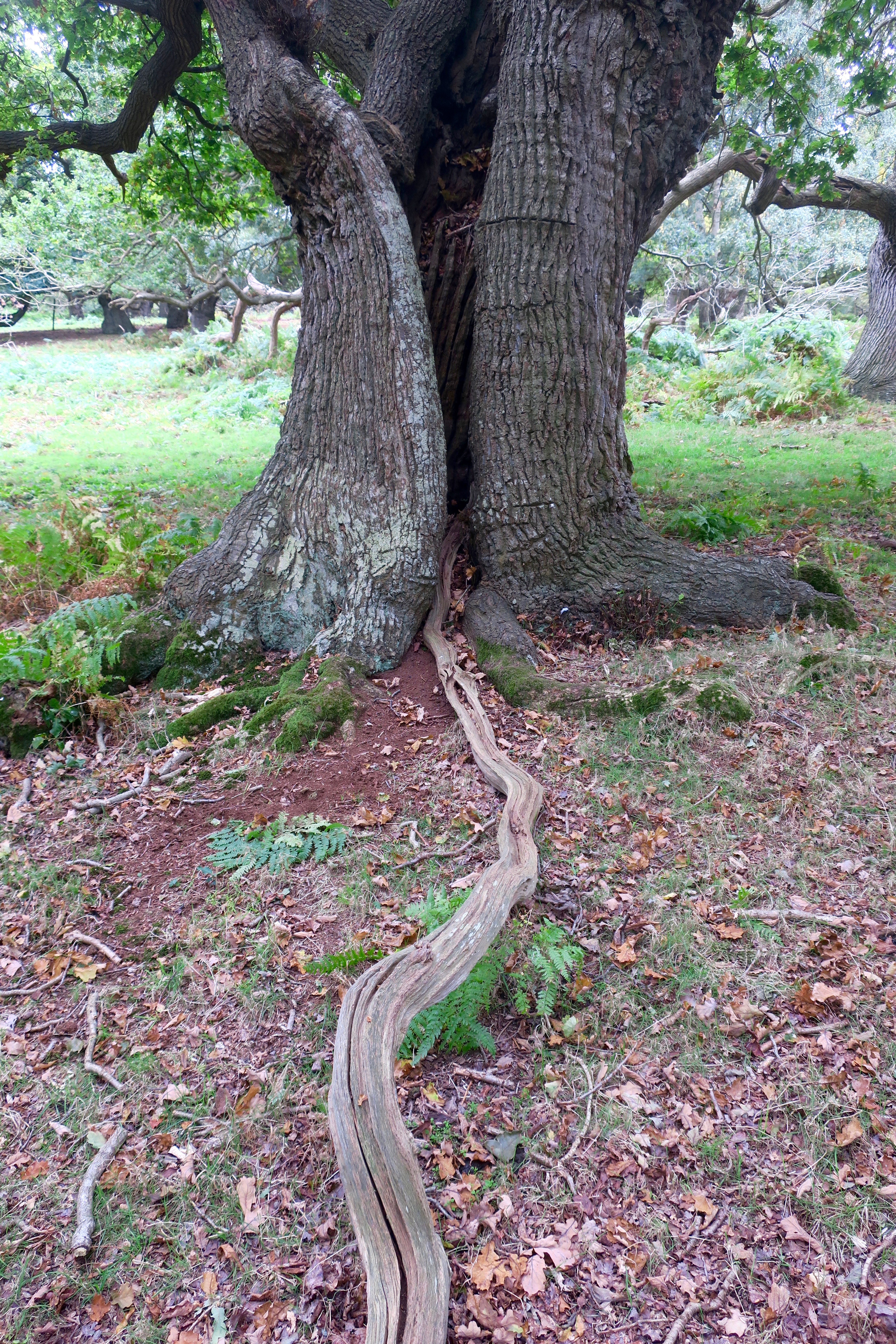

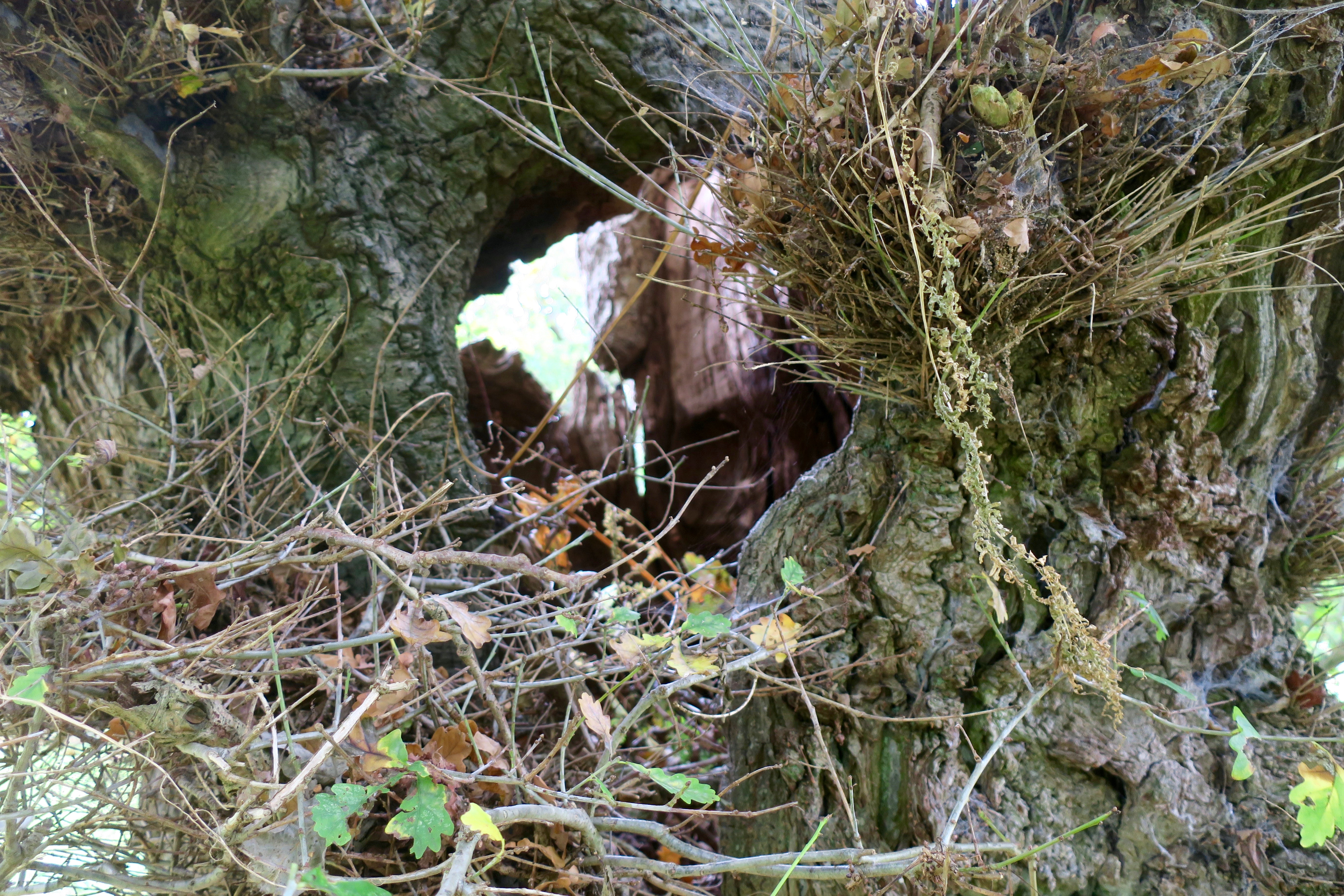
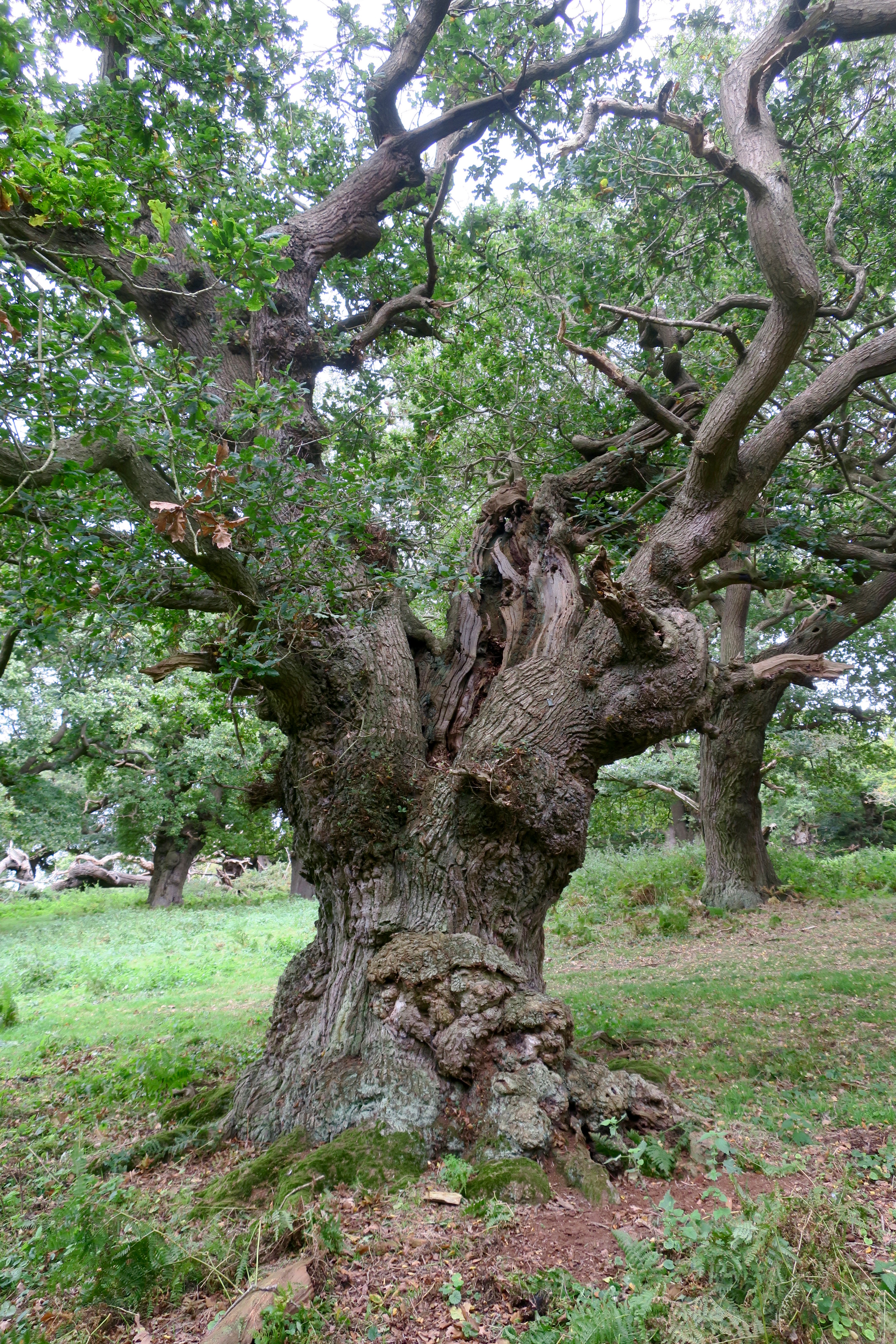
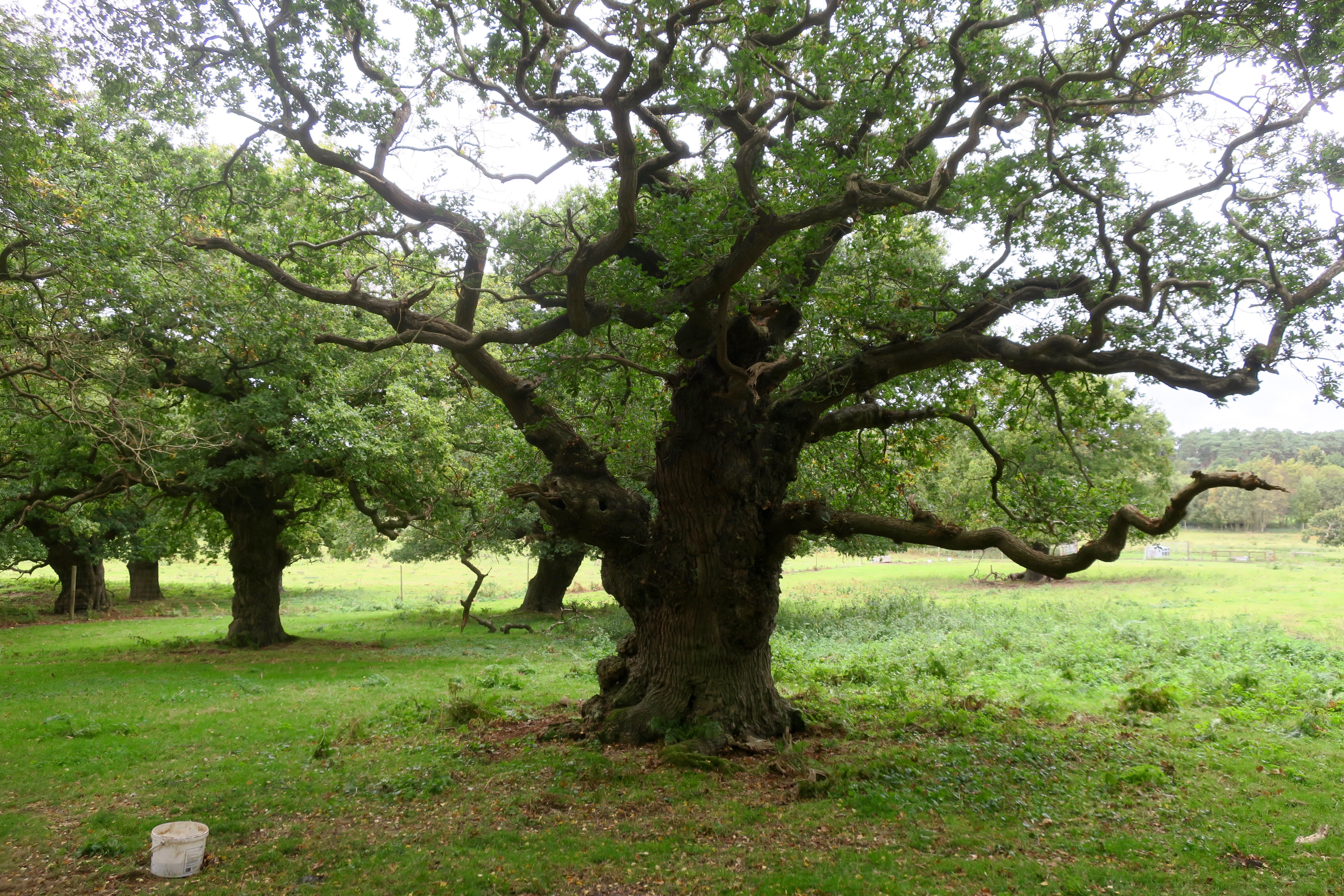
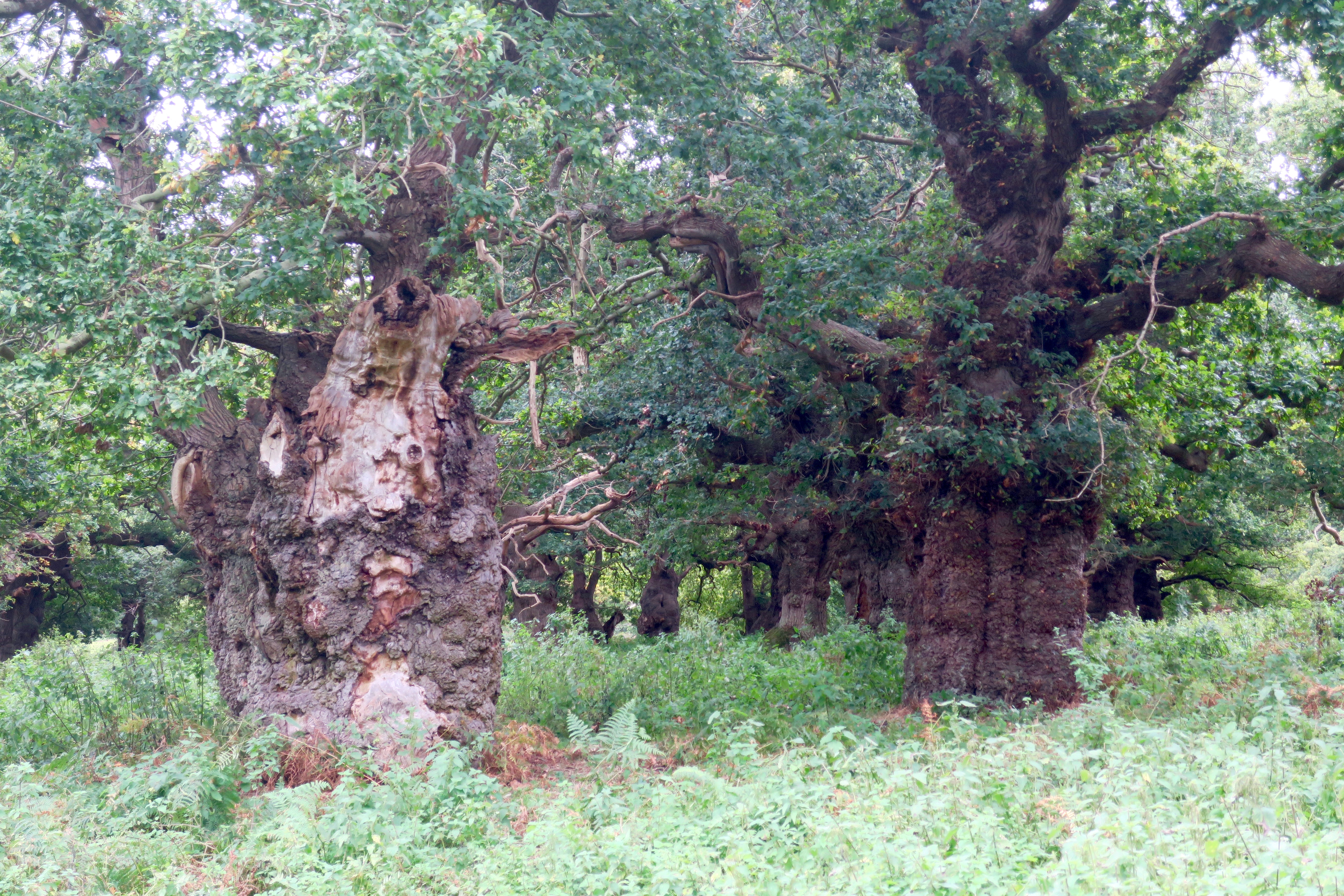
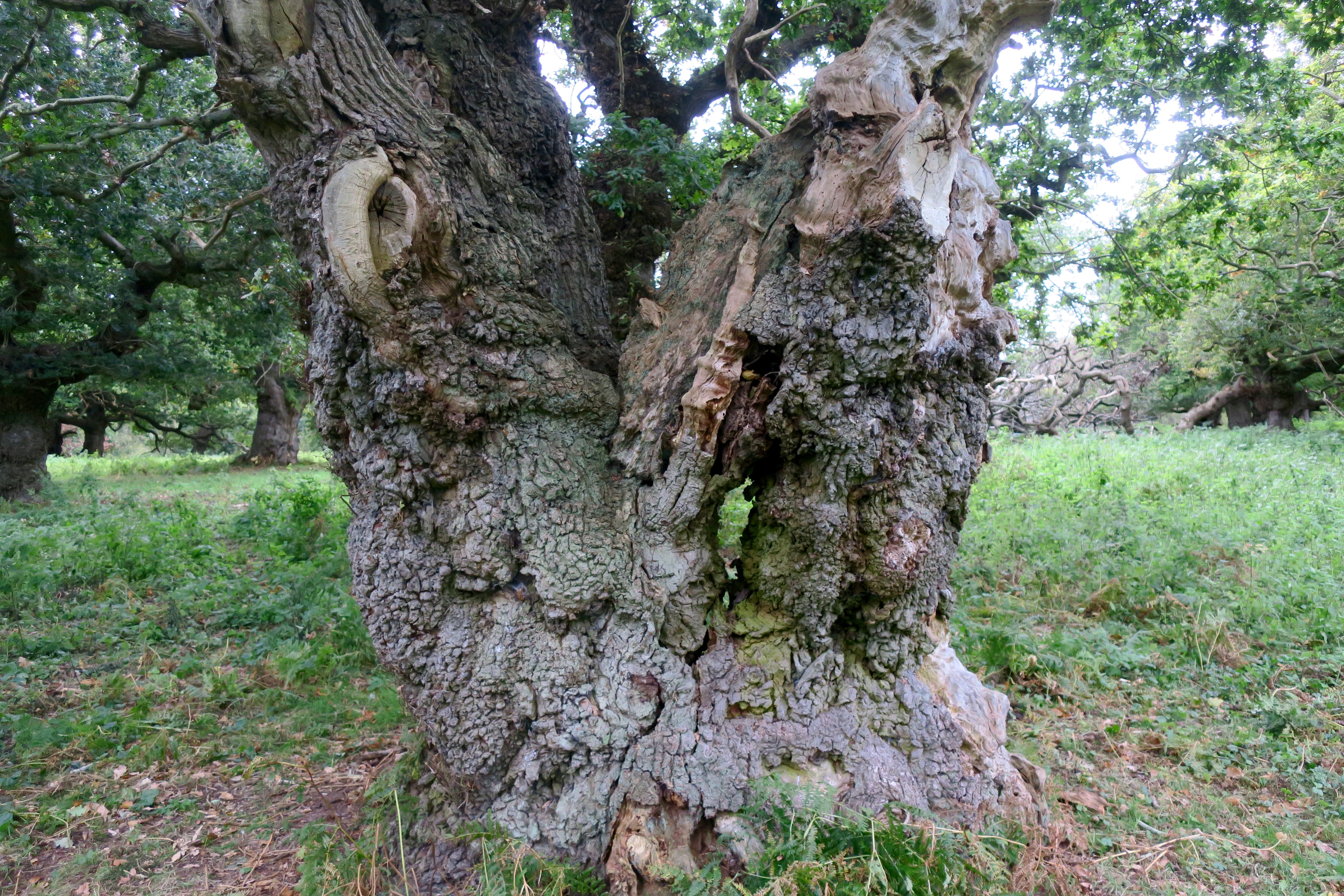

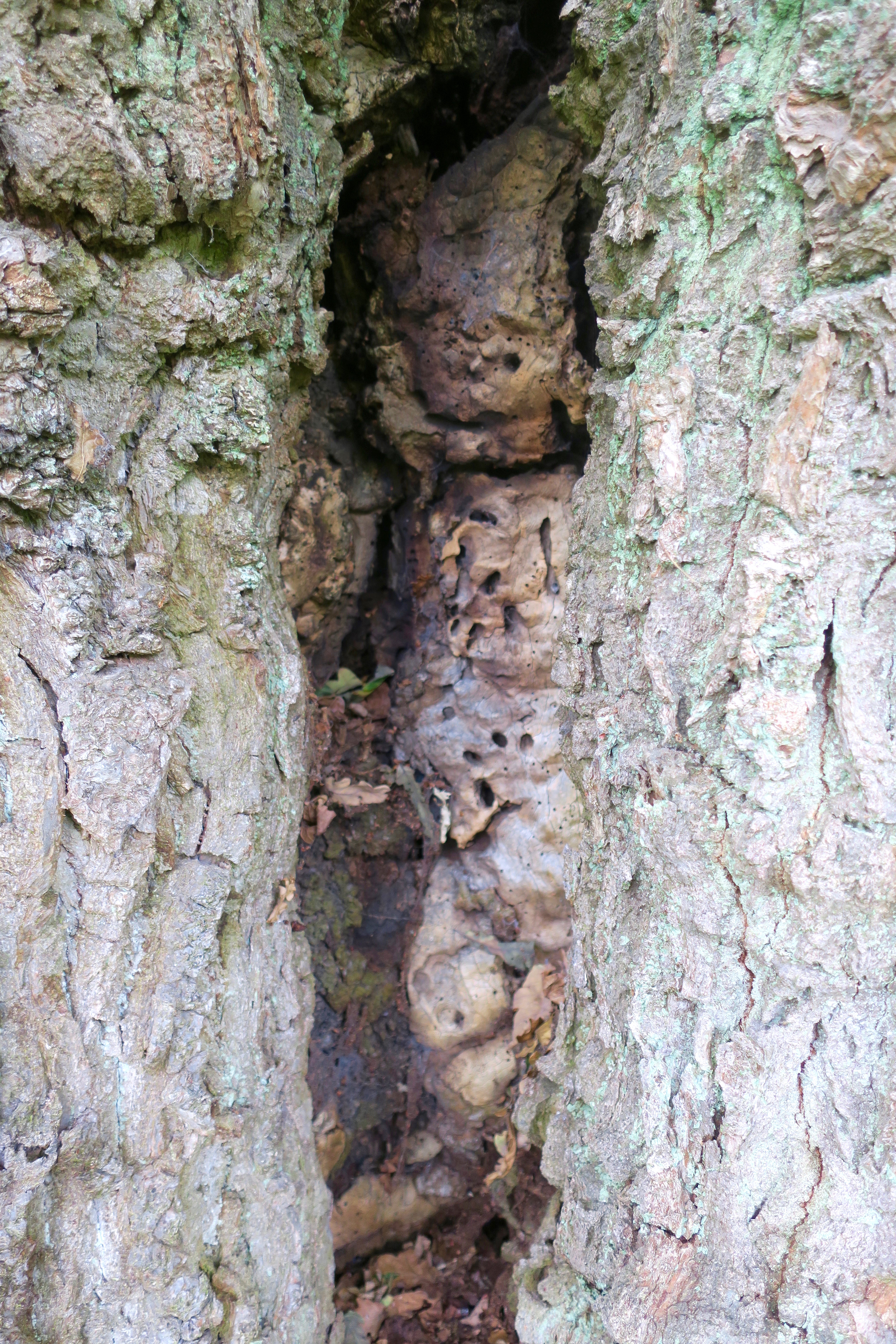
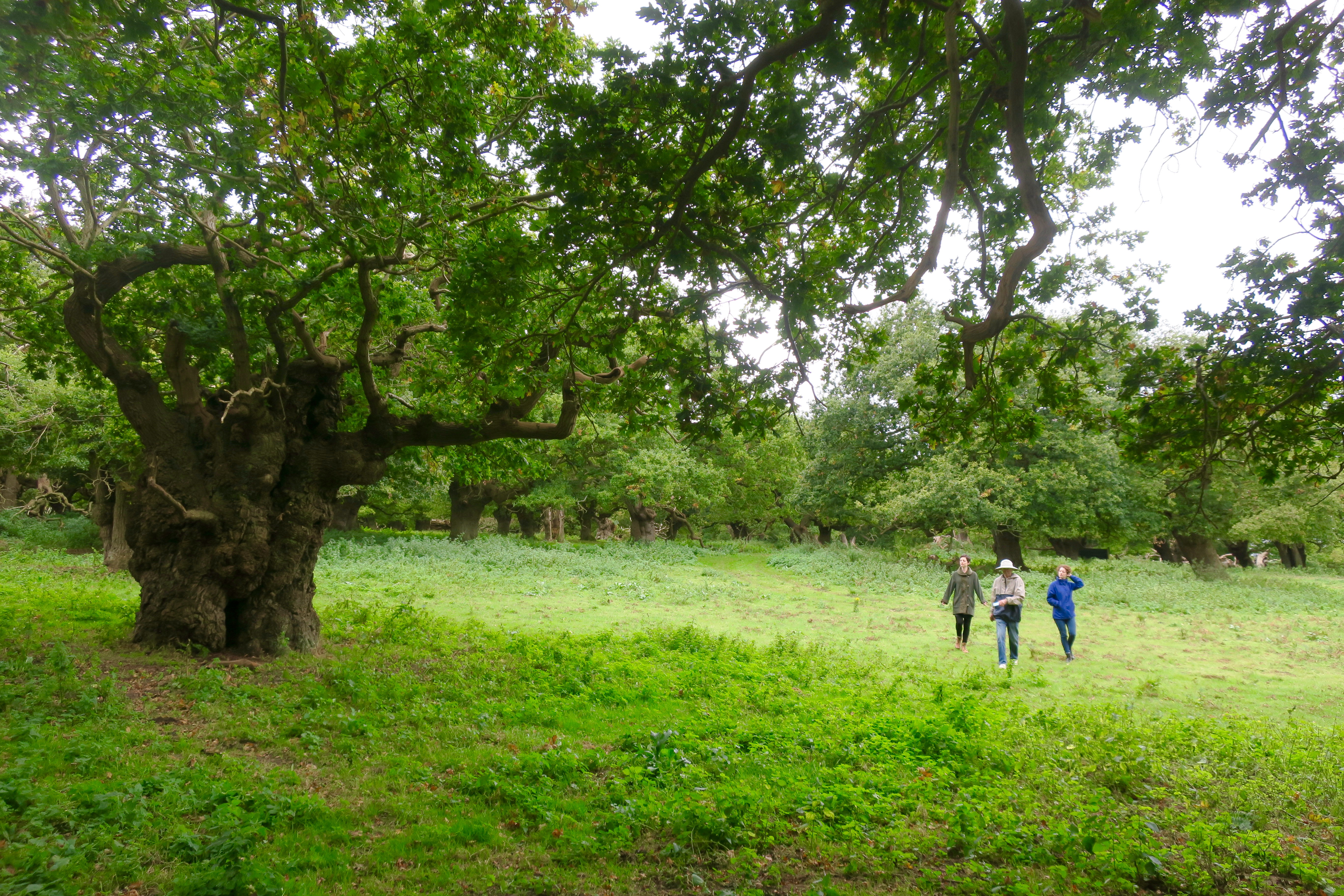


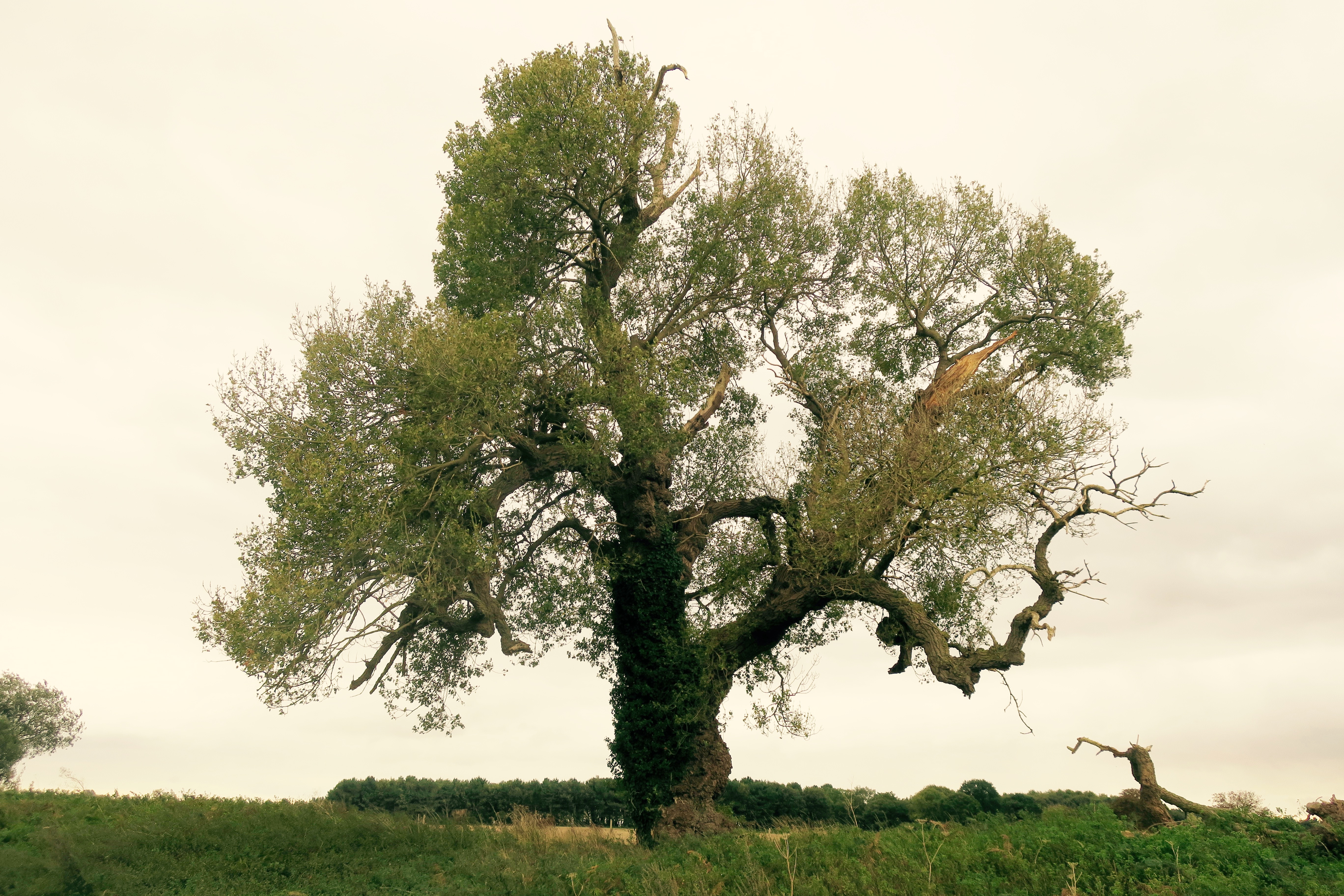
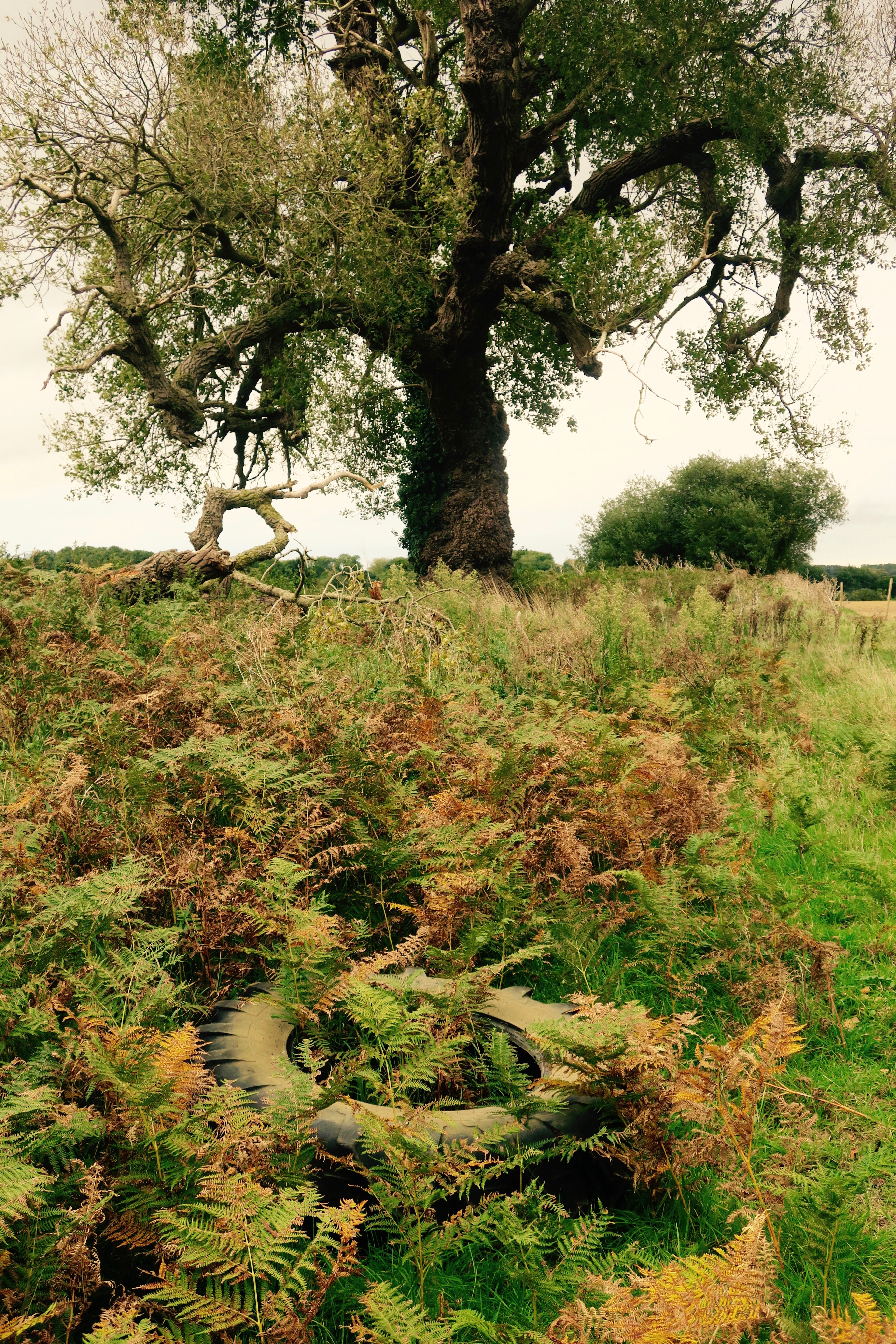
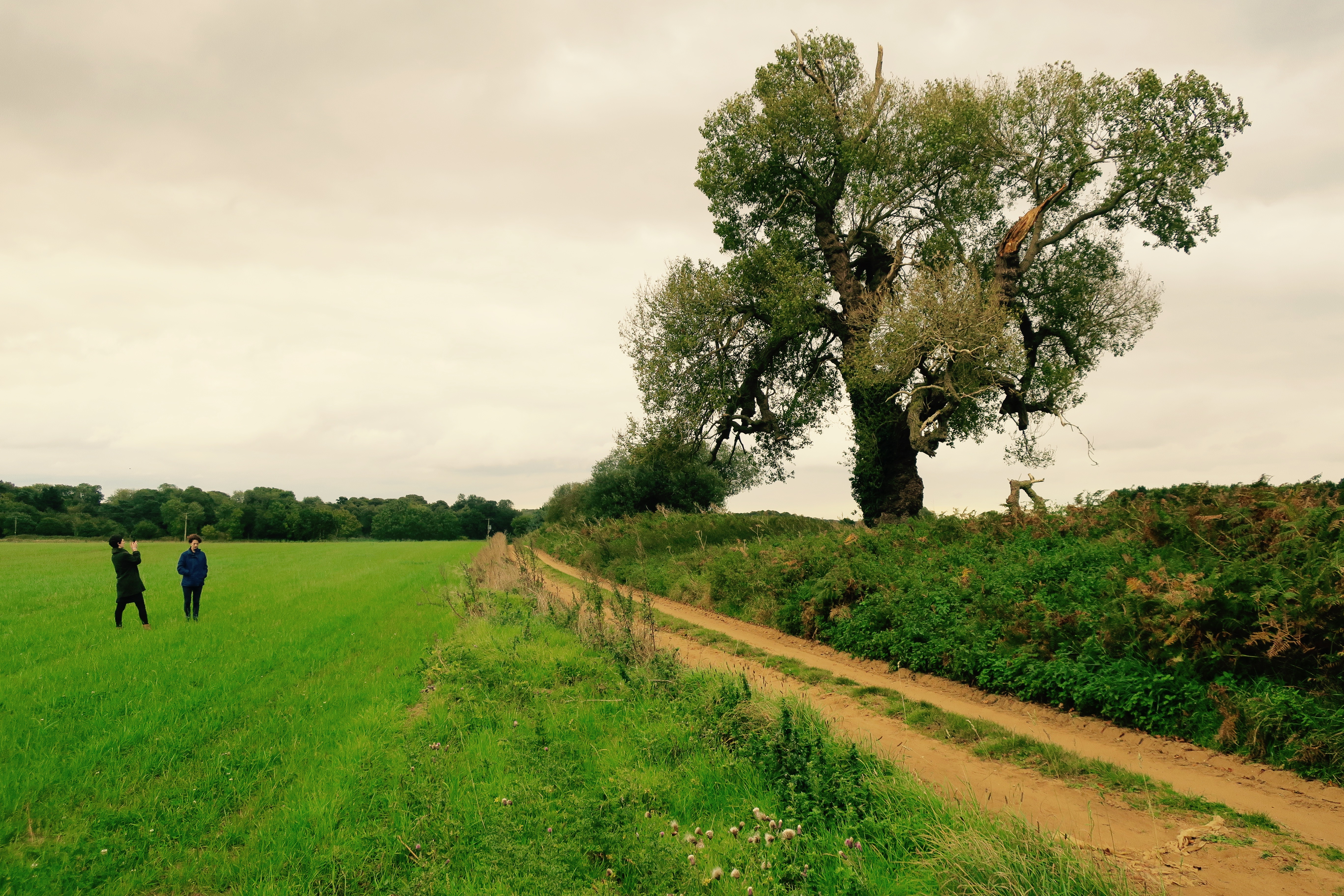

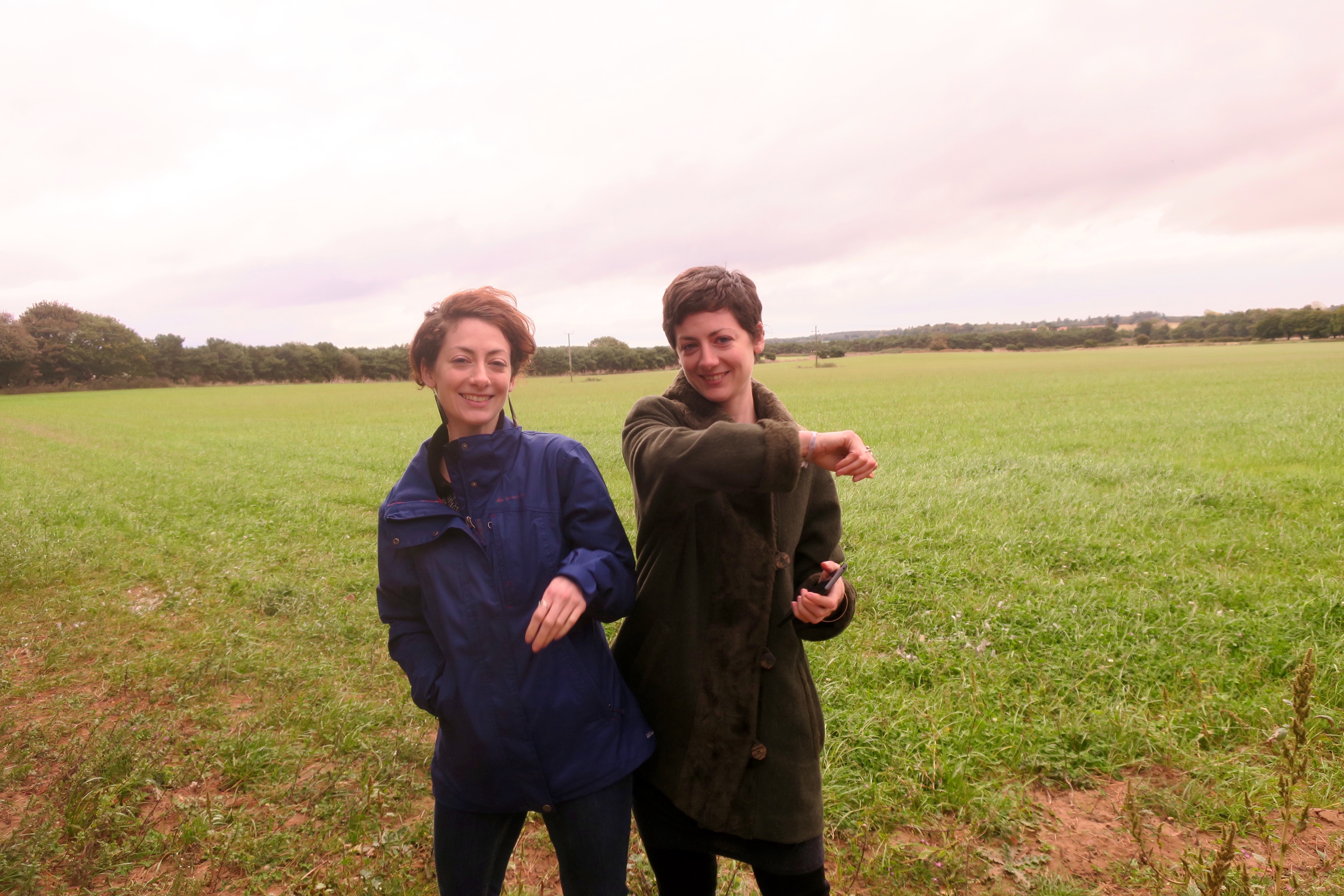
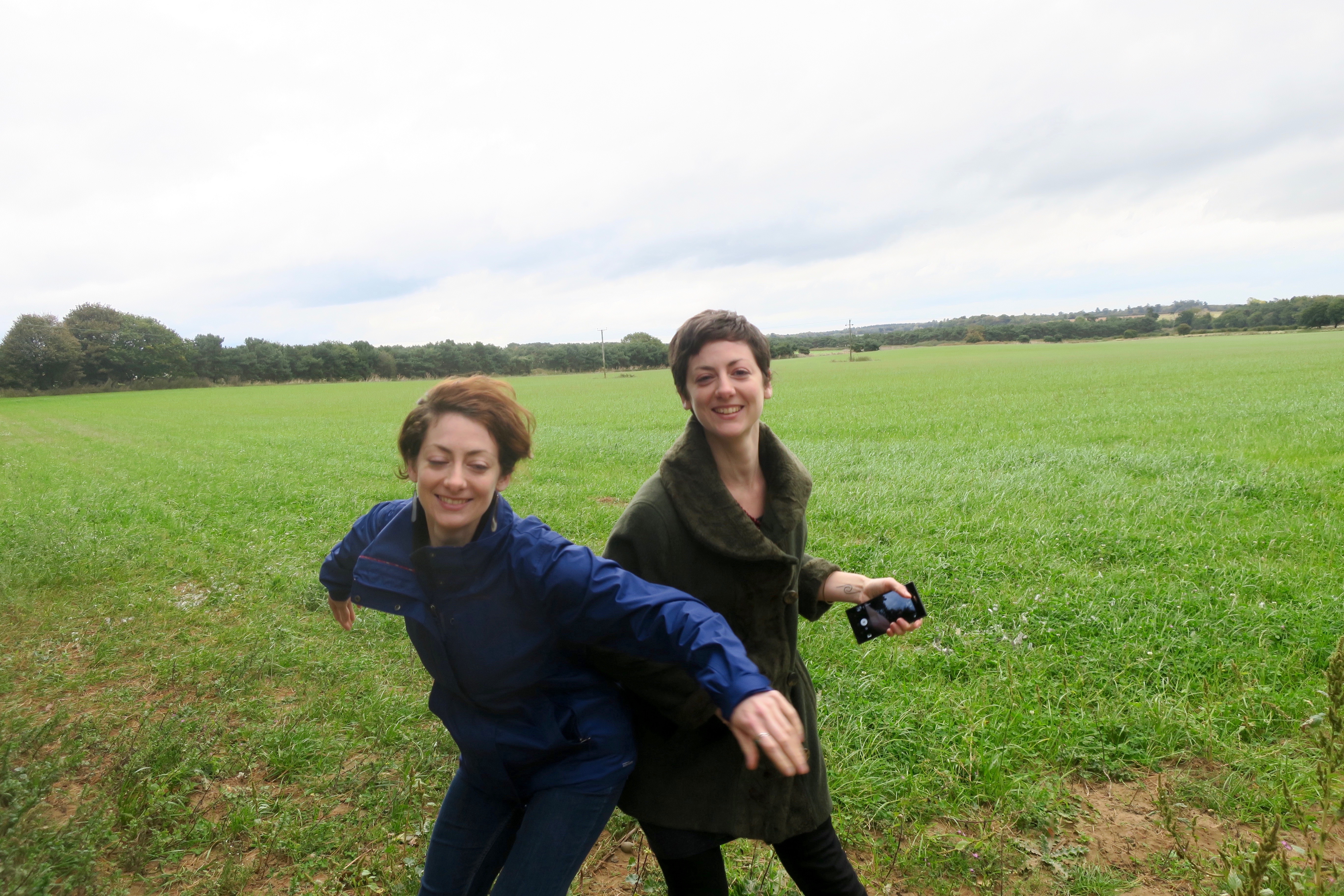

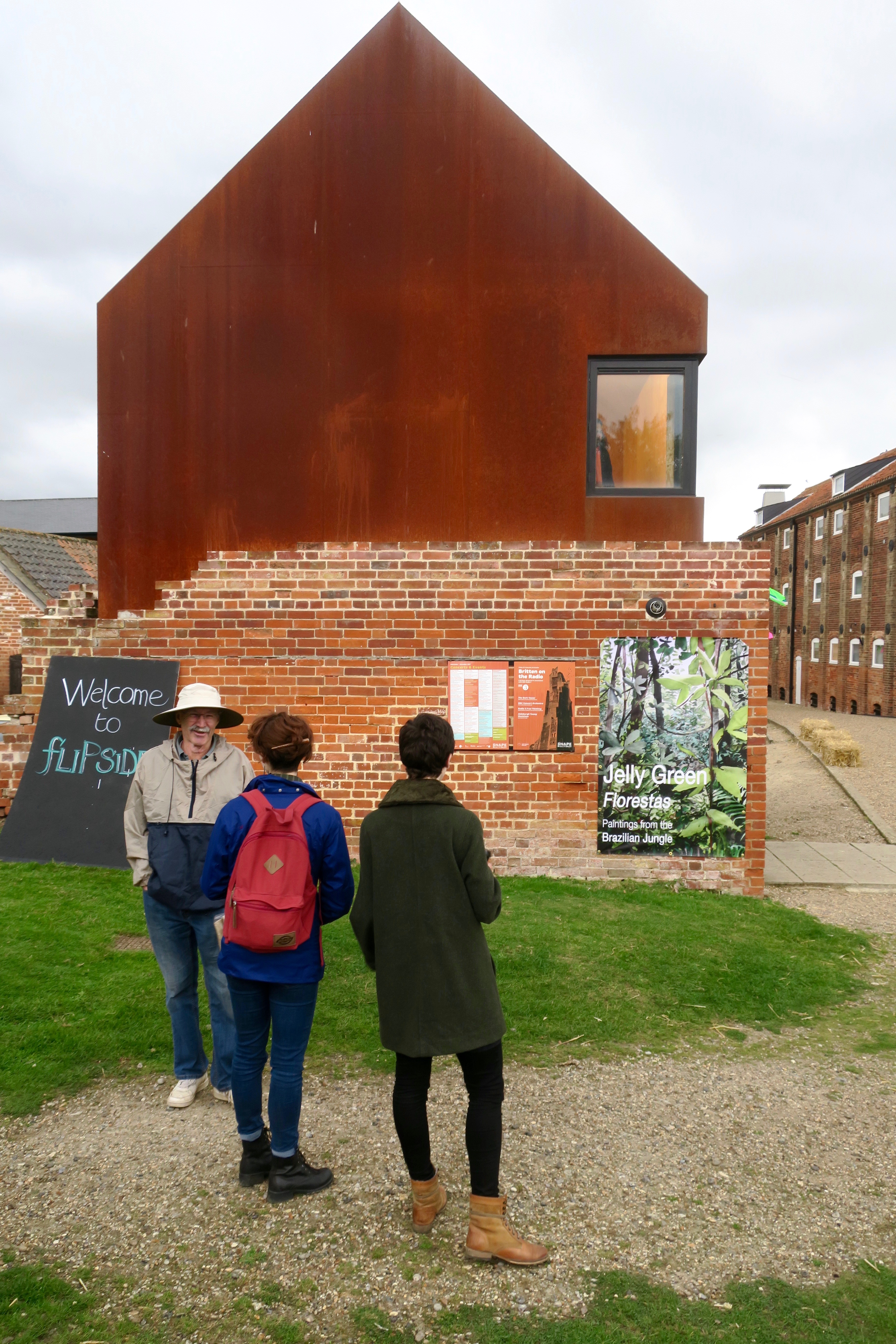
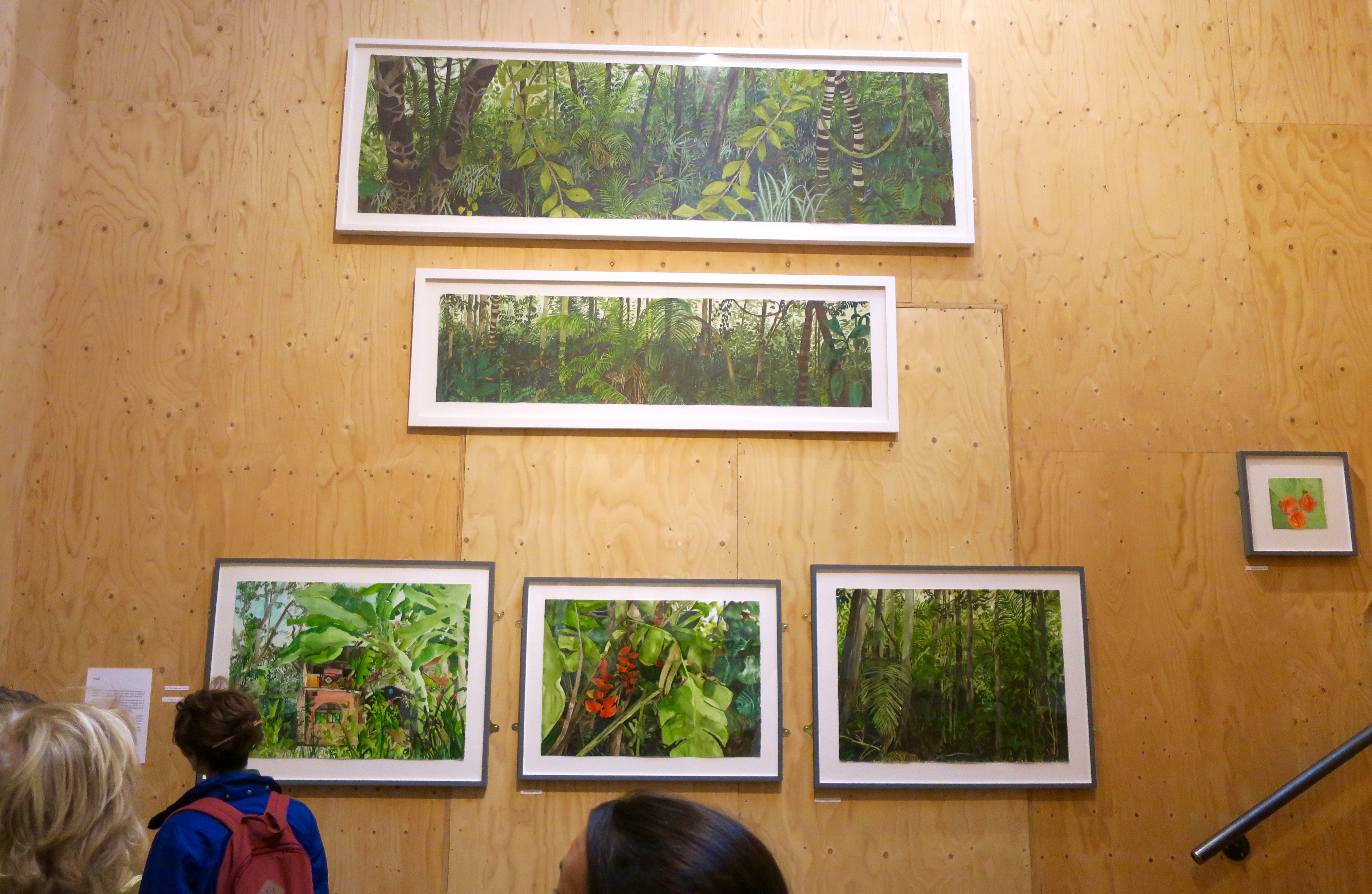
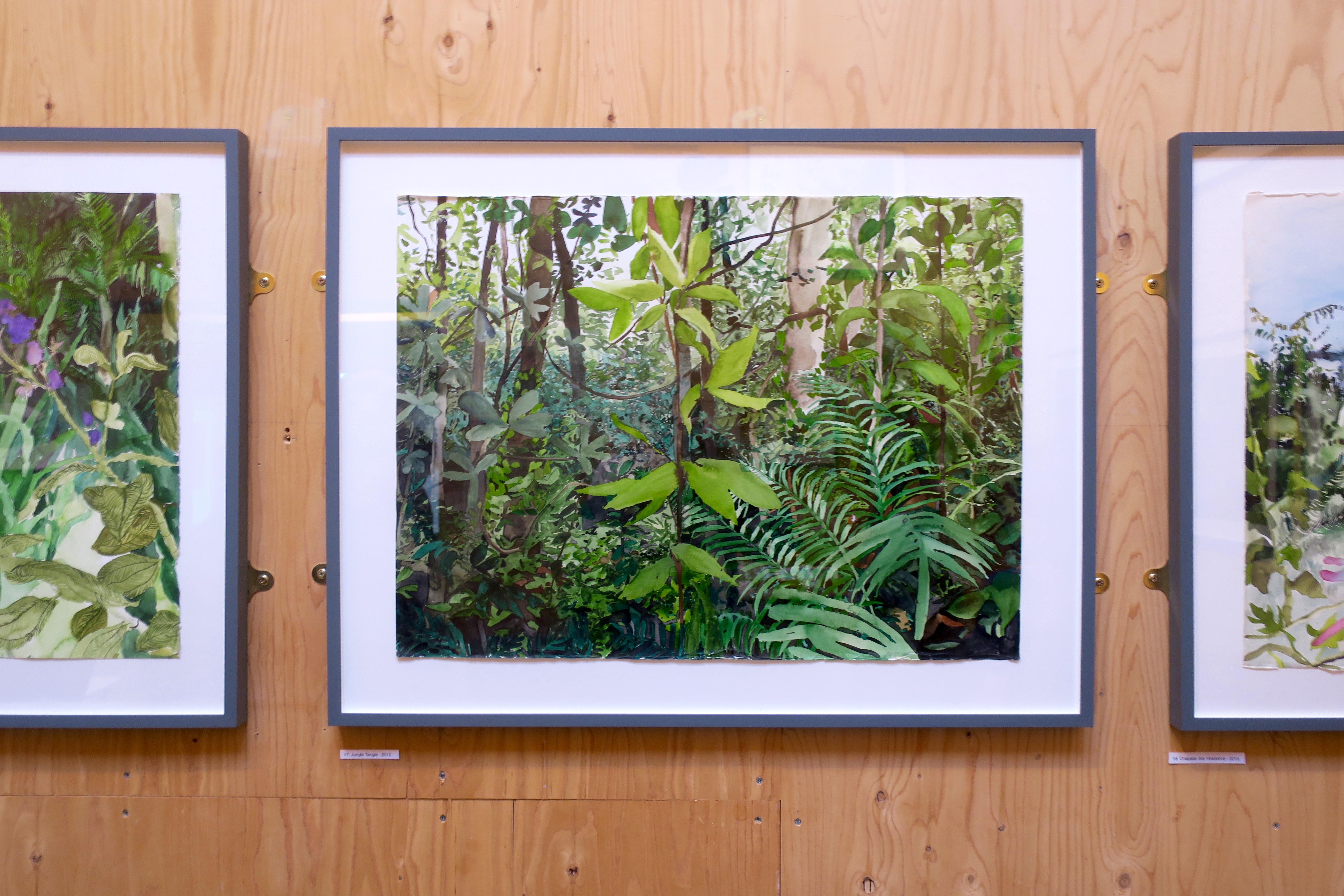

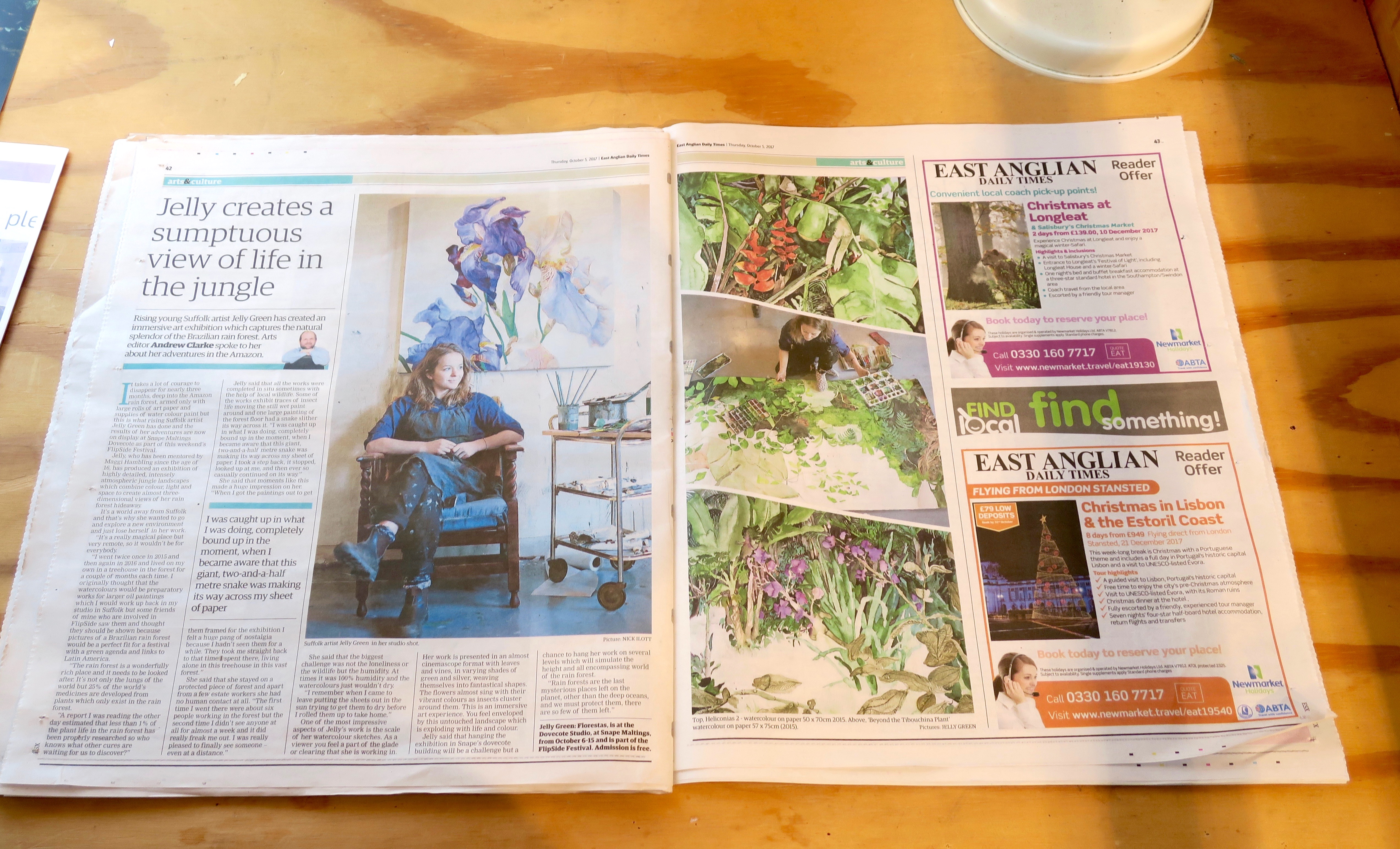


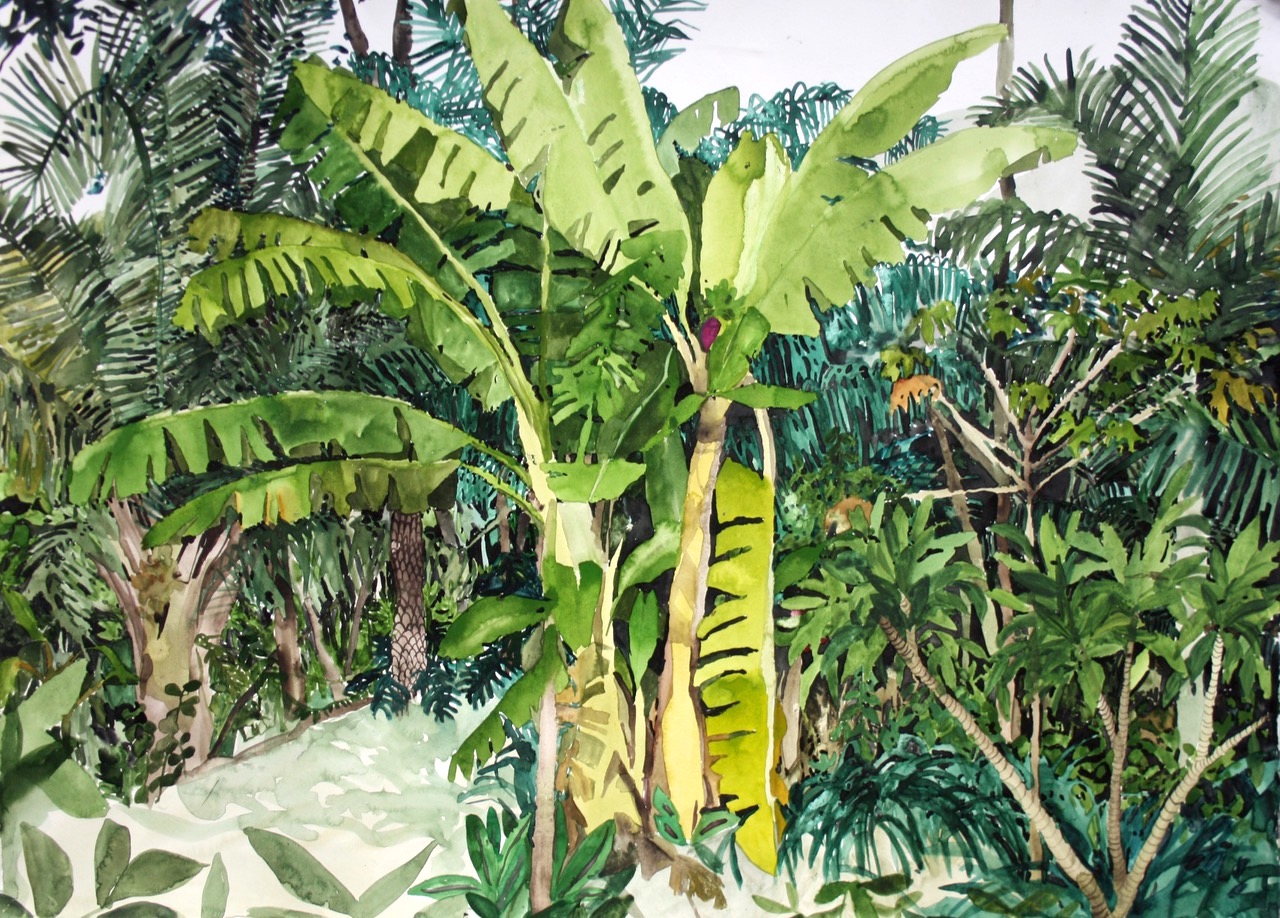
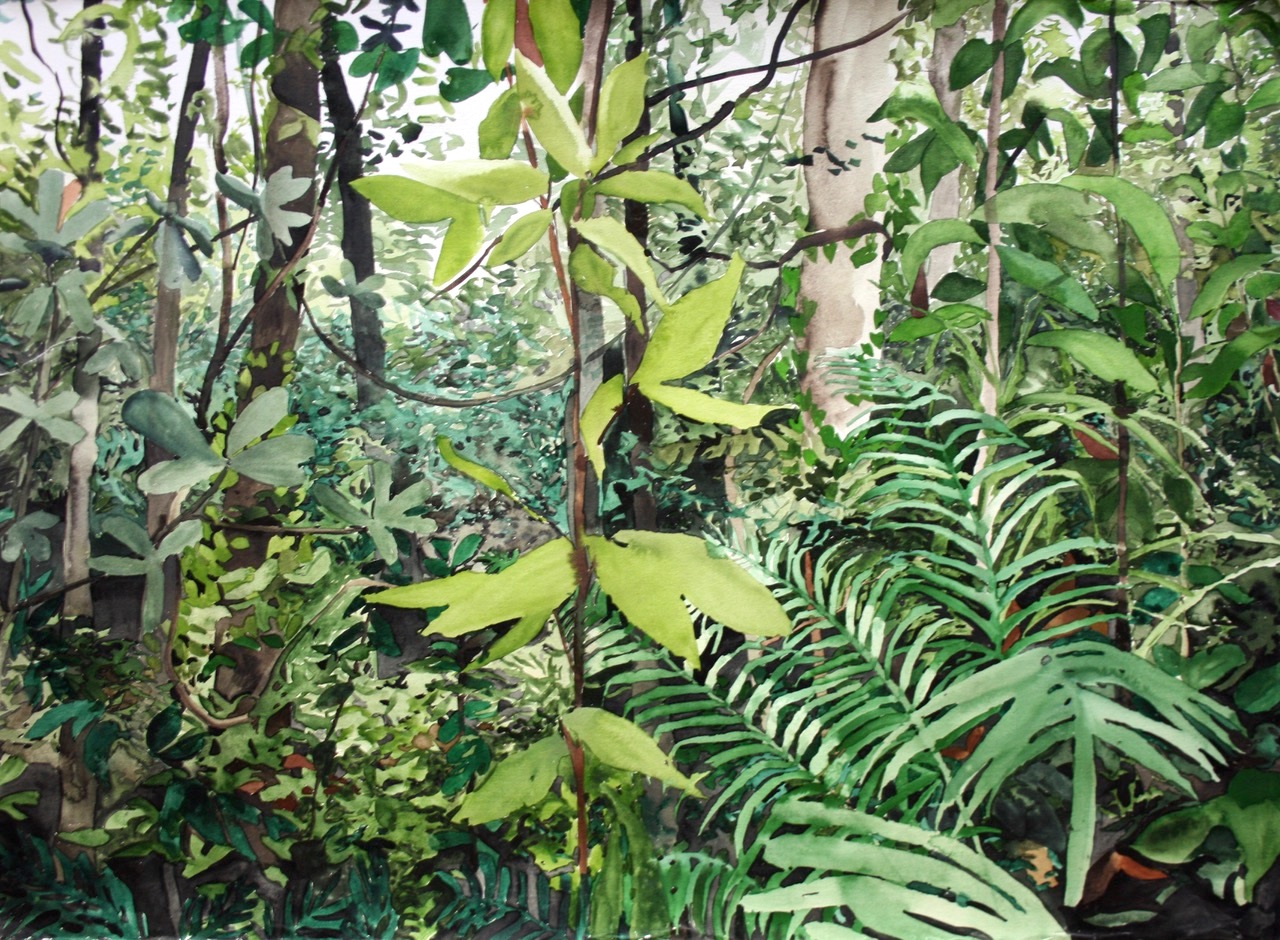


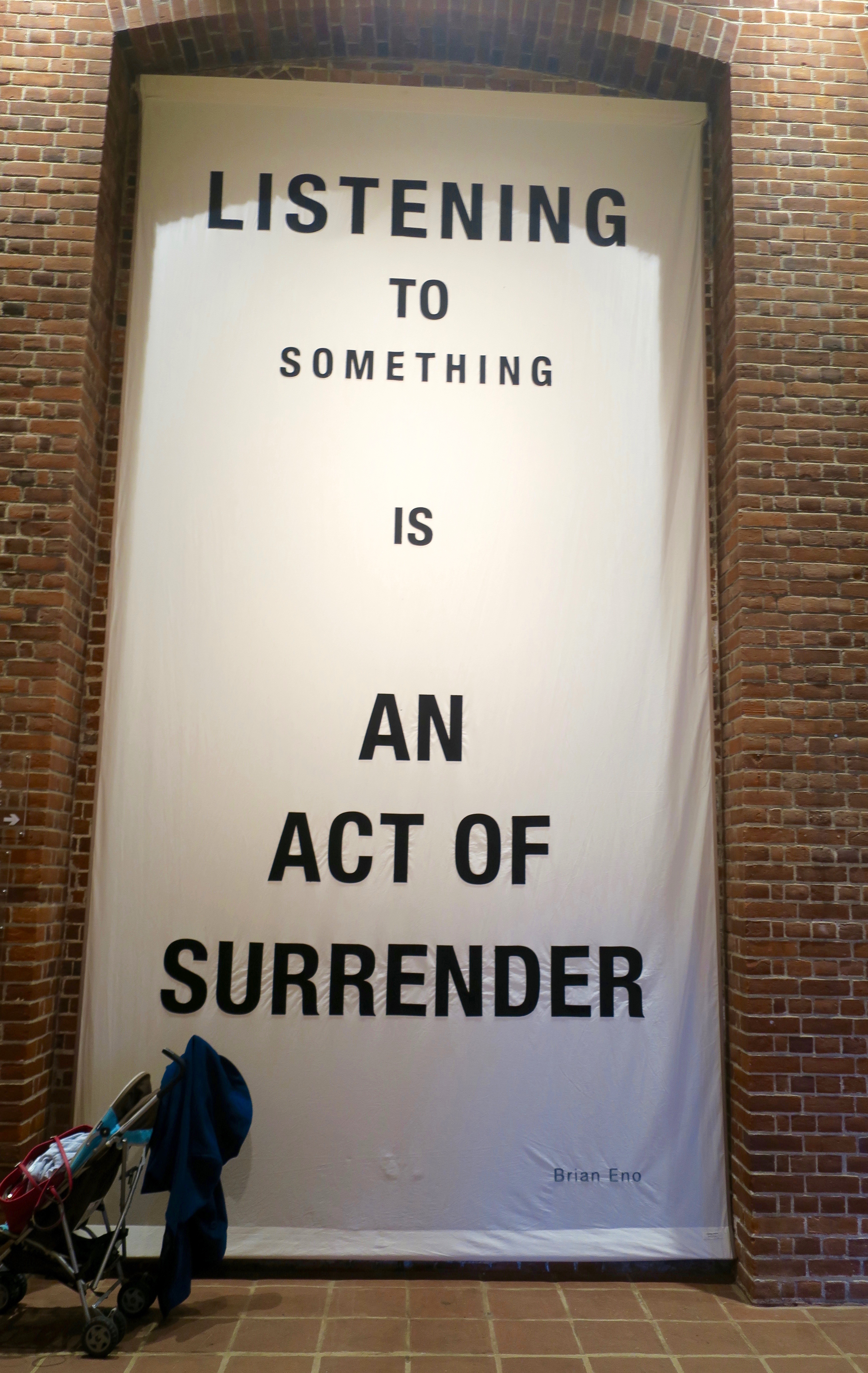
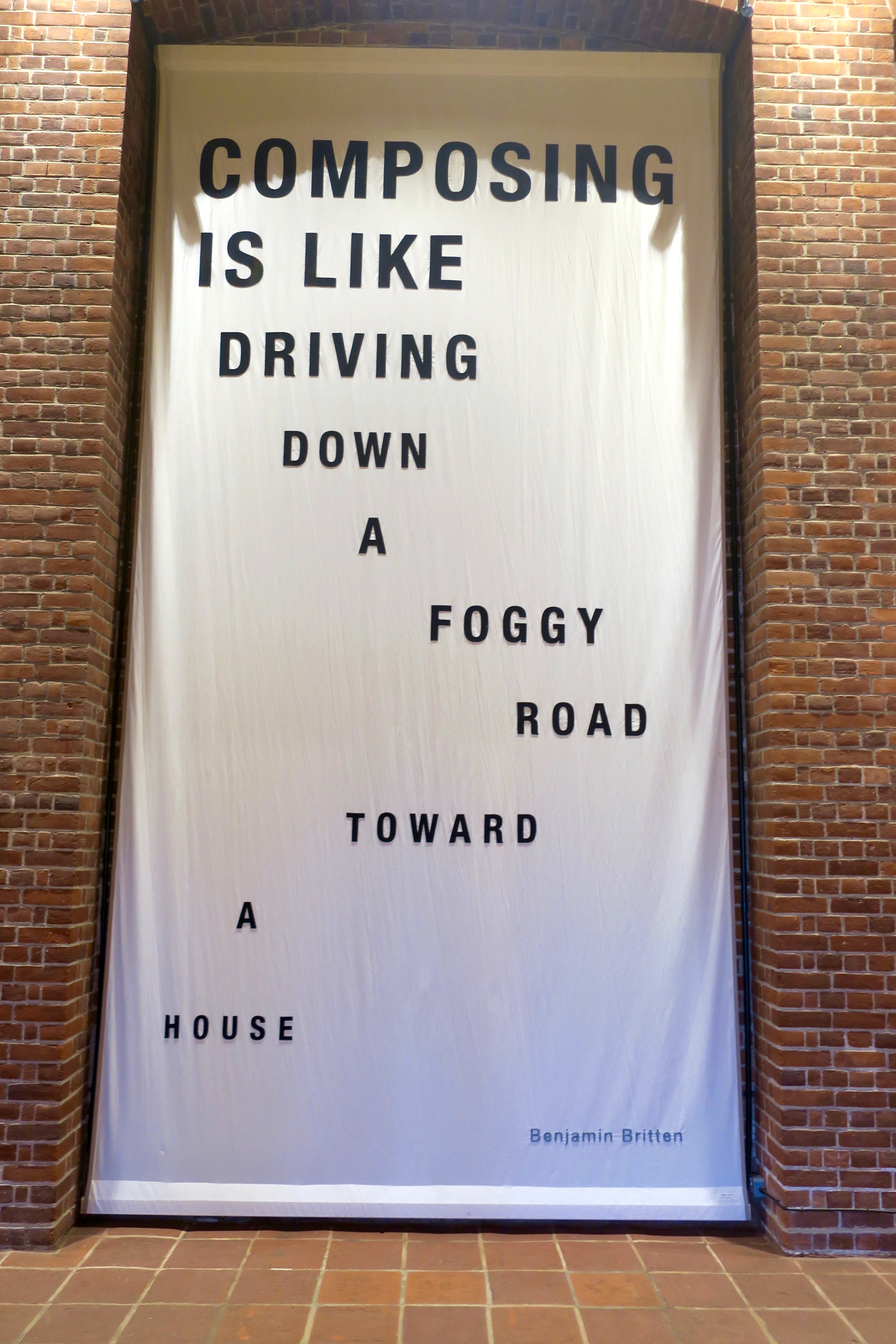


Reading this while sitting outside on an overcast day makes me feel like I’m almost there – roaming with the Ents. Thanks a lot Chris.
I’m sure if you’d been with us you would have found Treebeard here.
As Lottie and Maura will testify, watching Chris in bliss surrounded by ancient pollarded oaks was as much fun as seeing and learning of the oaks. One cool fact we learned is that the spacing of the oaks is not a function above ground for light but a function of available water below ground. What a great walk in the woods, capped off by seeing Jelly Green’s jungle paintings.
It was indeed a blissful encounter with some amazing trees.
How would you go about being given a special tour of the park? I’ve walked the footpath many times, but would love to go look at the oaks . . . and wasn’t the grand oak in Detectorists also in the park? Or have I got this wrong? Thanks, Rachael
We were very lucky to be invited. I didn’t know The Detectorists was filmed there, it’s one of my favourite tv programmes but I hadn’t noticed Staverton Park. Thanks for pointing it out. There’s a nice link here – https://www.livefortheoutdoors.com/tv-location-walks/walk-with-the-detectorists.
Hi would really like to see the tree in detectorists is it possible to be give location of tree